BrainVoyager (BV) version: 3.2 – hardware license
Stimuli for Retinotopic Map: rotating wedge and expanding ring or/and shrinking ring
Useful resources:
BV UserGuide
BV support http://support.brainvoyager.com/
Vision Group at UMRAM, Bilkent University http://visionumram.blogspot.com.tr/p/retinotopy.html
Terminology
Run: display of one type of stimulus such as wedge-run.
Cycle: duration of stimulus presentation from the starting point to the return to starting point such as from smallest ring to the biggest ring for an expanding ring stimulus.
Condition: each type of individual stimulus such as ring with a size 14 degree-of-visual-field.
Step1. Create .fmr files for all functional run
New Doc Wizard → follow the steps for FMR
– Use DICOM as file format.
– Your data file is saved by BV automatically.
Step2. Preprocessing for all .fmr files
Anaysis → FMR Data Processing
– 3D motion correction takes a few minutes and also “touches” the data. If you can, don’t perform 3D motion correction.
– Your preprocessed data file is saved by BV automatically.
Step3. Create .vmr file for the t1-weighted or Anatomical run
New Doc Wizard → follow the steps for VMR
– Use DICOM as file format.
– Your data file is saved by BV automatically.
Step4. ACPC transformation
Volumes → 3D Volume Tools → Full Dialog → Talairach → Auto-ACPC-TAL
– Takes several minutes.
– Your data file is saved by BV automatically.
Step5. FMR-VMR Coregistration
Volumes → 3D Volume Tools → Full Dialog → Coregistration → FMR-VMR Coregistration
– Initial and Final alignment files are saved automatically by BV.
Step6. Create .vtc file
Analysis → Create Volume Time Course (VTC) file
Step7. Attach .vtc file to subject_ACPC.vmr
Analysis → Link Volume Time Course (VTC) file
Possible error (shown in slide show): “VTC is in ACPC space while reference space of VMR is unknown”
If you see such an error window, you need to change the type of VMR file from Unknown to ACPC
– File → VMR properties.
Step8. Segmentation of cortex
Volumes → 3D Volume Tools → Full Dialog → Segmentaton → Auto-Seg
Step9. Inflation of mesh
Meshes → Mesh Morphing
– You can perform smoothing if you need.
Step10. Stimulation protocol
Analysis → Protocol
– “Add” for each condition including the blank.
– Click “Show Plot”.
– x-axis shows your TR points. “Size” value is the interval between each x-point. “Offset” value shifts the x-points.
– While one condition is on the Condition list, click the TR points at which the protocol includes the corresponding condition.
Step11. Cross-correlation for all run
Analysis → Compute Linear Correlation Maps
– Required: a linked VTC and an applied protocol.
– Right-click for your first stimulus and Left-click for the remaining conditions.
– “Nr of lags” is the duration of one cycle in TR-points.
Step12. Map on mesh
Meshes → Surface Maps
– “Create SMP” while your VMR file on which you performed Cross-correlation for one run is opened.
– After one map is added, back to VMR and perform correlation analysis for another run.
– “Create SMP” for the second run.
Possible error: The resulting map can be at a very strange place. If you see such a strange result, you need to go Meshes → Mesh Morphing and select VMR file for “Use reference information from file”. Then, just Cancel and start Surface Mapping.
CHECK-LIST
If you have data for display of rotating wedge and expanding/shrinking ring stimuli:
- FMR files
- subject_wedge.fmr
- subject_ring.fmr
- Preprocessing
- subject_wedge.fmr
- slice-scan time correction
- temporal filtering
- 3D motion correction
- subject_ring.fmr
- slice-scan time correction
- temporal filtering
- 3D motion correction
- subject_wedge.fmr
- subject.vmr
- Coregistration and Create VTC
- subject.vmr + subject_wedge
- Create VTC for wedge
- subject.vmr + subject_ring
- Create VTC for ring
- subject.vmr + subject_wedge
- Open subject.vmr
- Auto-Segmentation, Mesh Morphing and Smoothing
- Save smoothed mesh (if you need, do it for both hemisphere)
- Map for wedge
- Link VTC: subject.vmr + subject_wedge.vtc
- Create and apply wedge protocol
- Cross-correlation for wedge
- Create SMP for wedge
- Map for ring
- Link VTC: subject.vmr + subject_ring.vtc
- Create and apply ring protocol
- Cross-correlation for ring
- Create SMP for ring
- Save your Surface Map
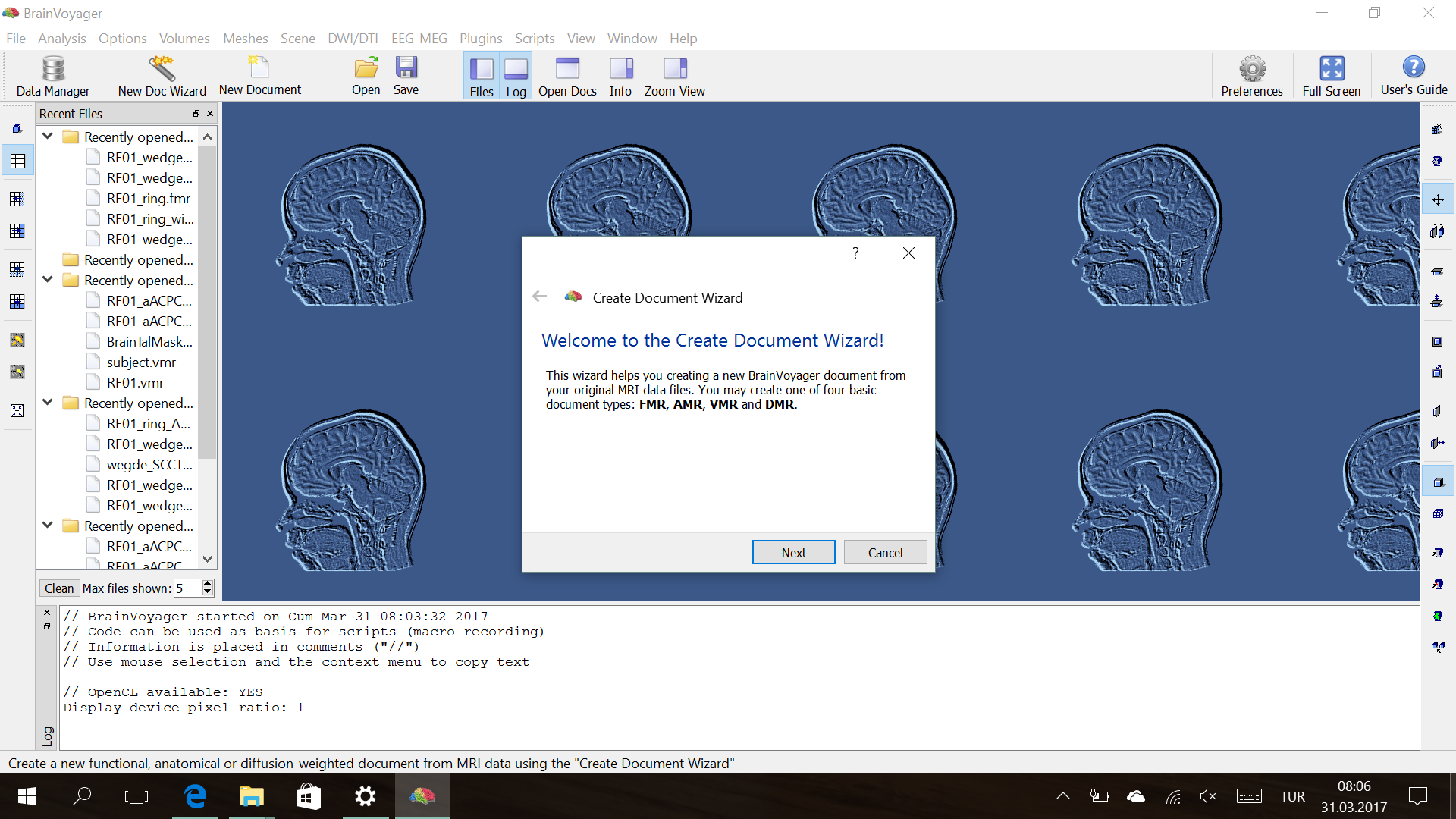
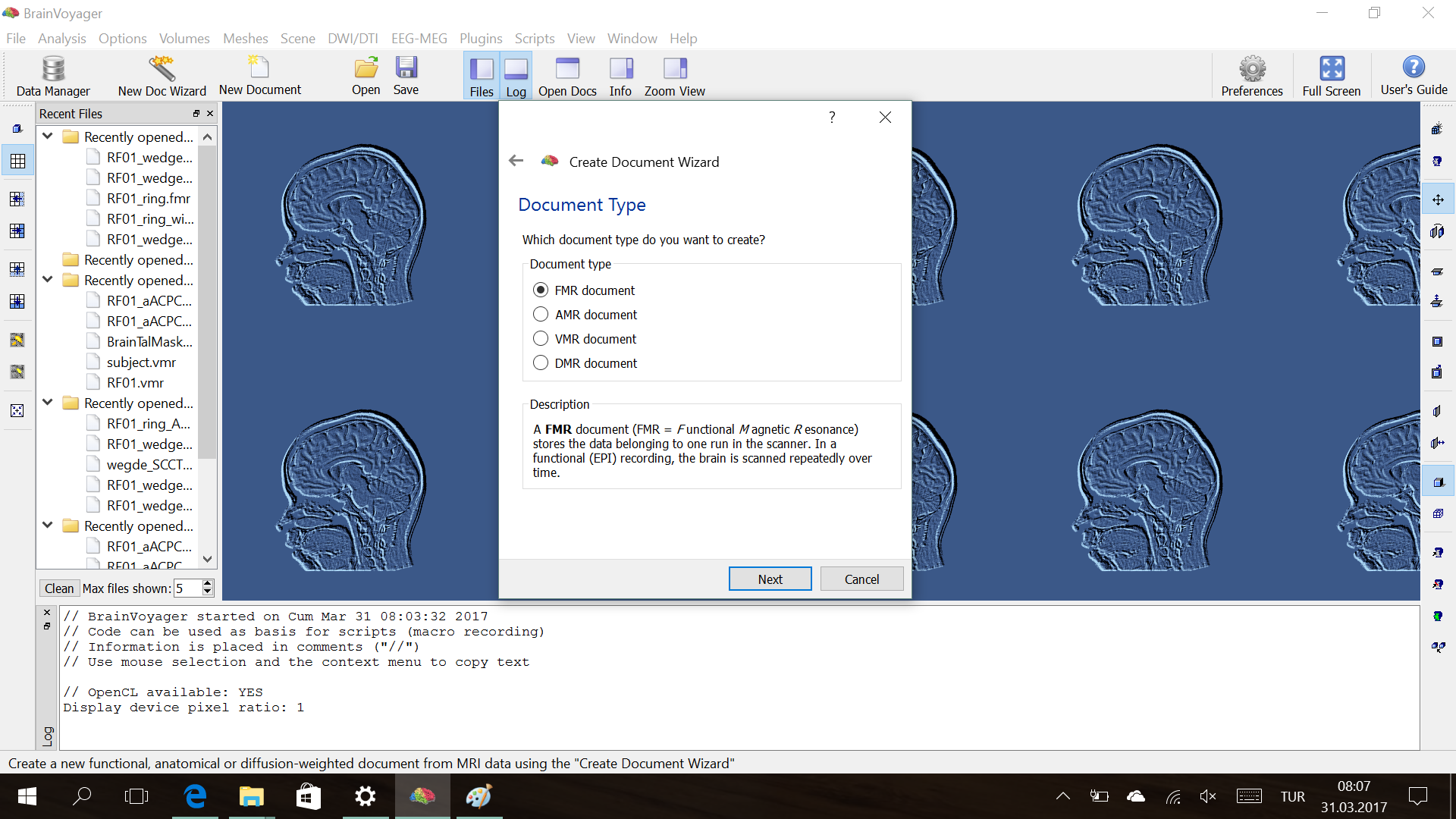

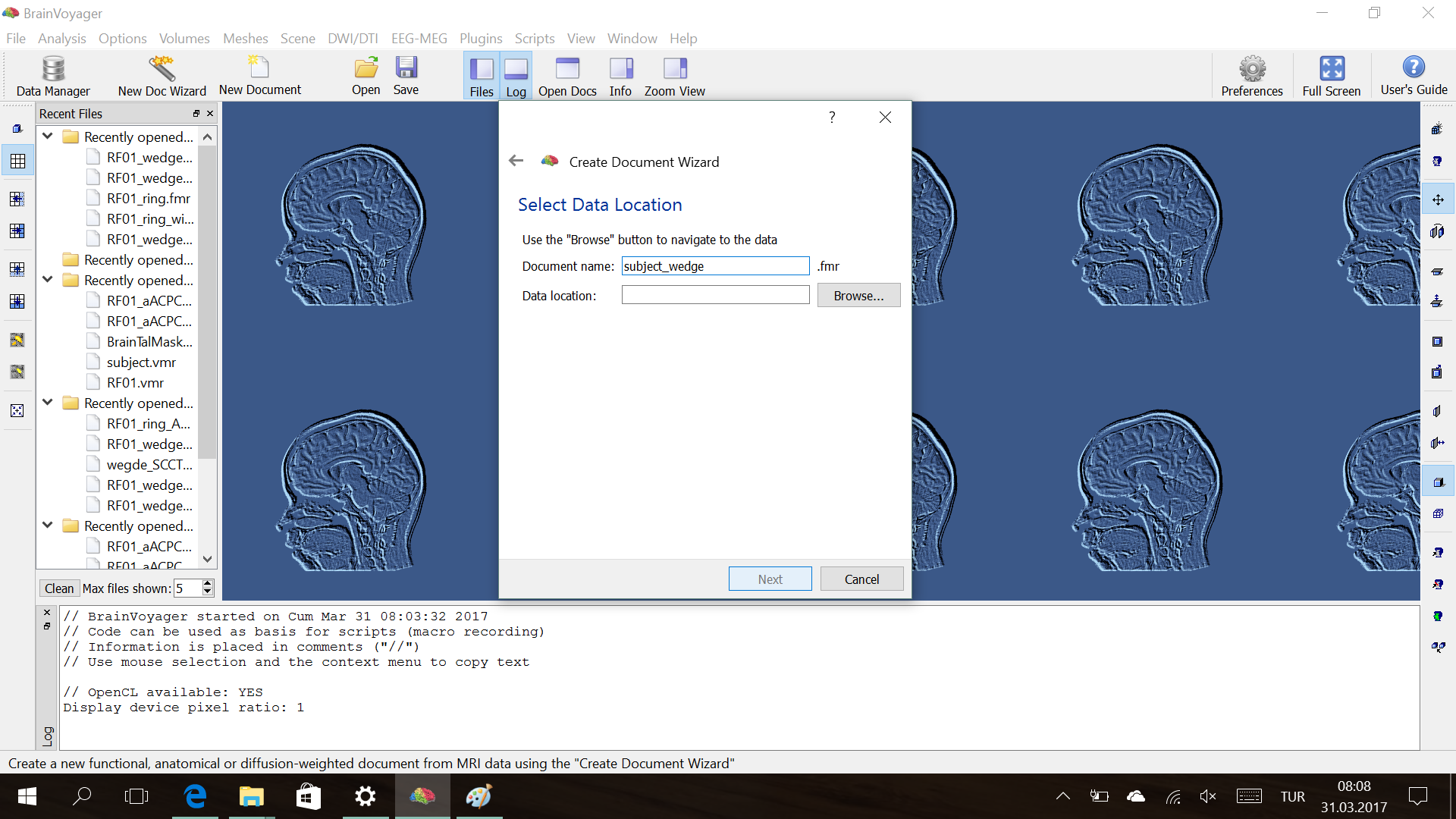
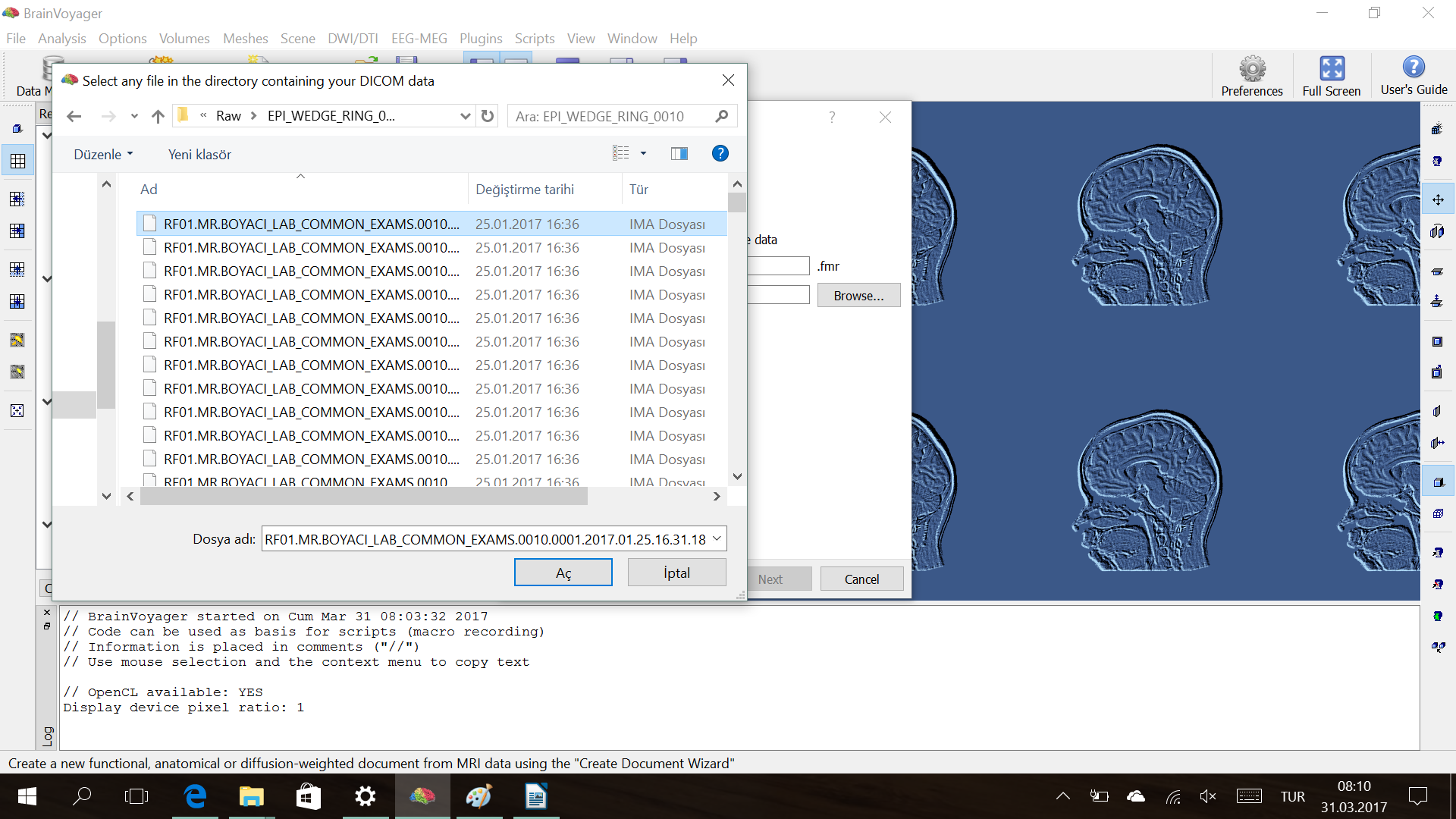


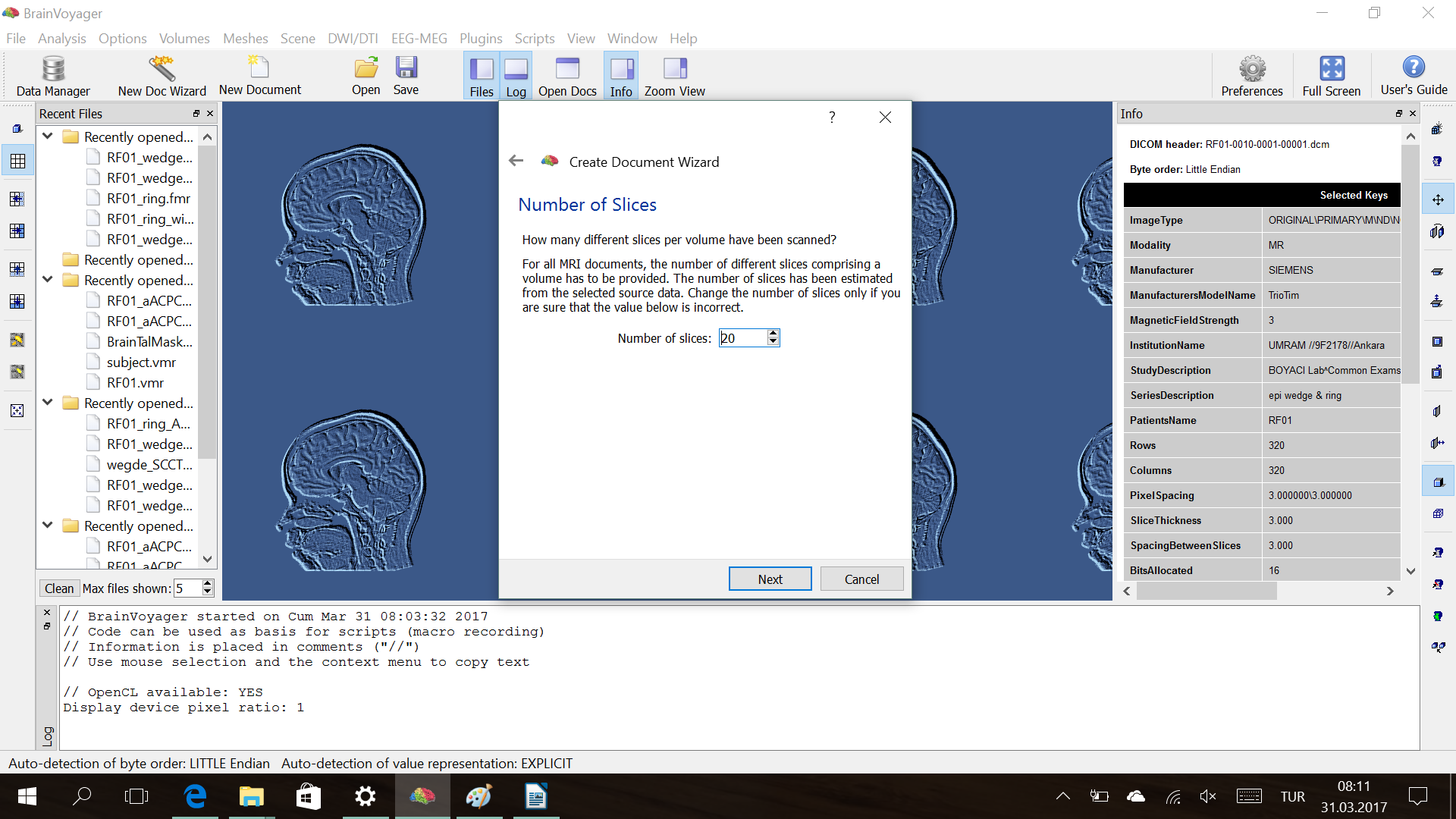
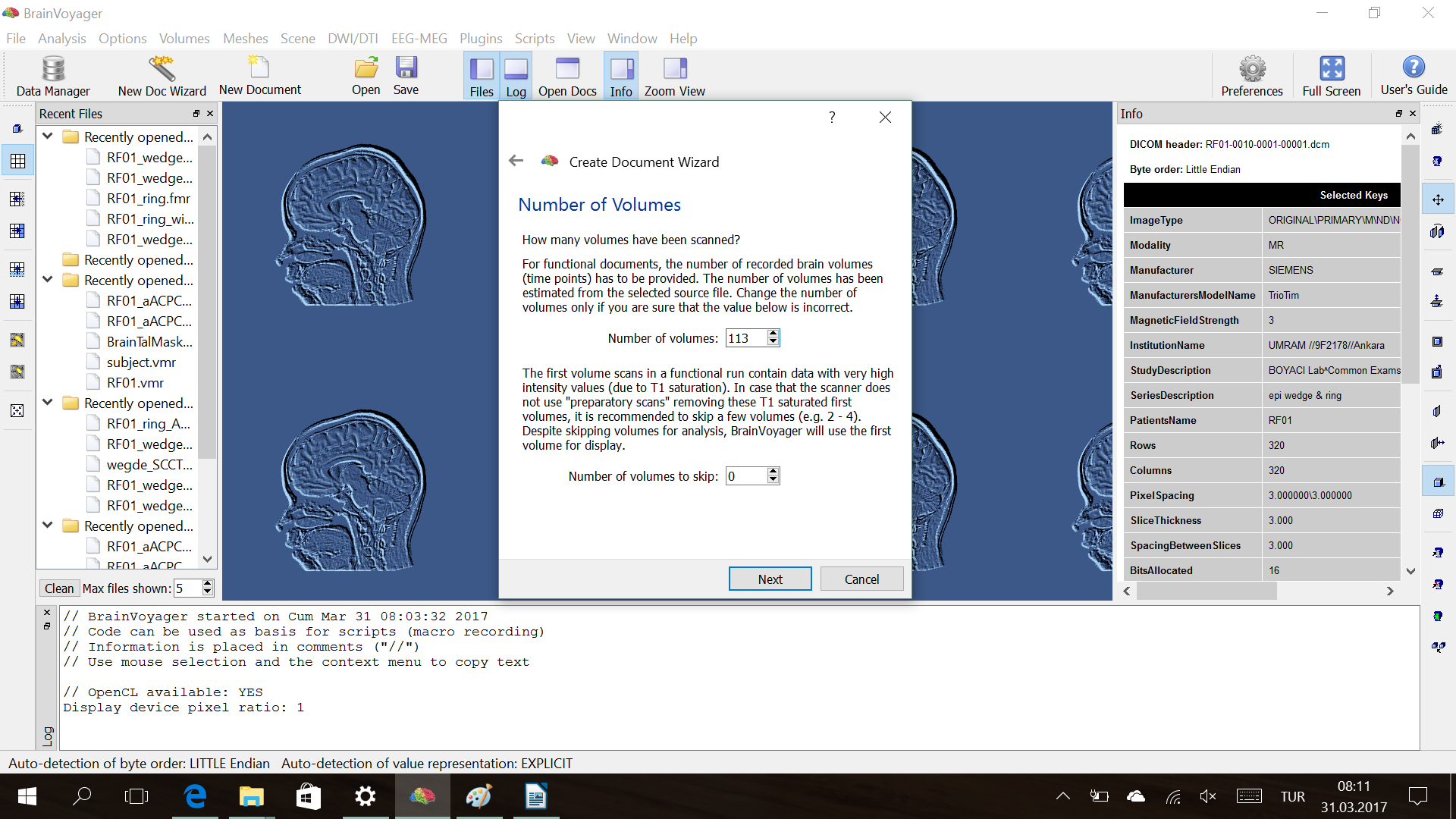


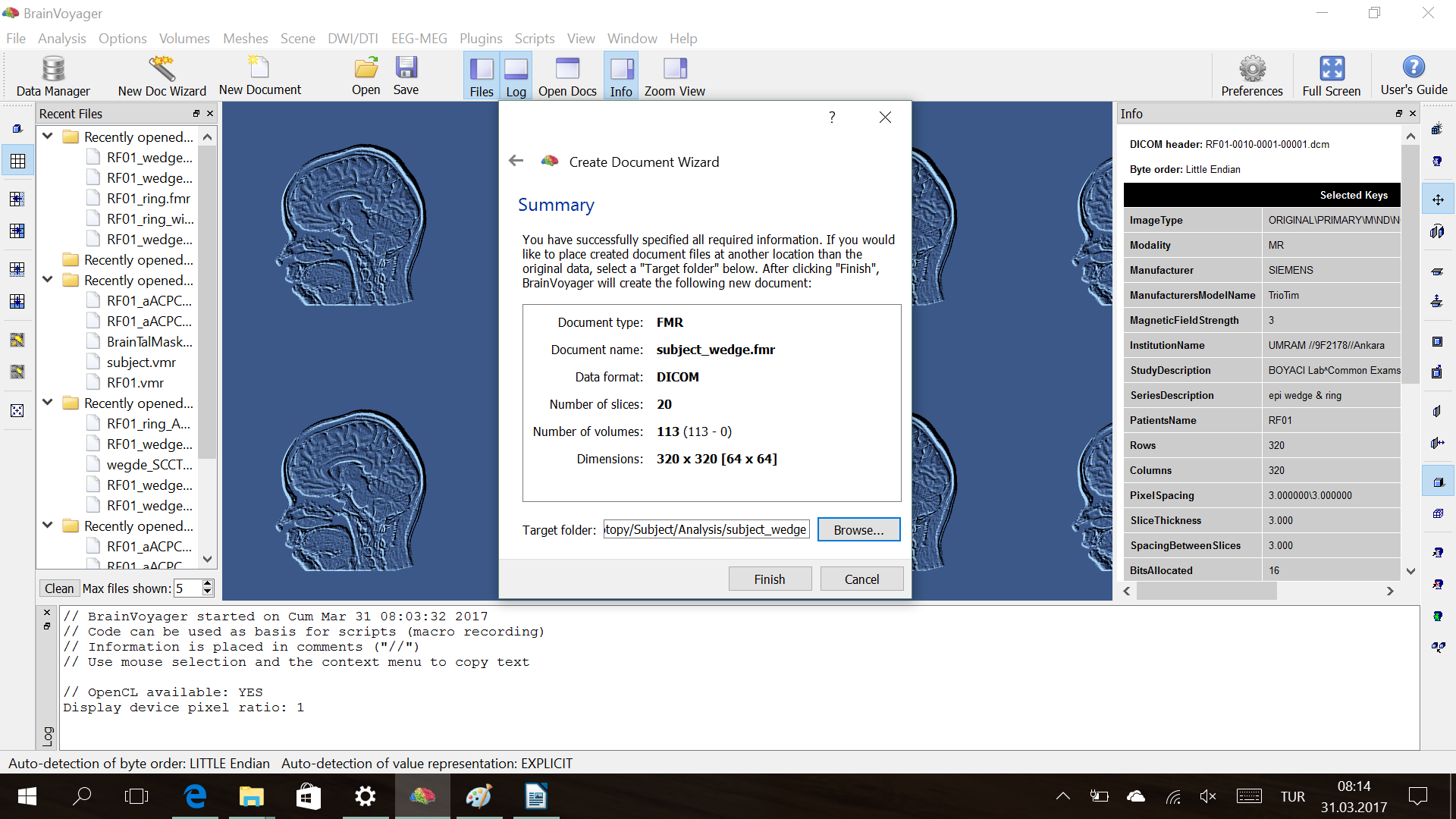
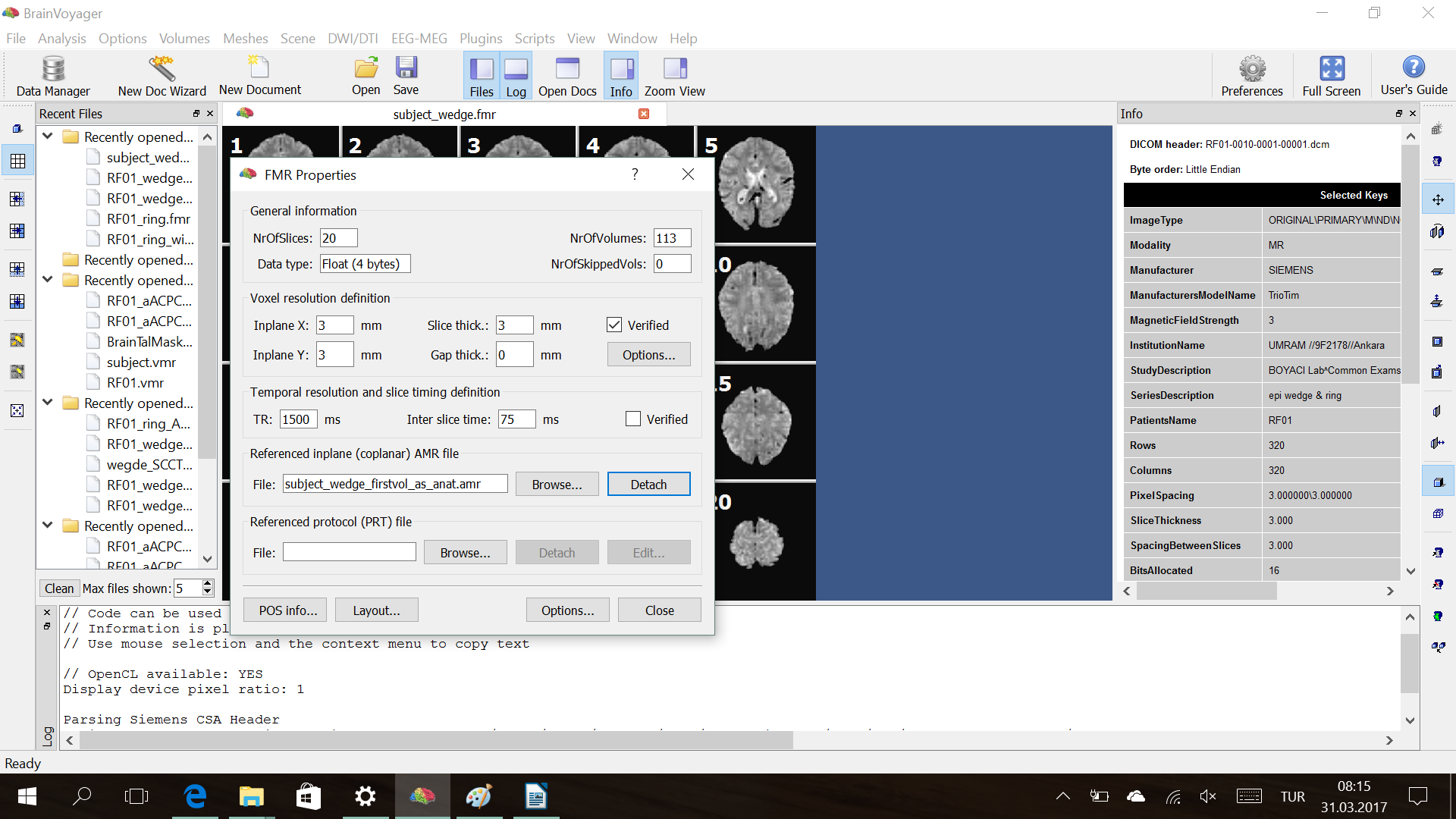
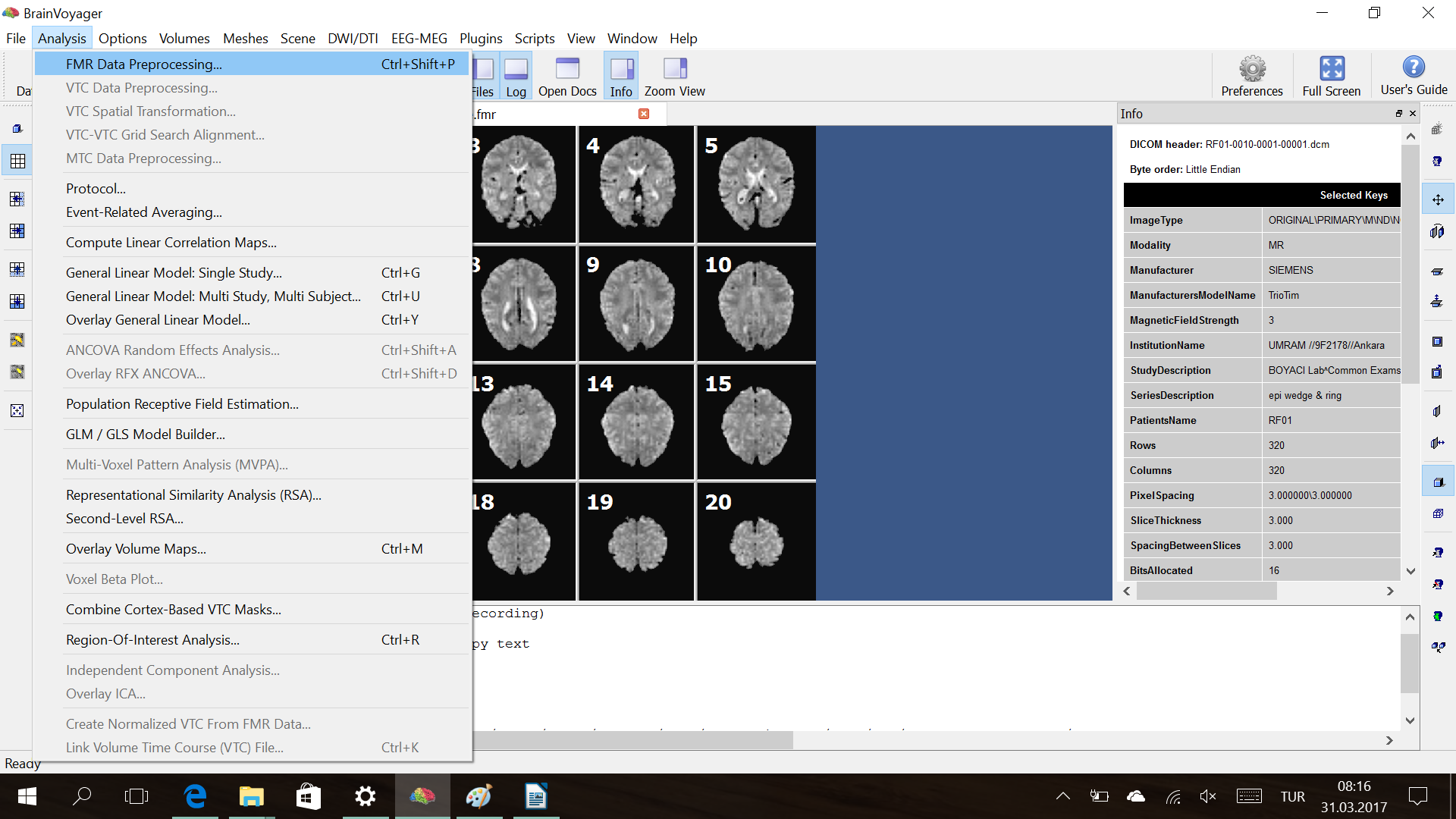
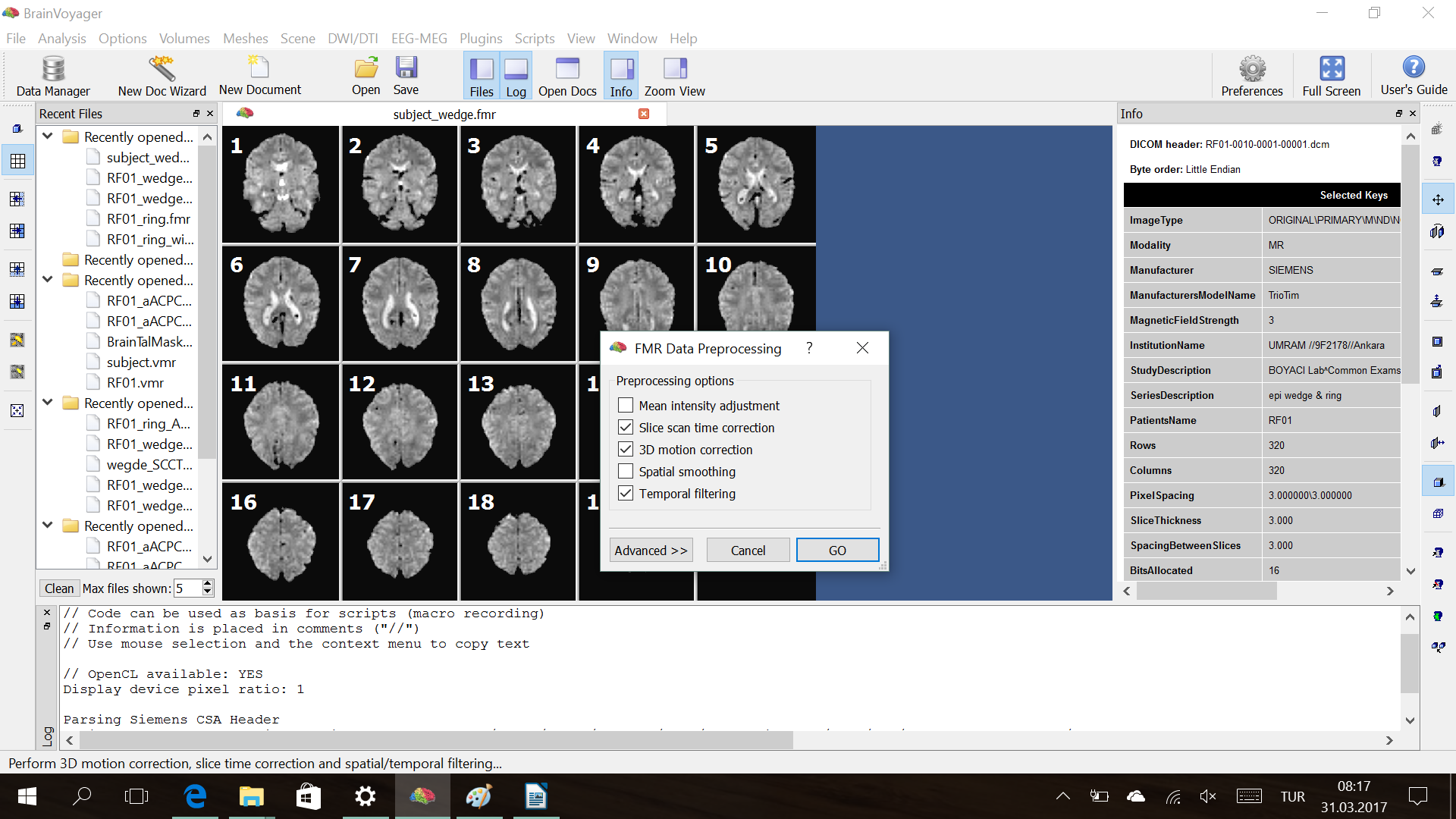
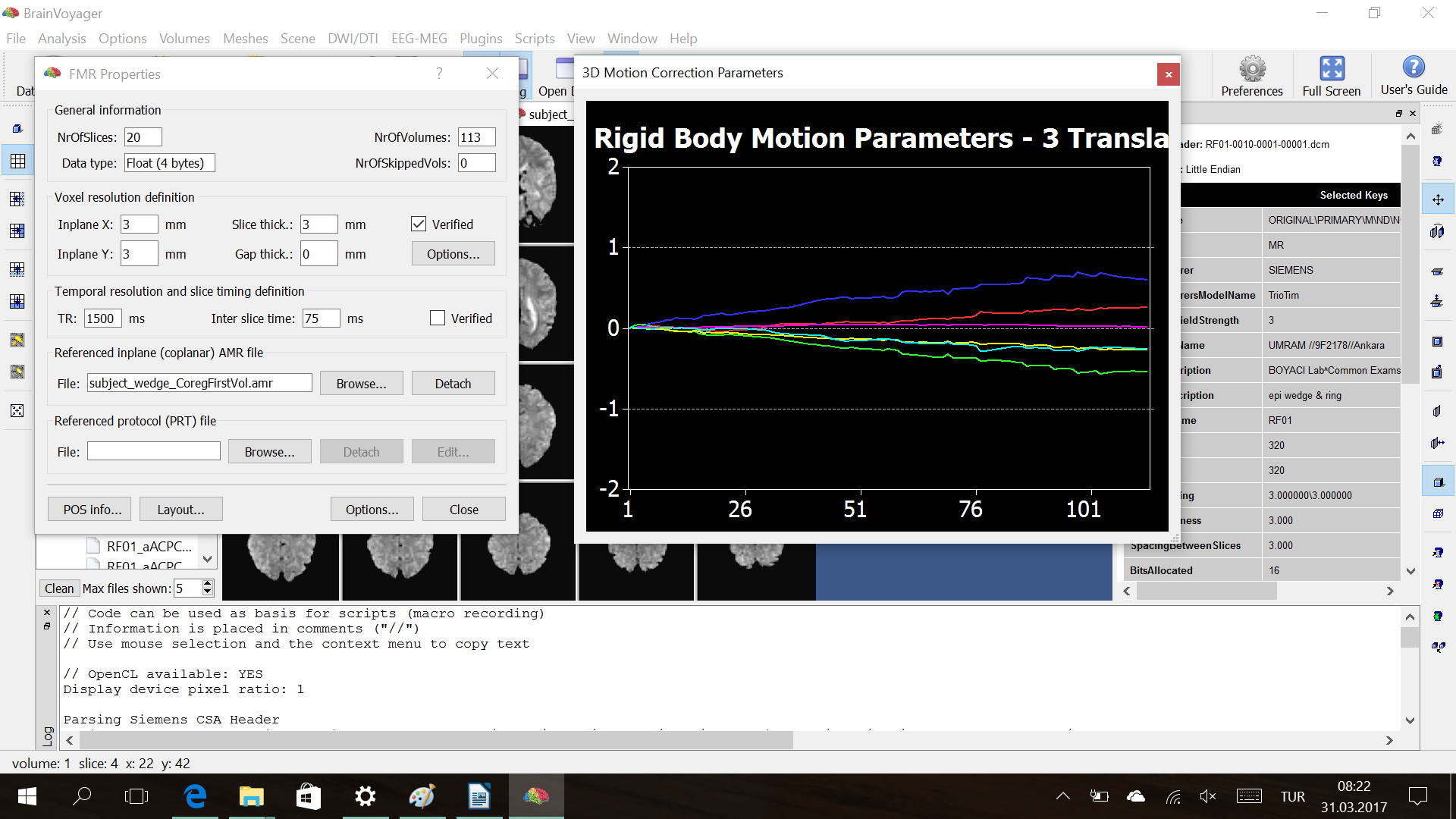

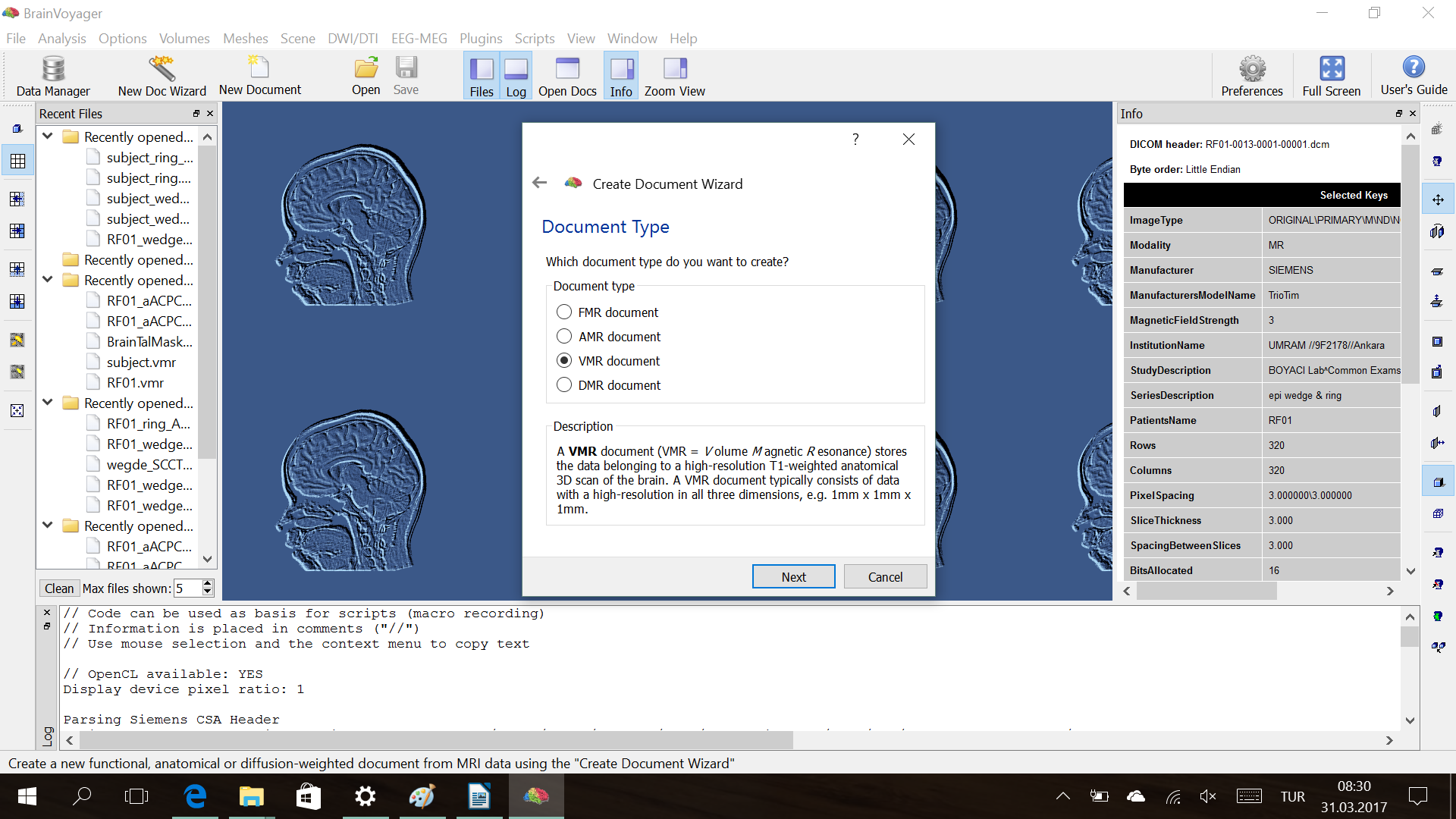
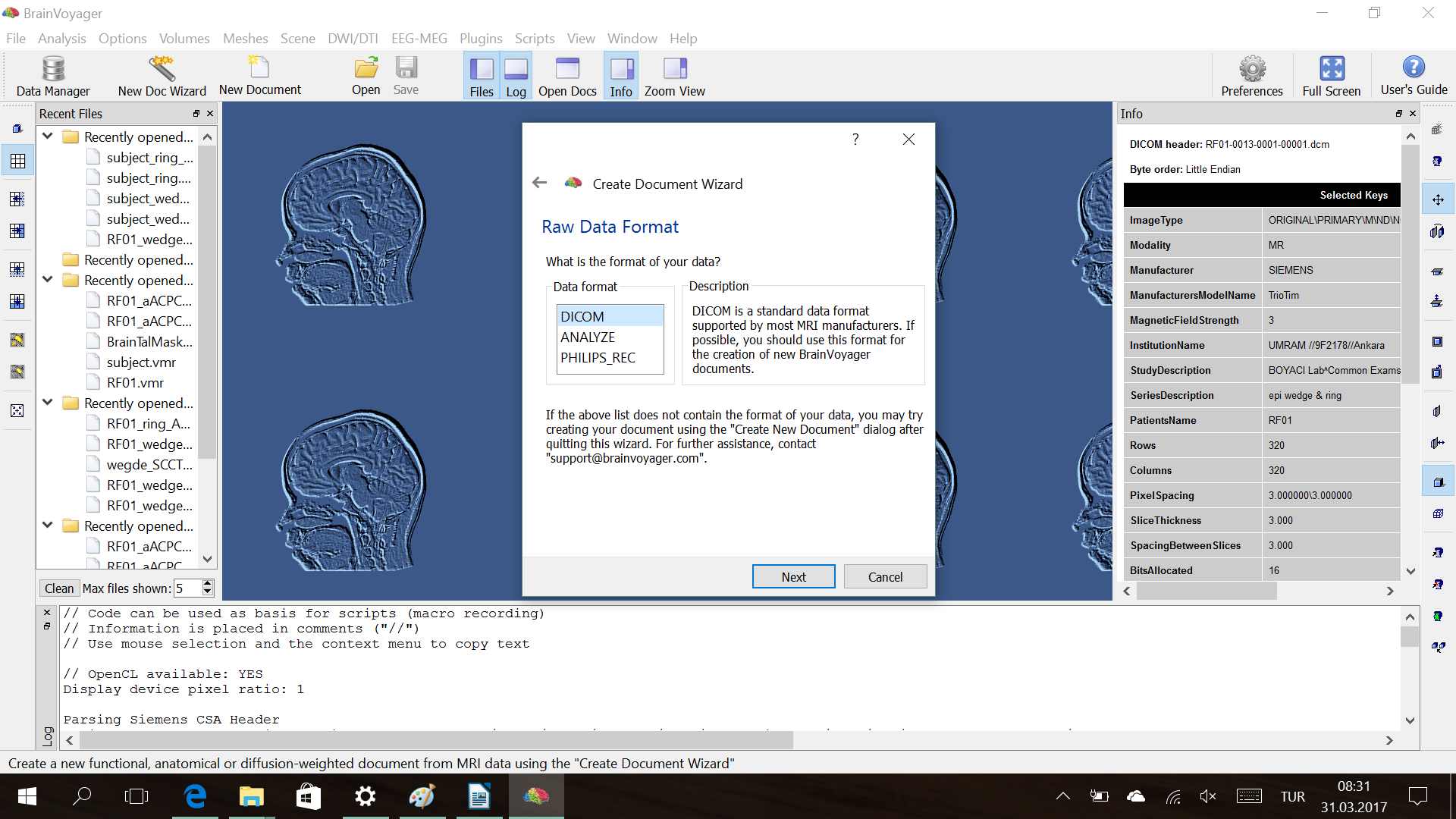
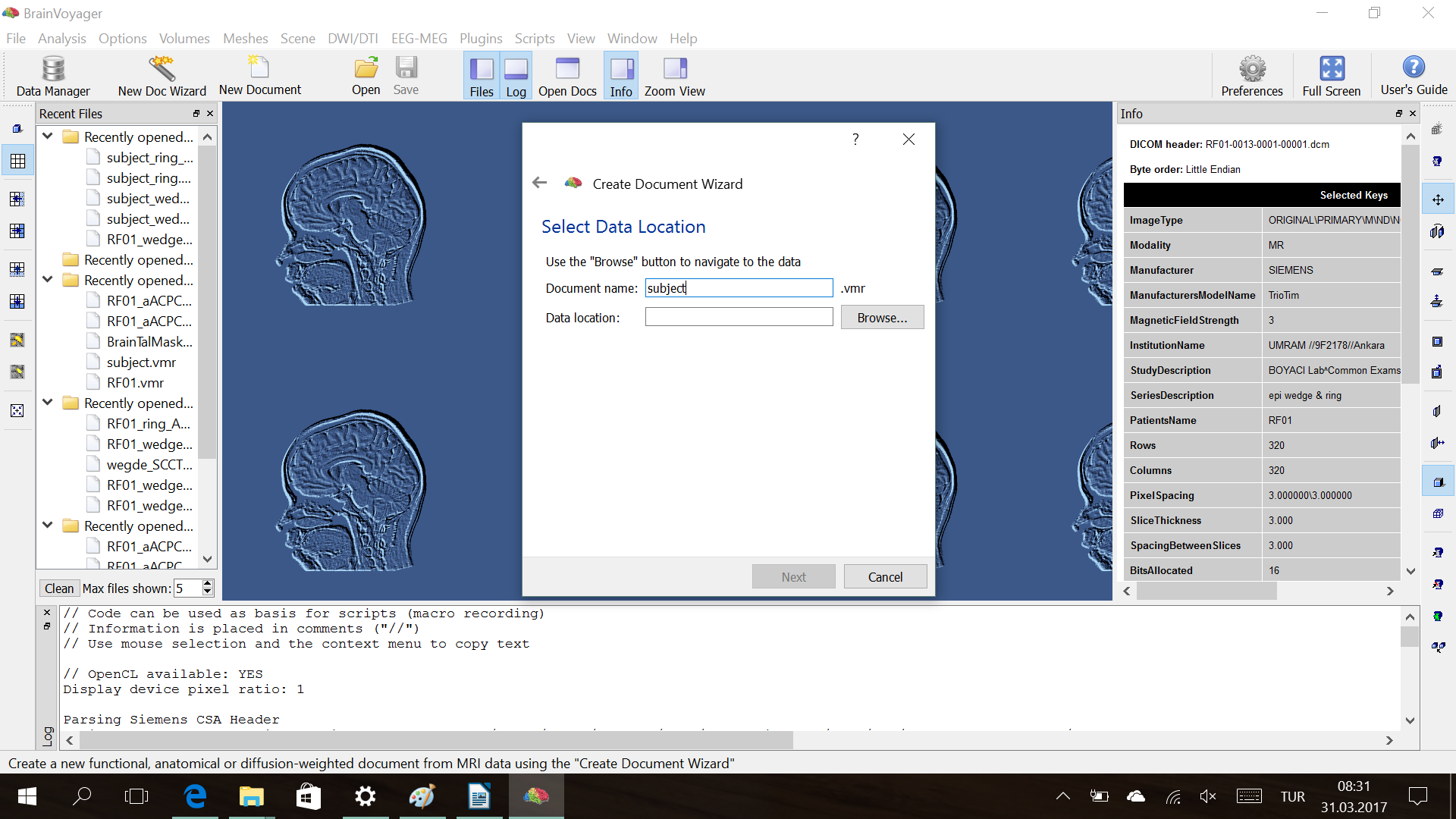
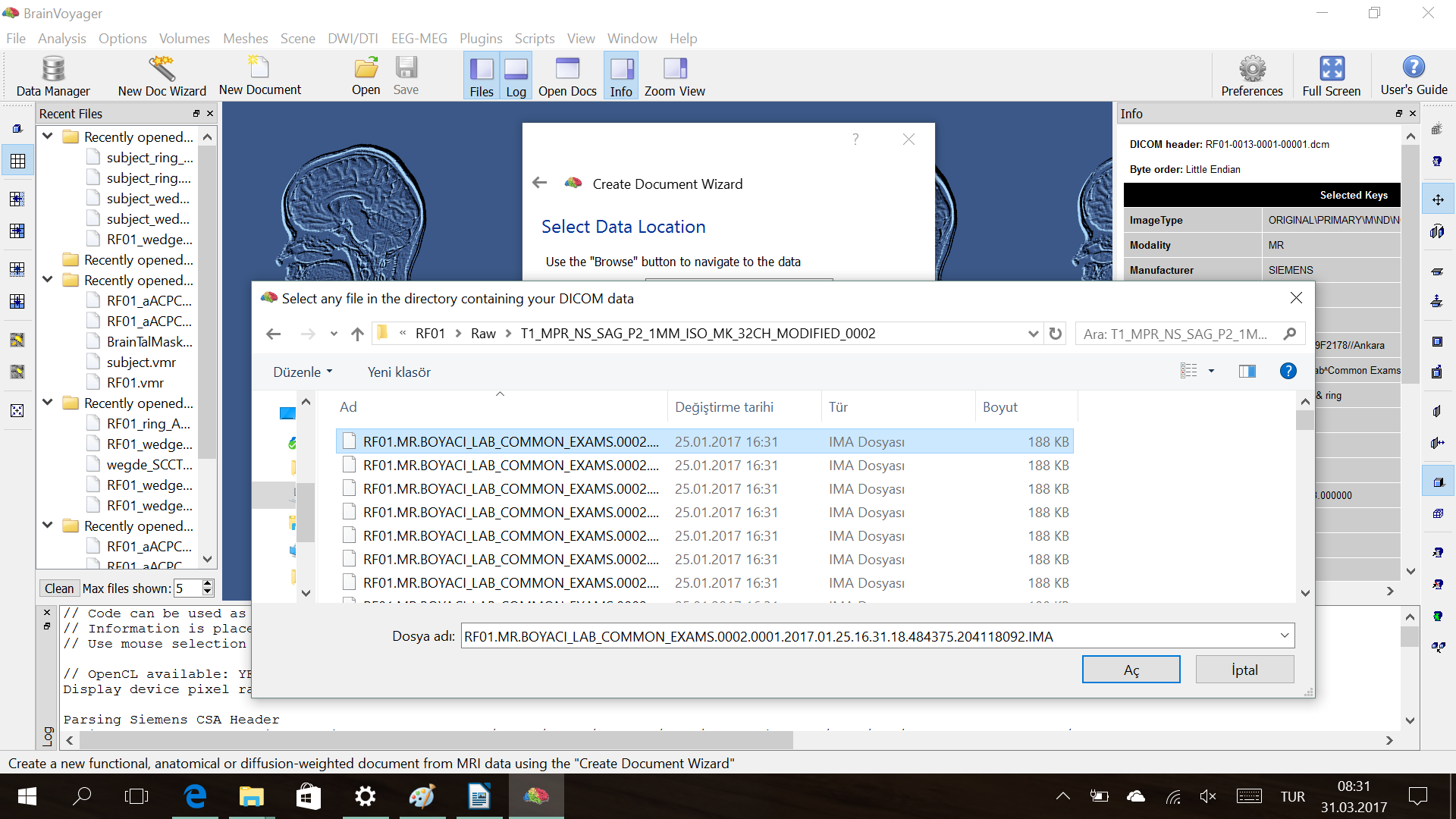



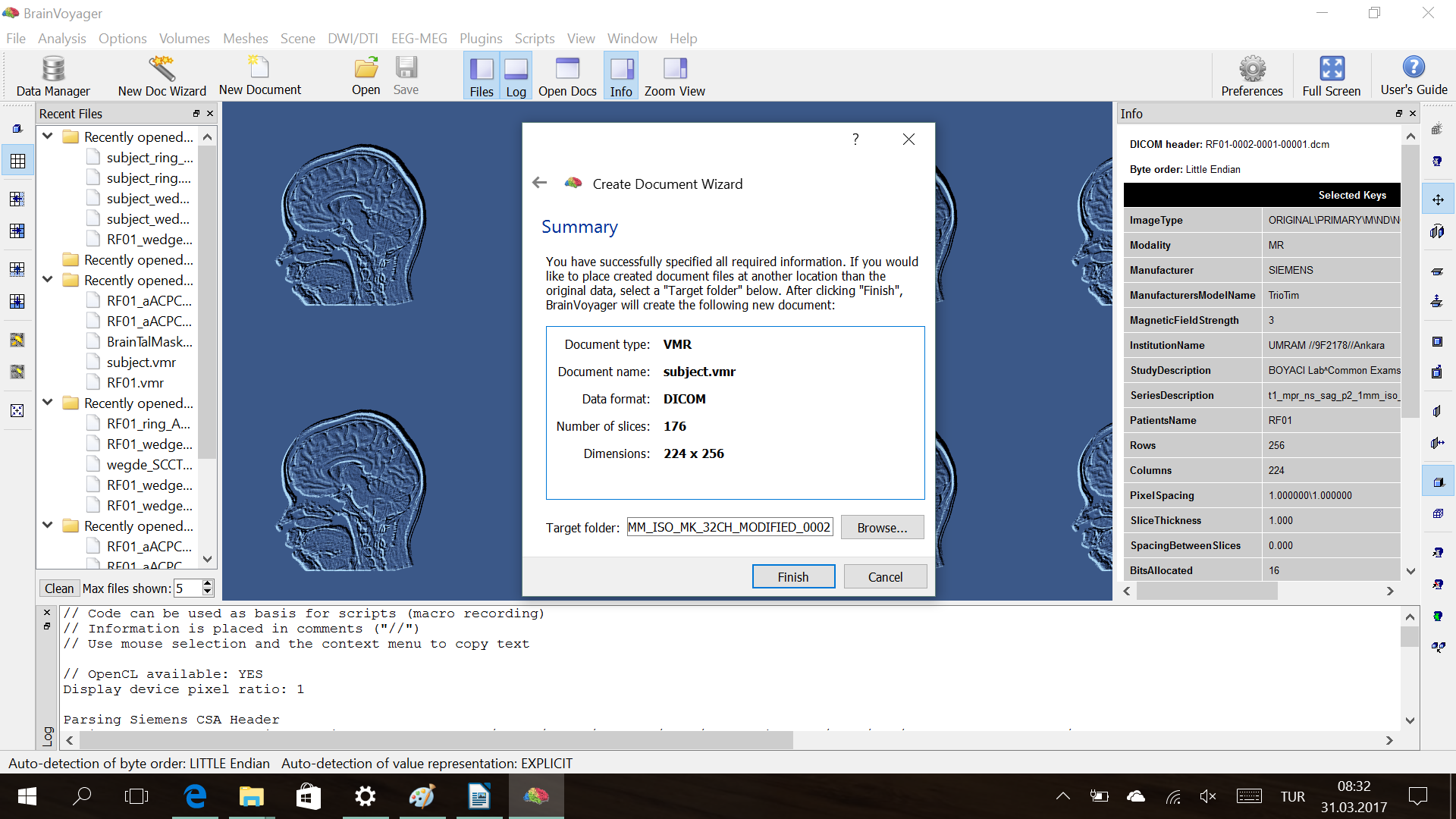
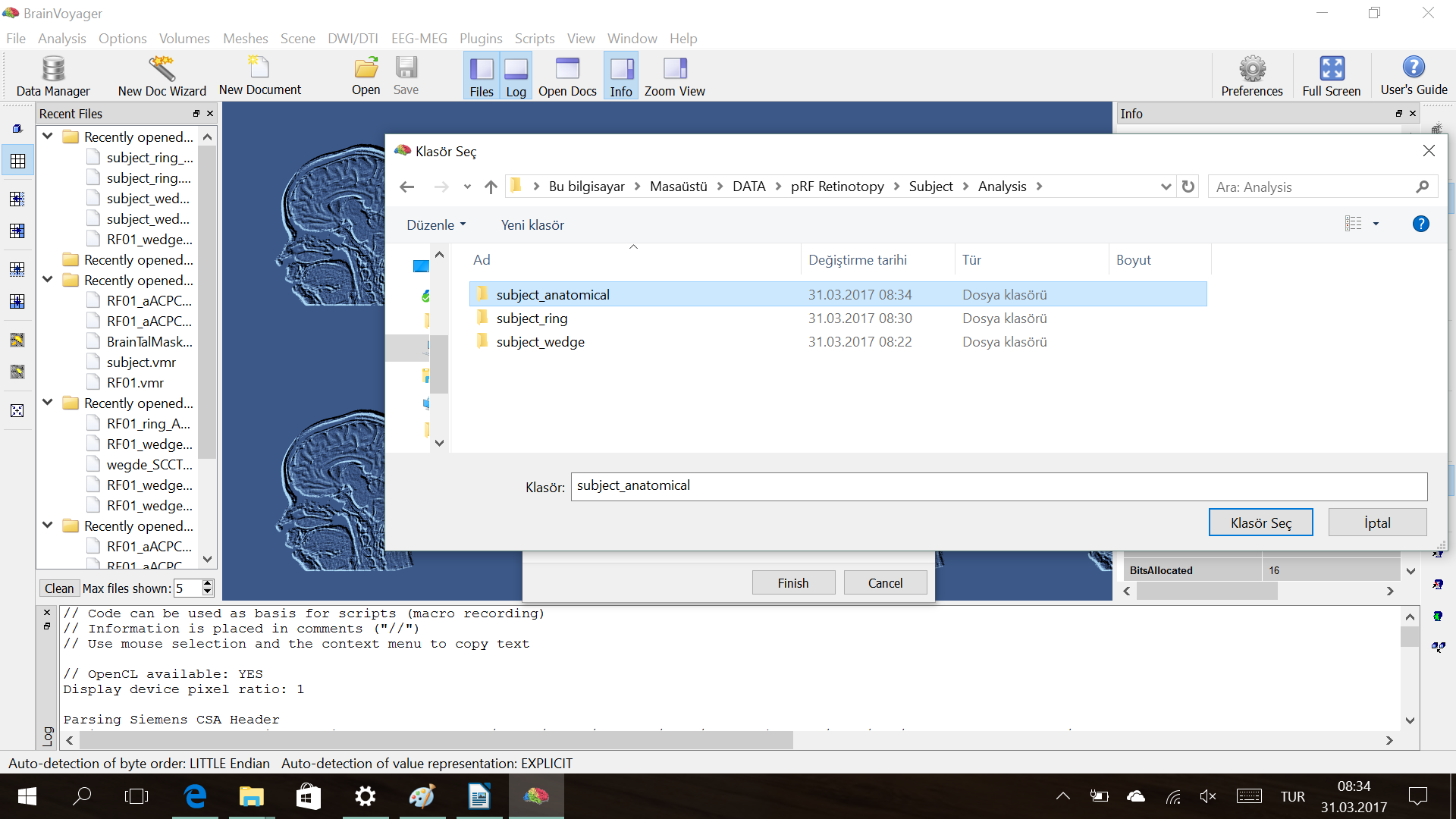
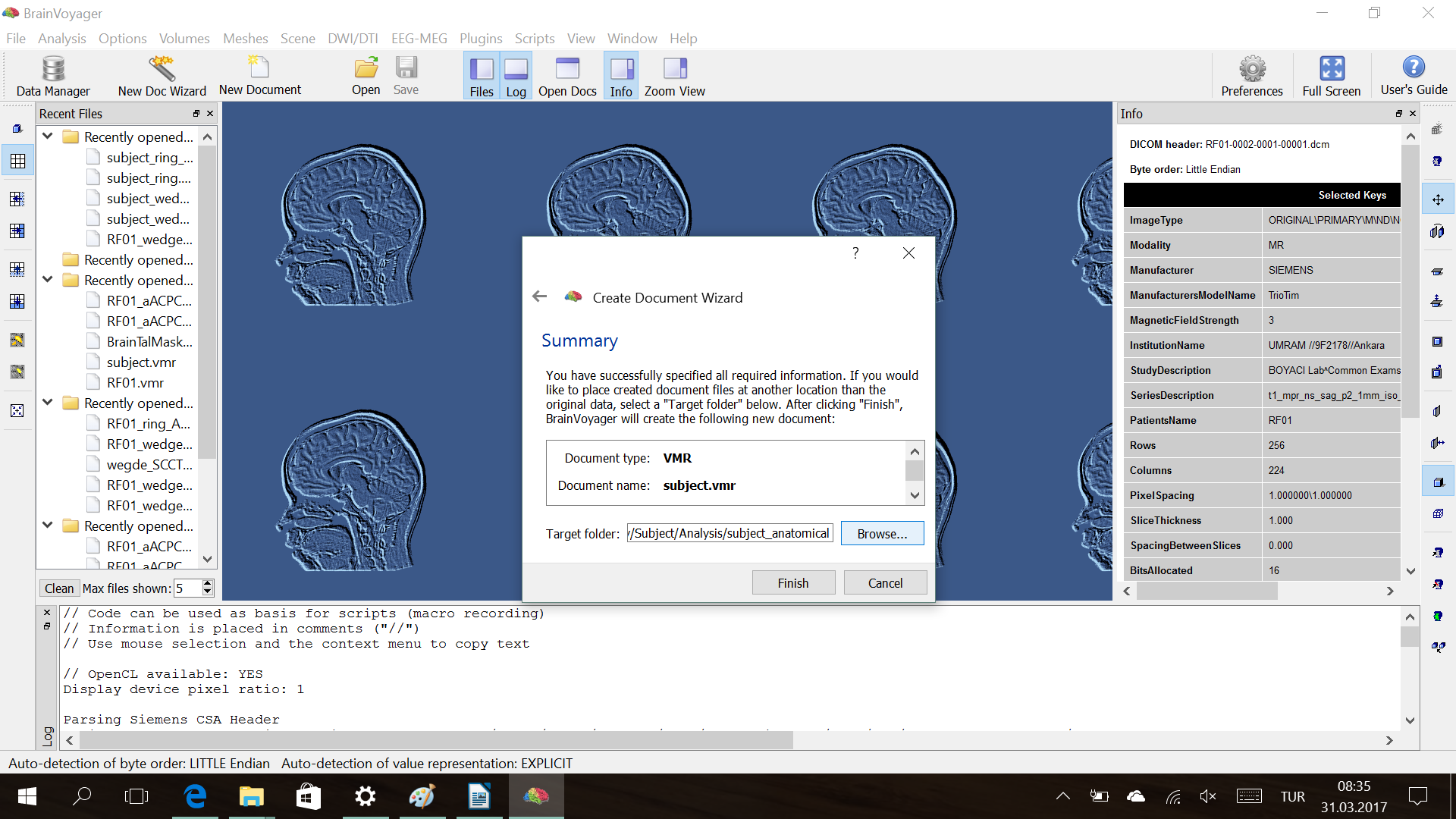
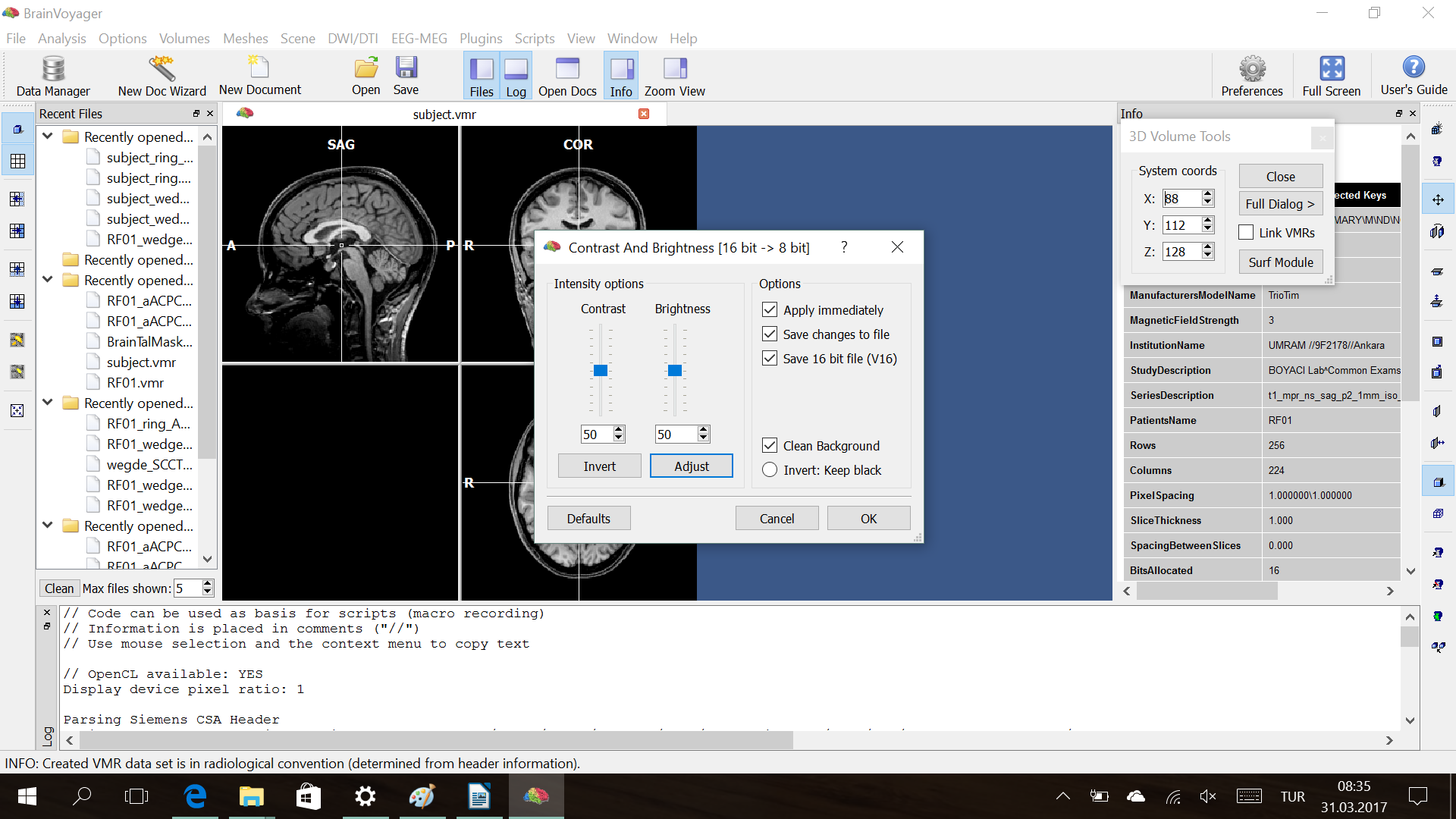
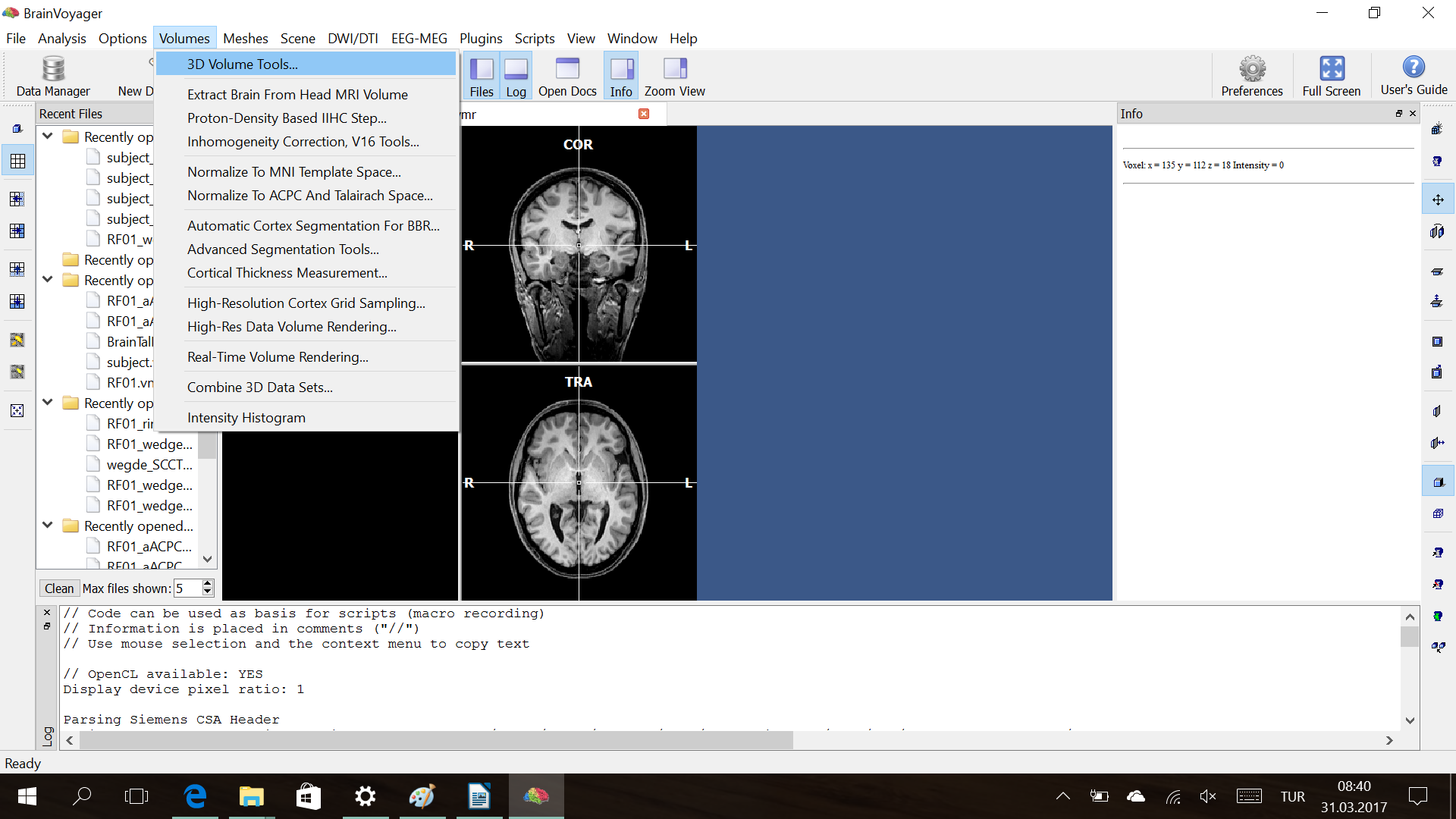
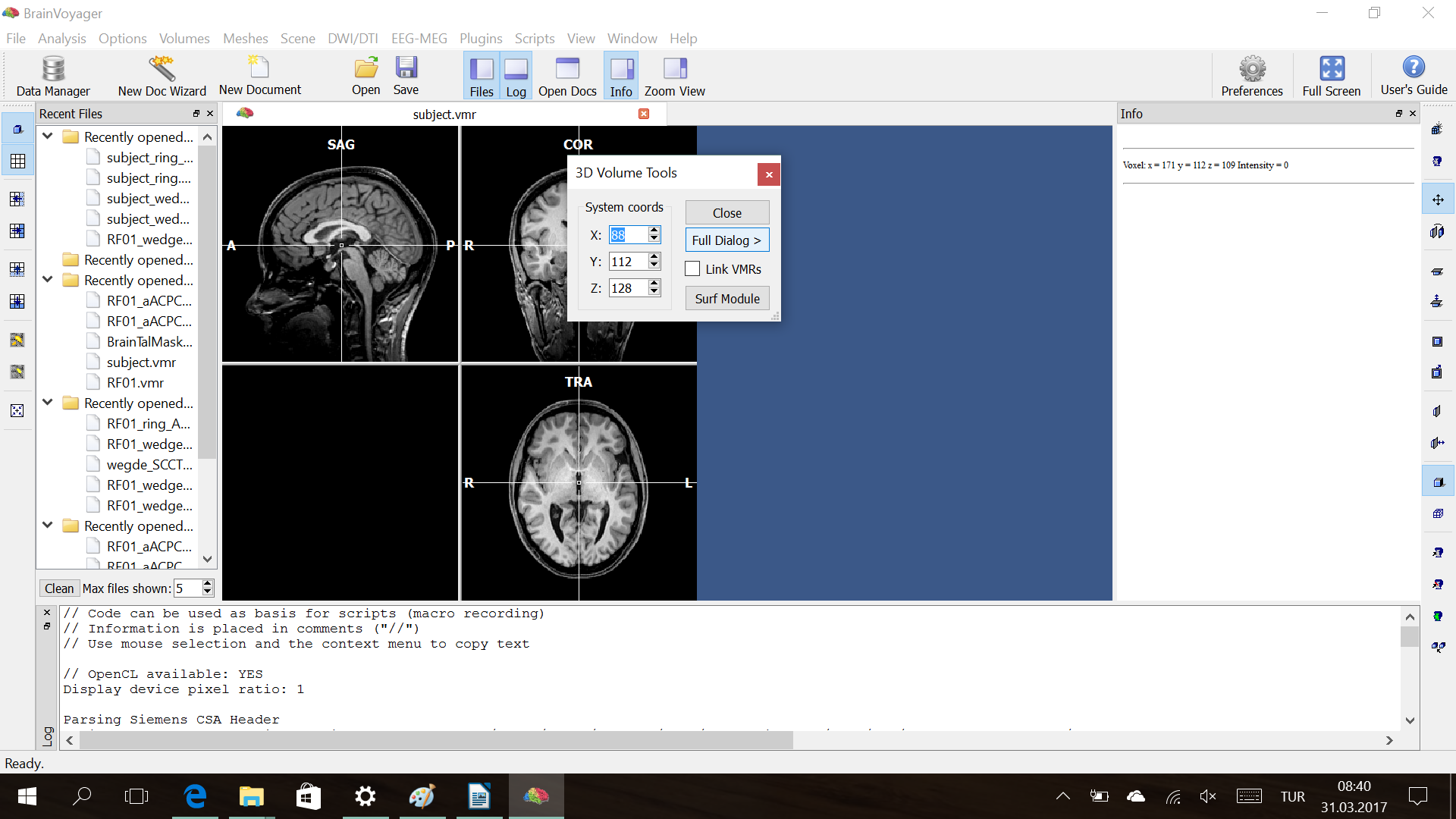
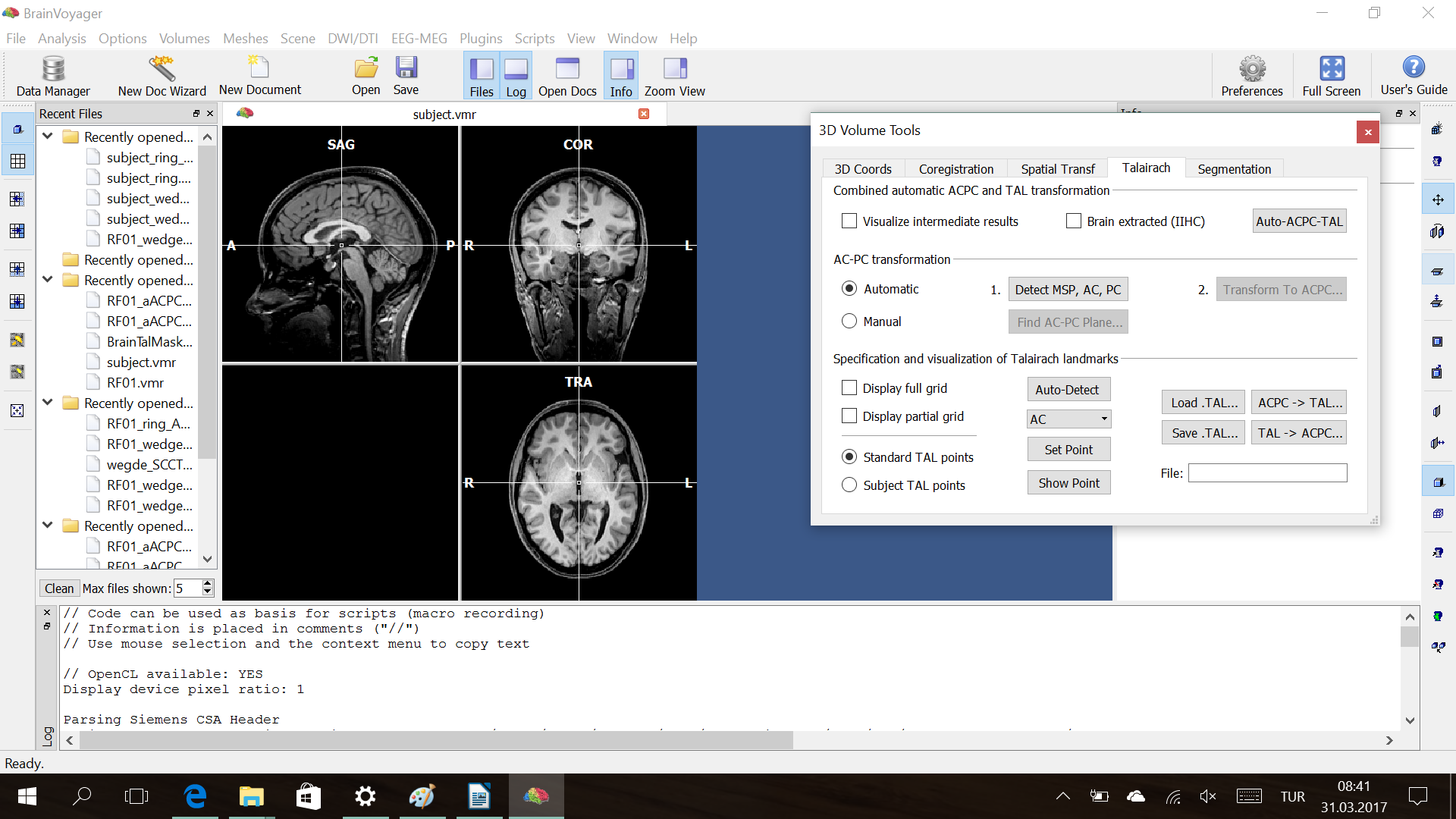
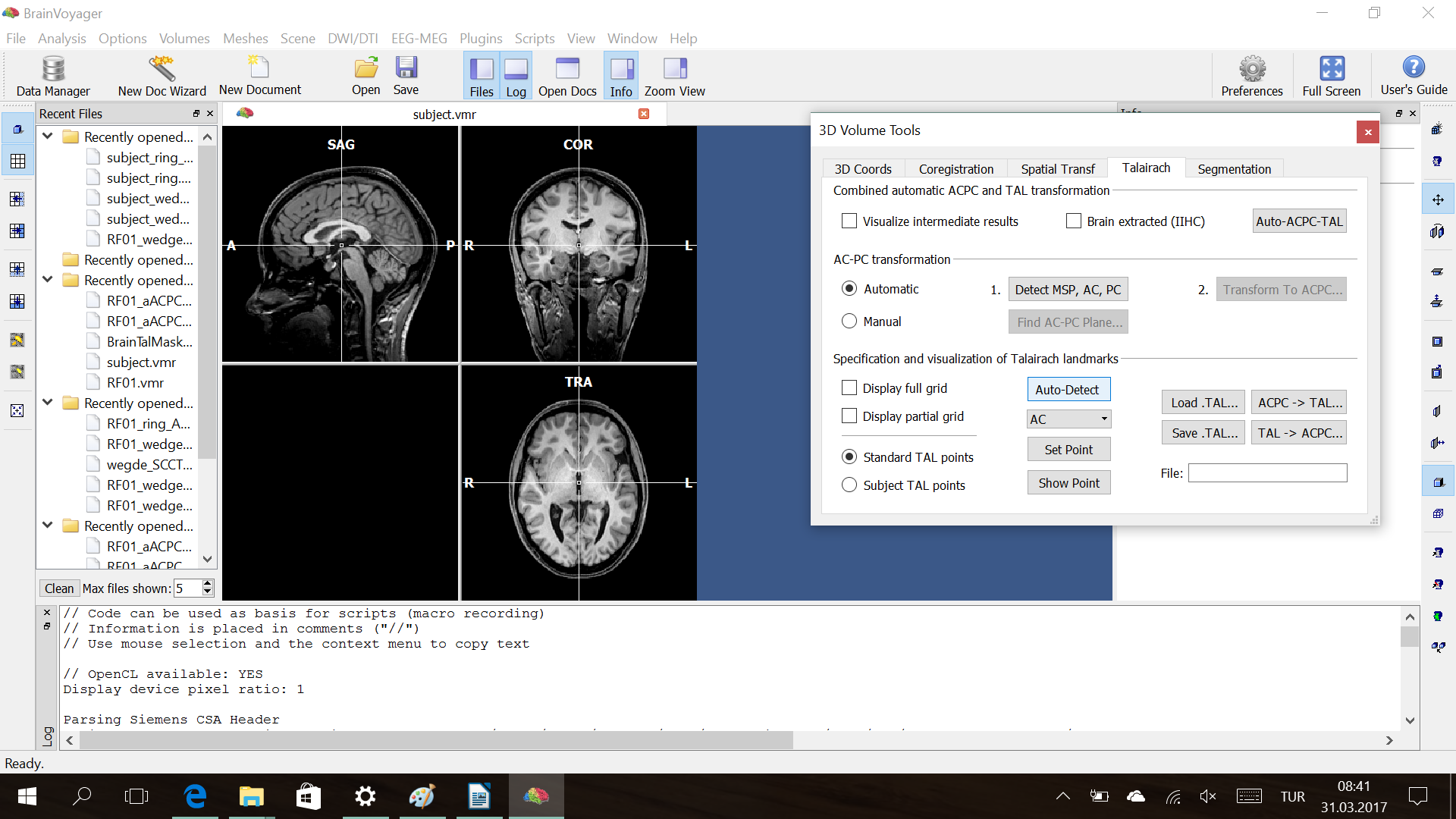


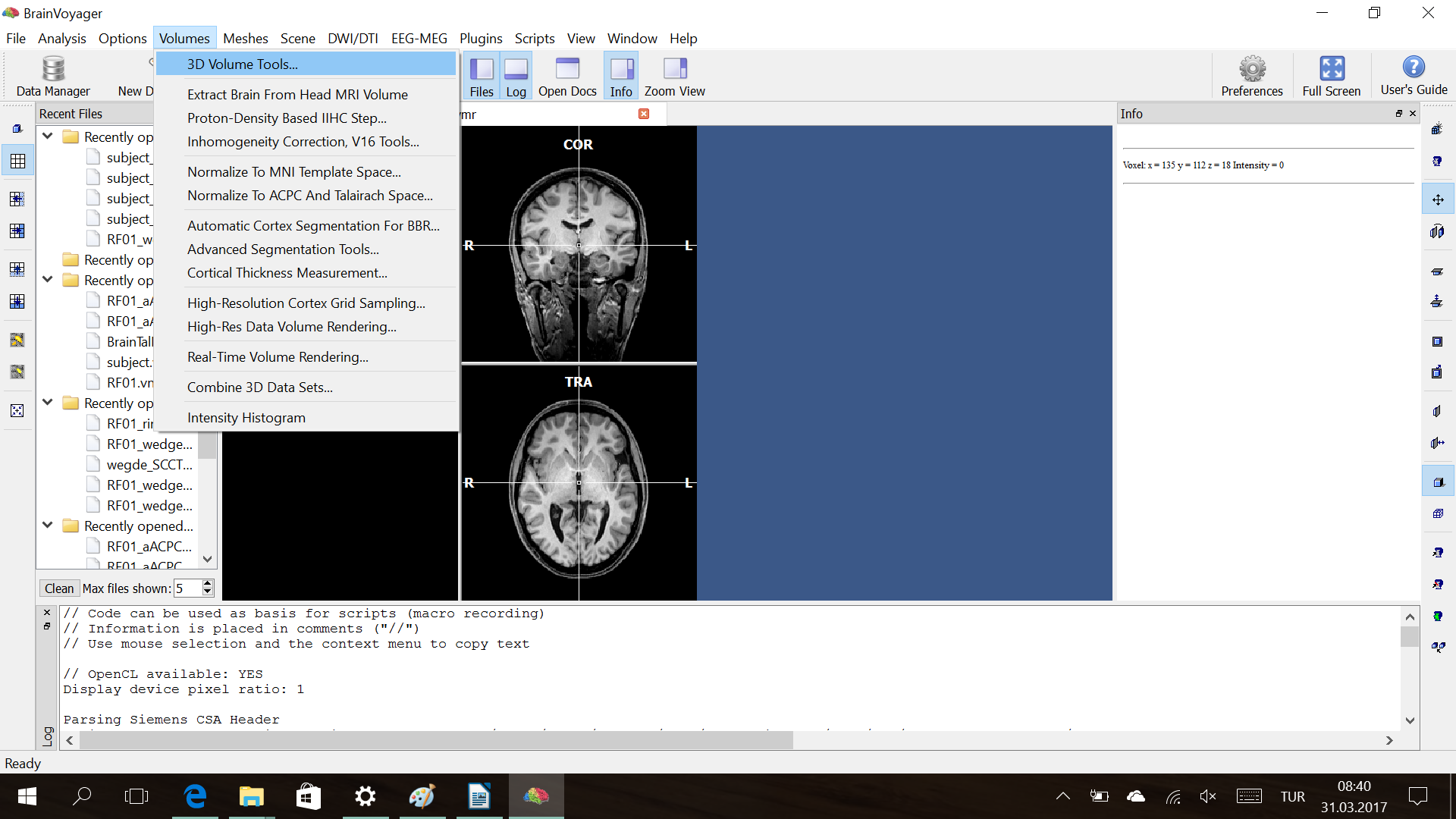

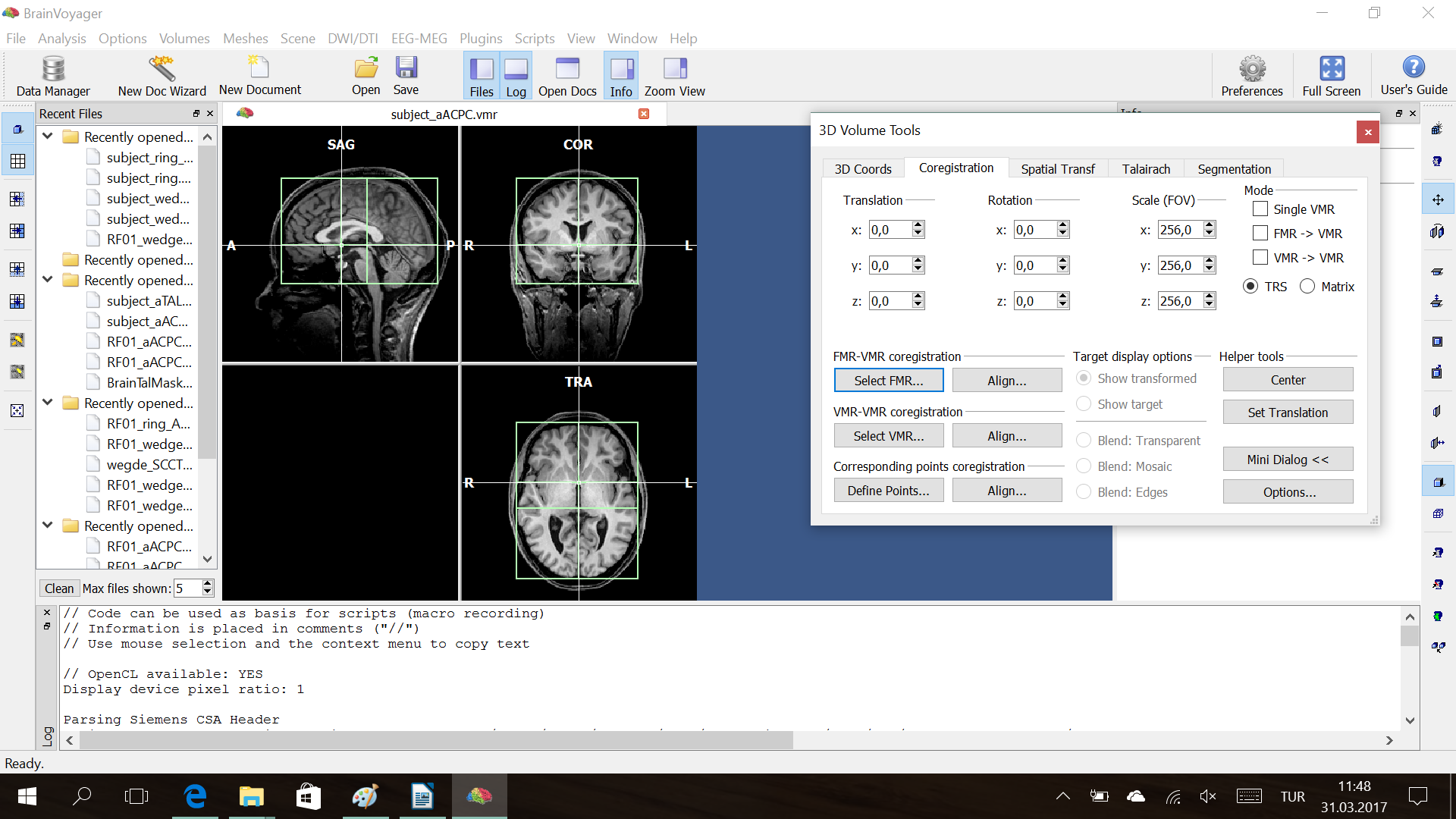


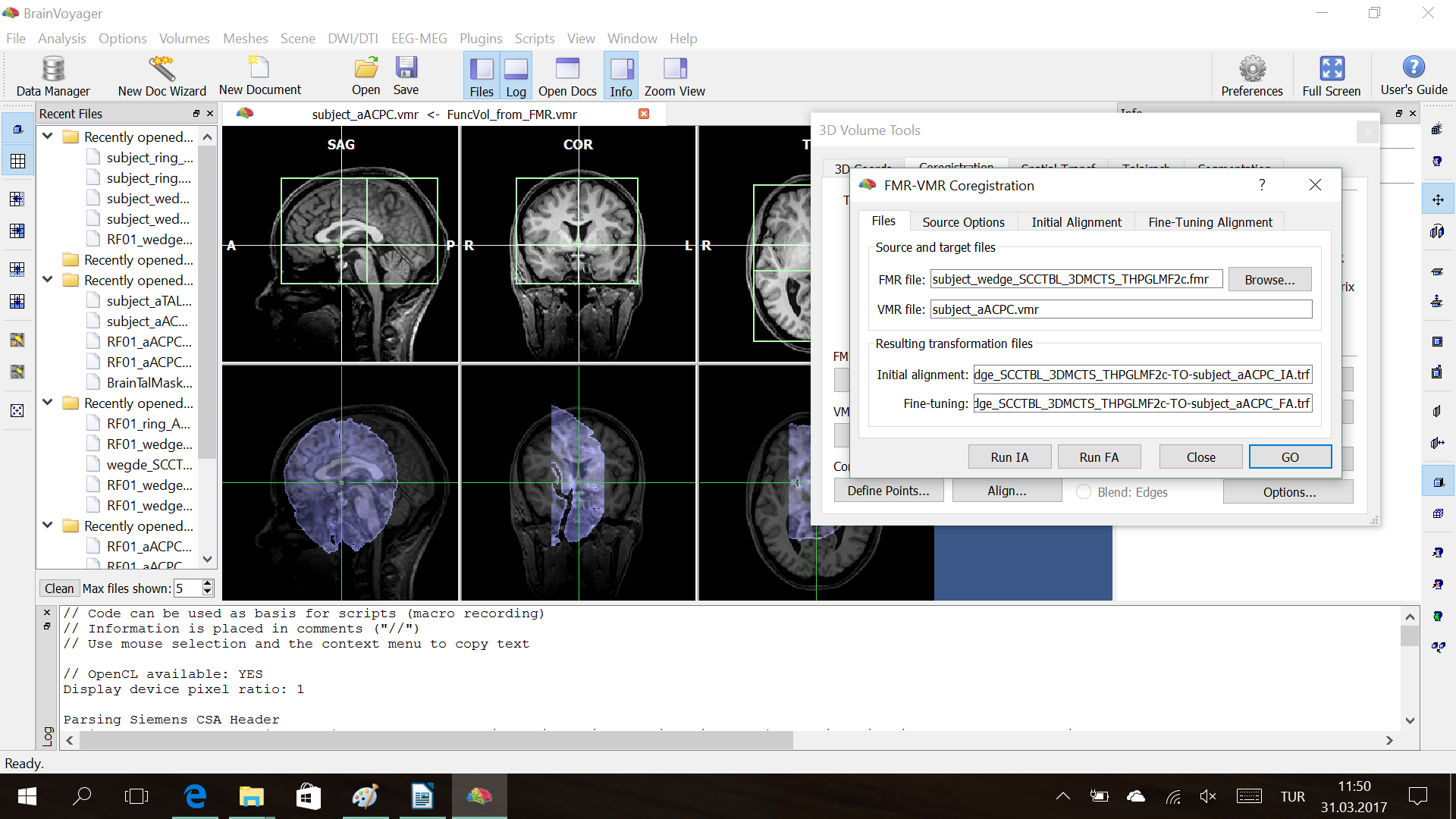
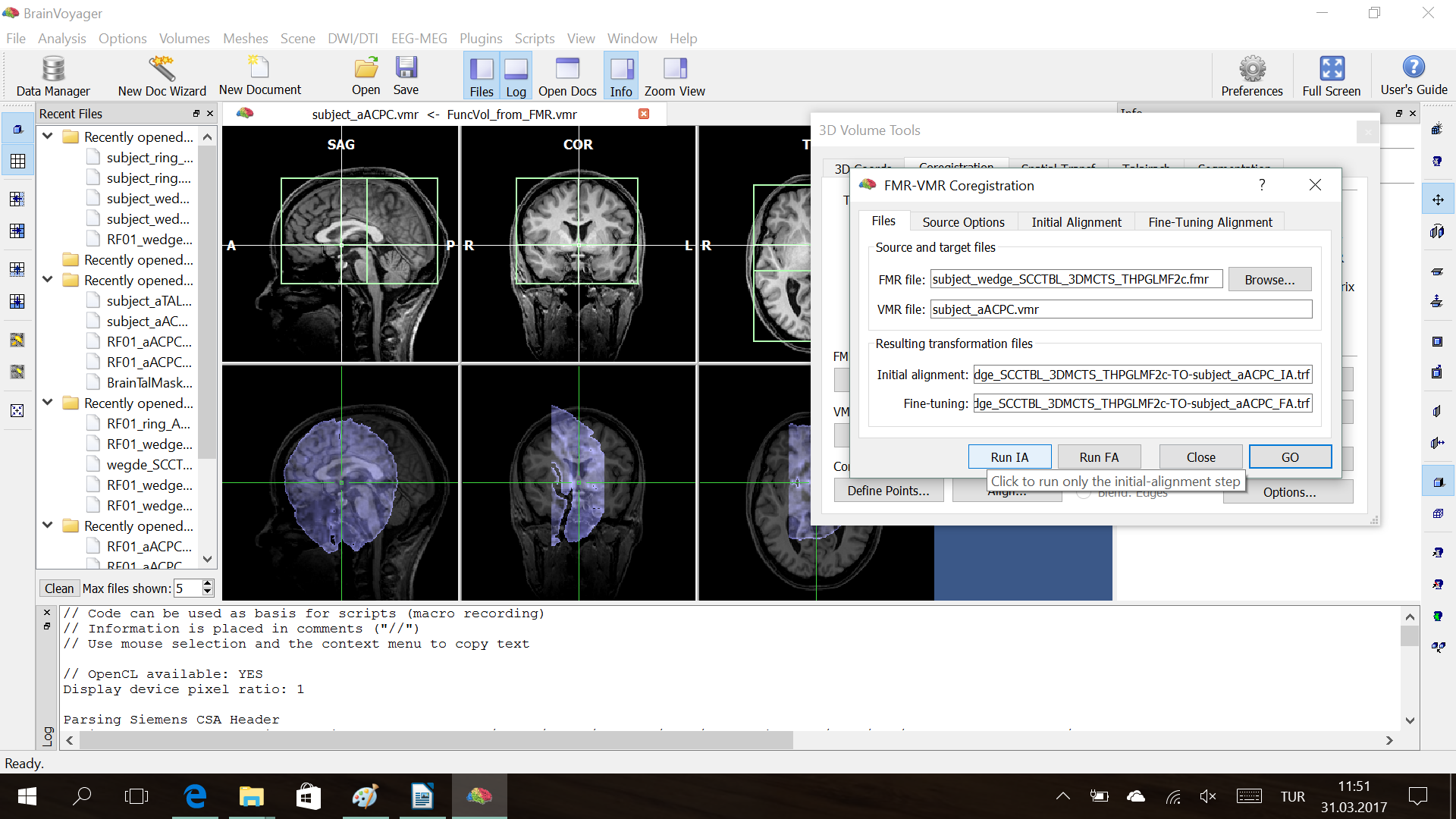
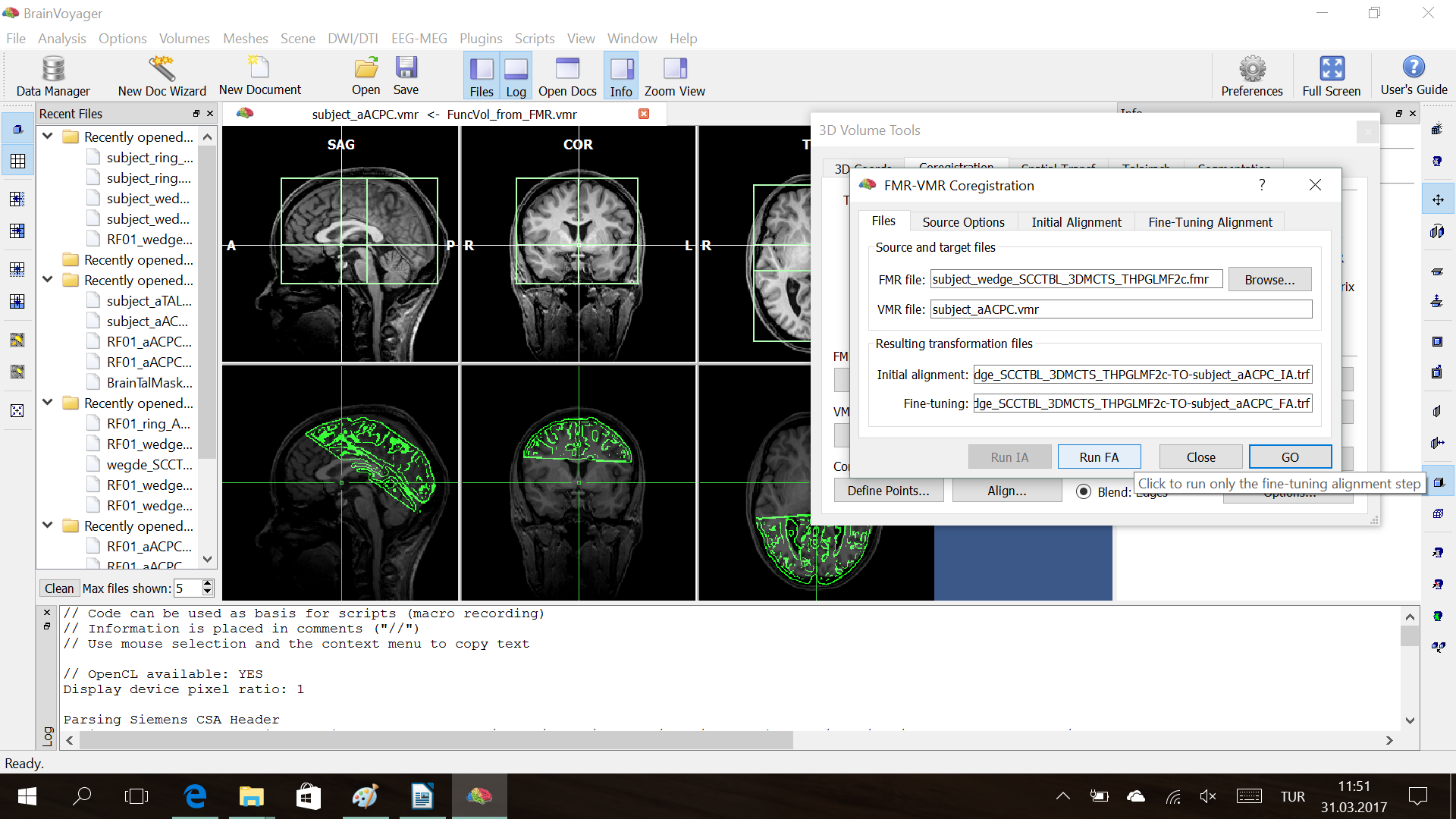

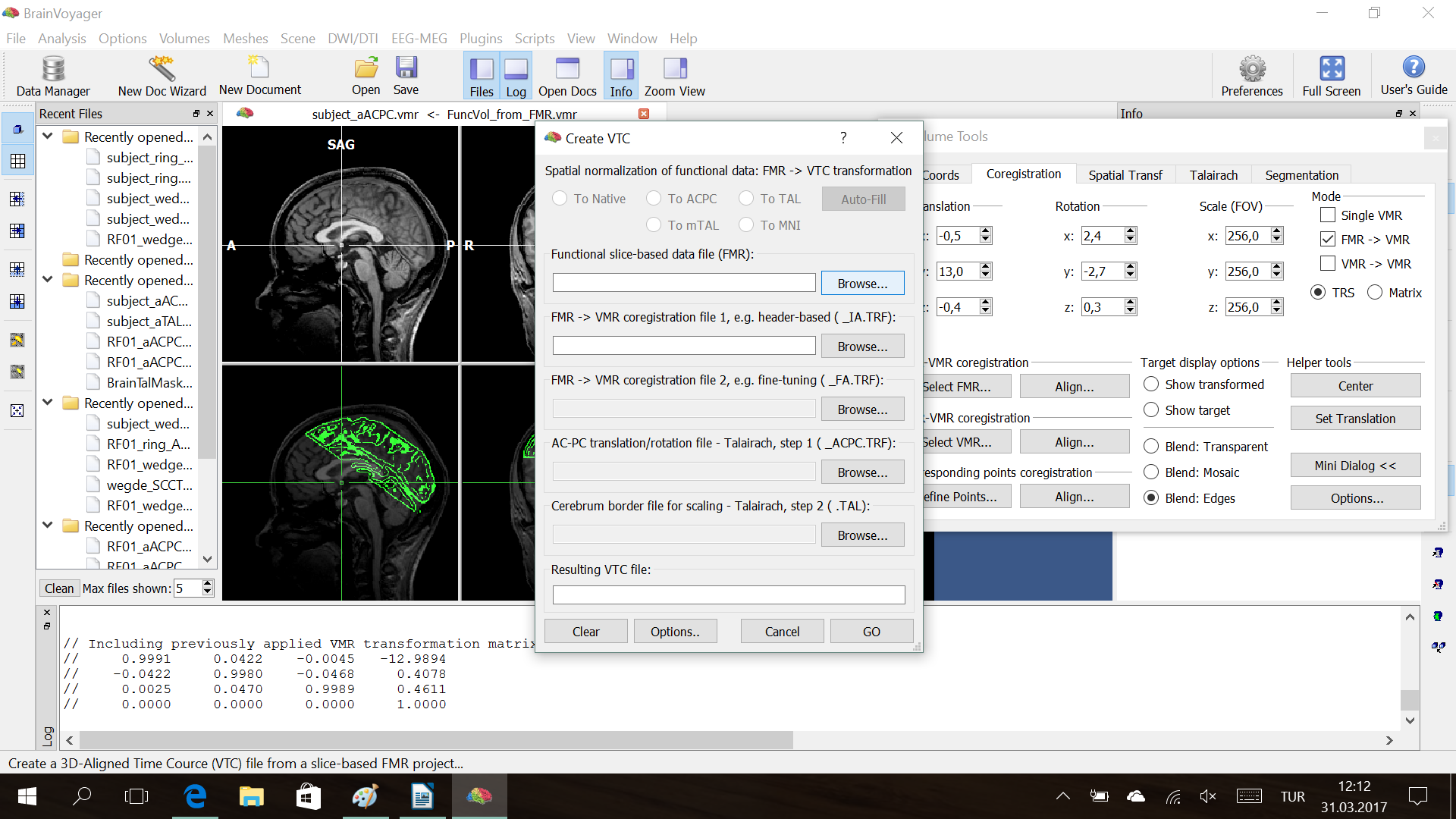
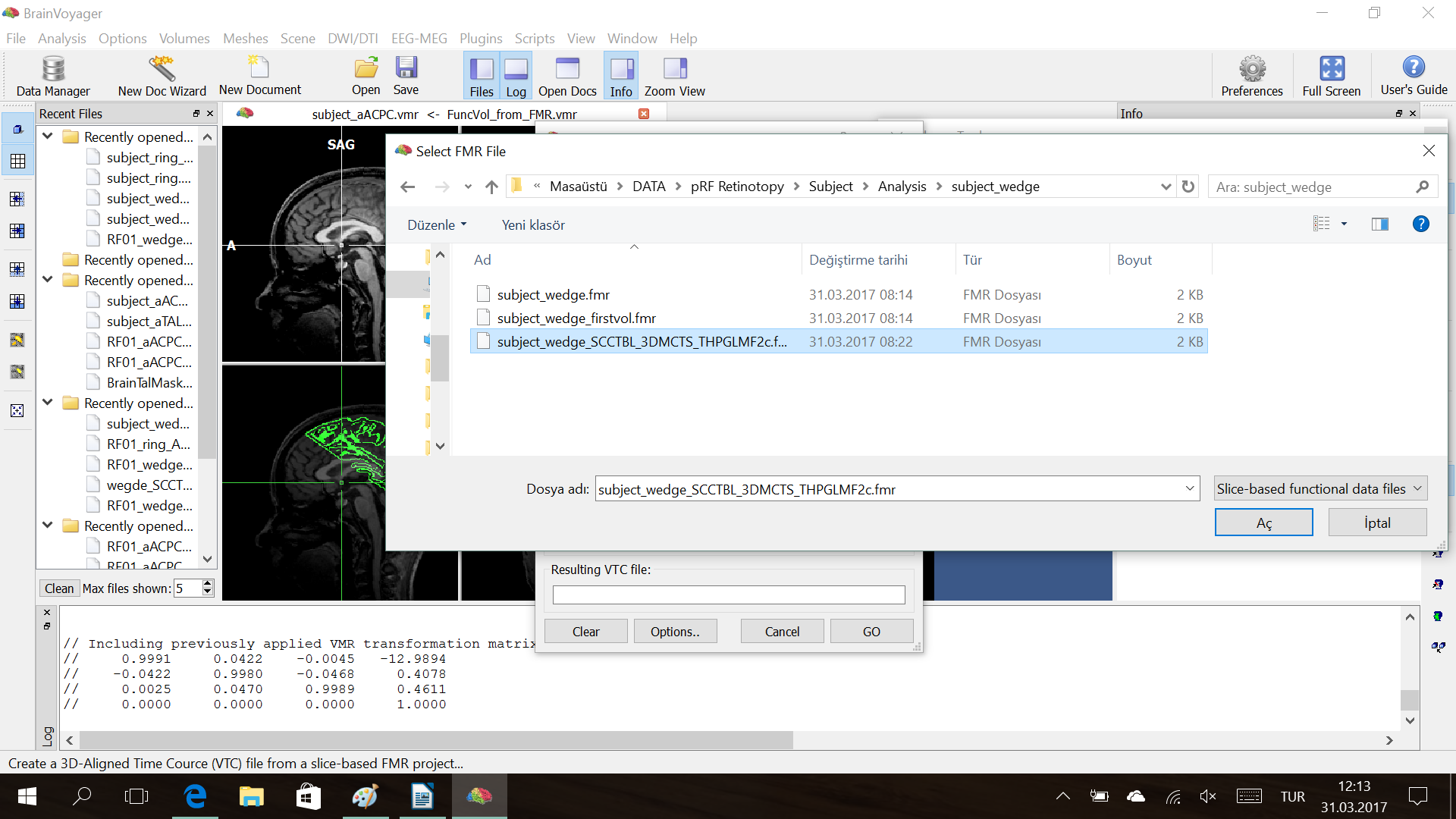

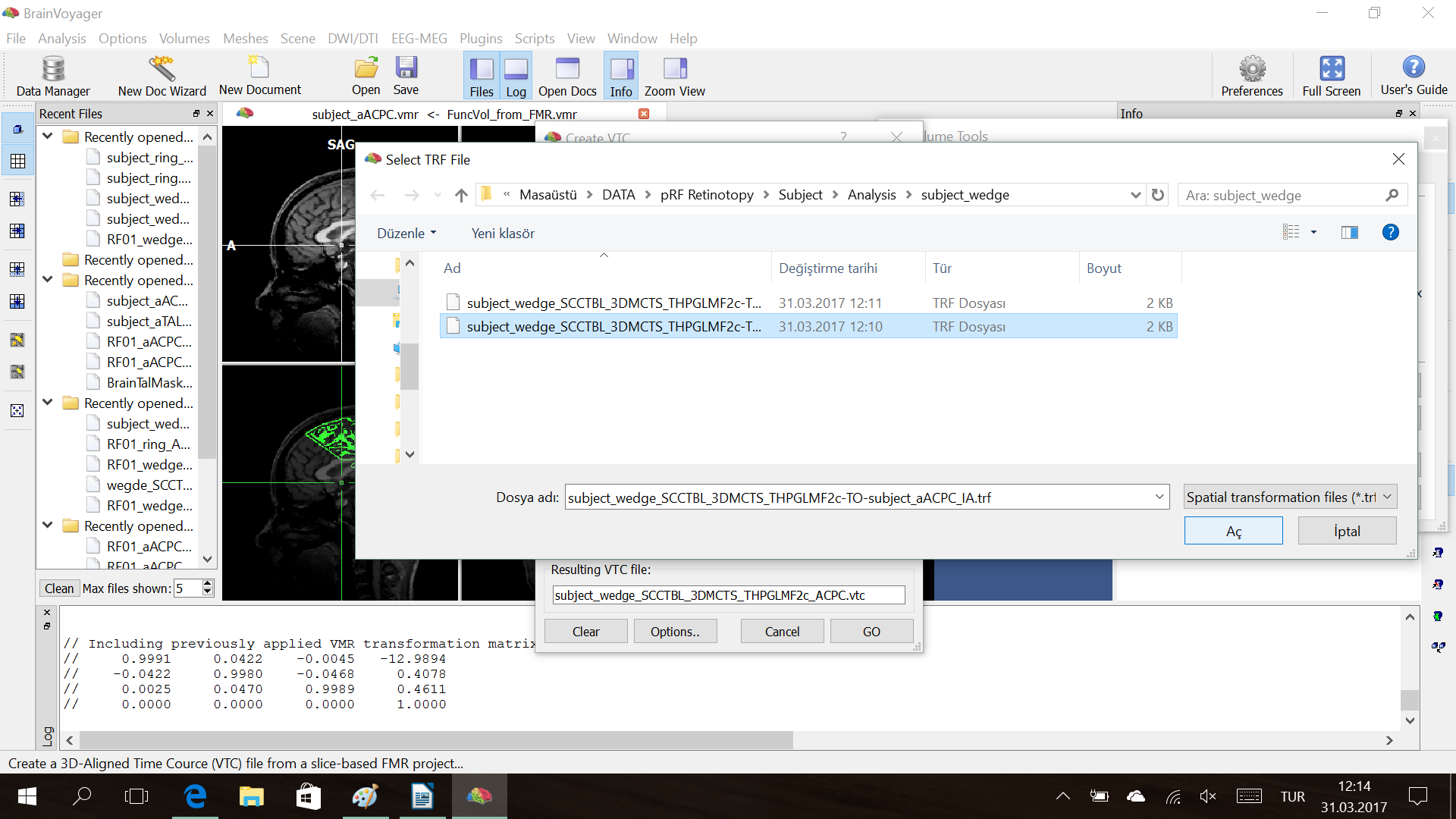
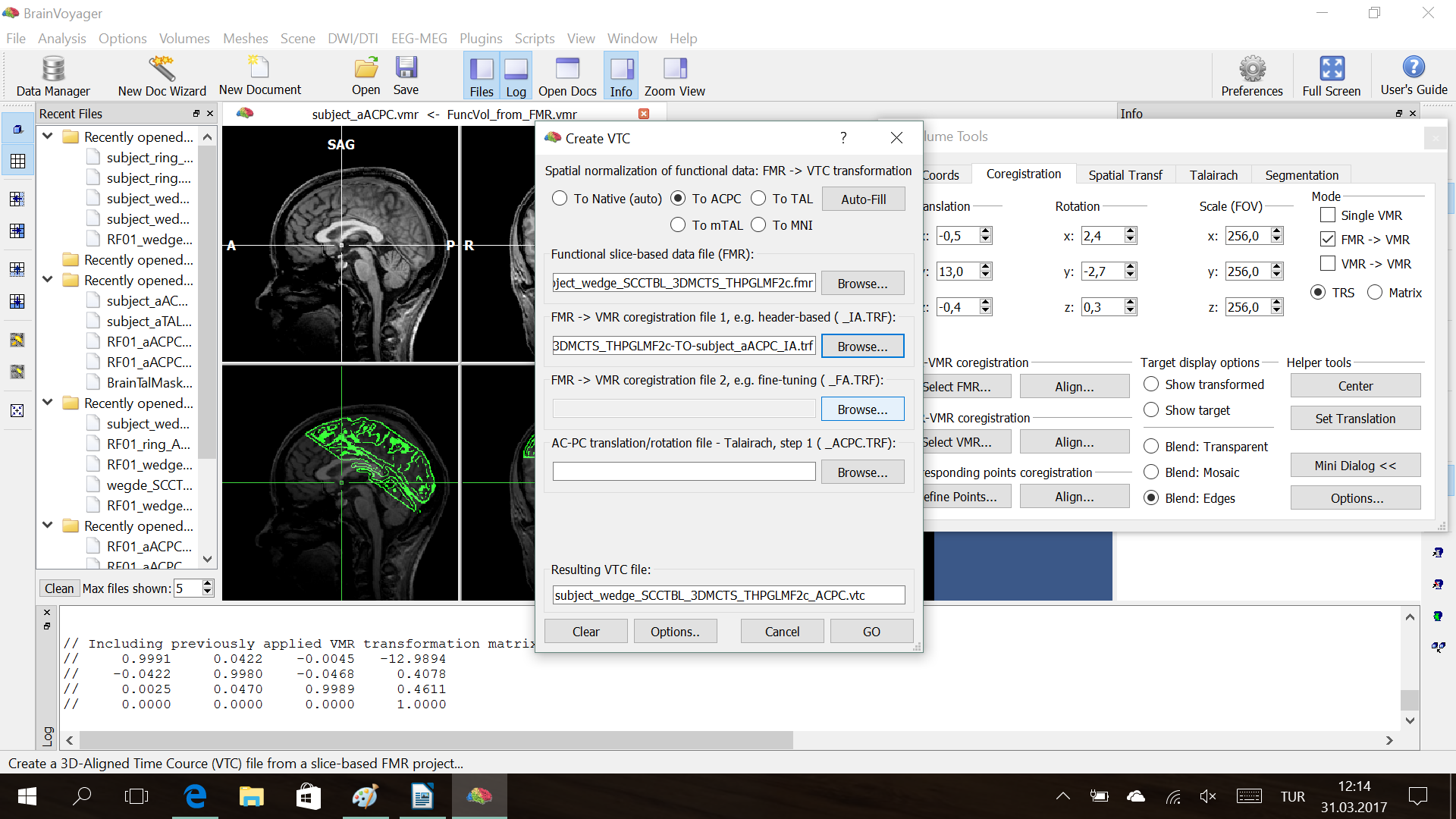
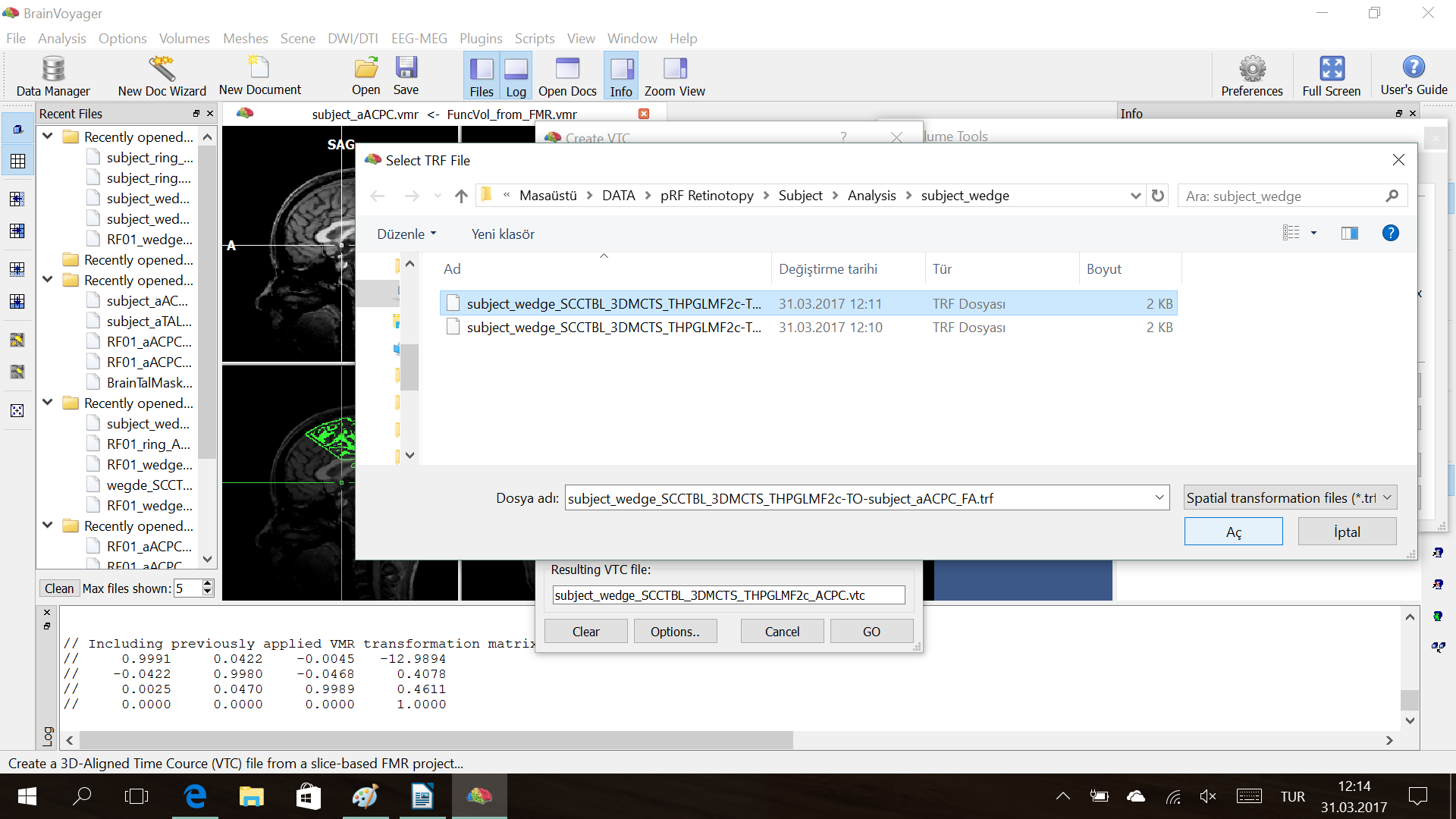
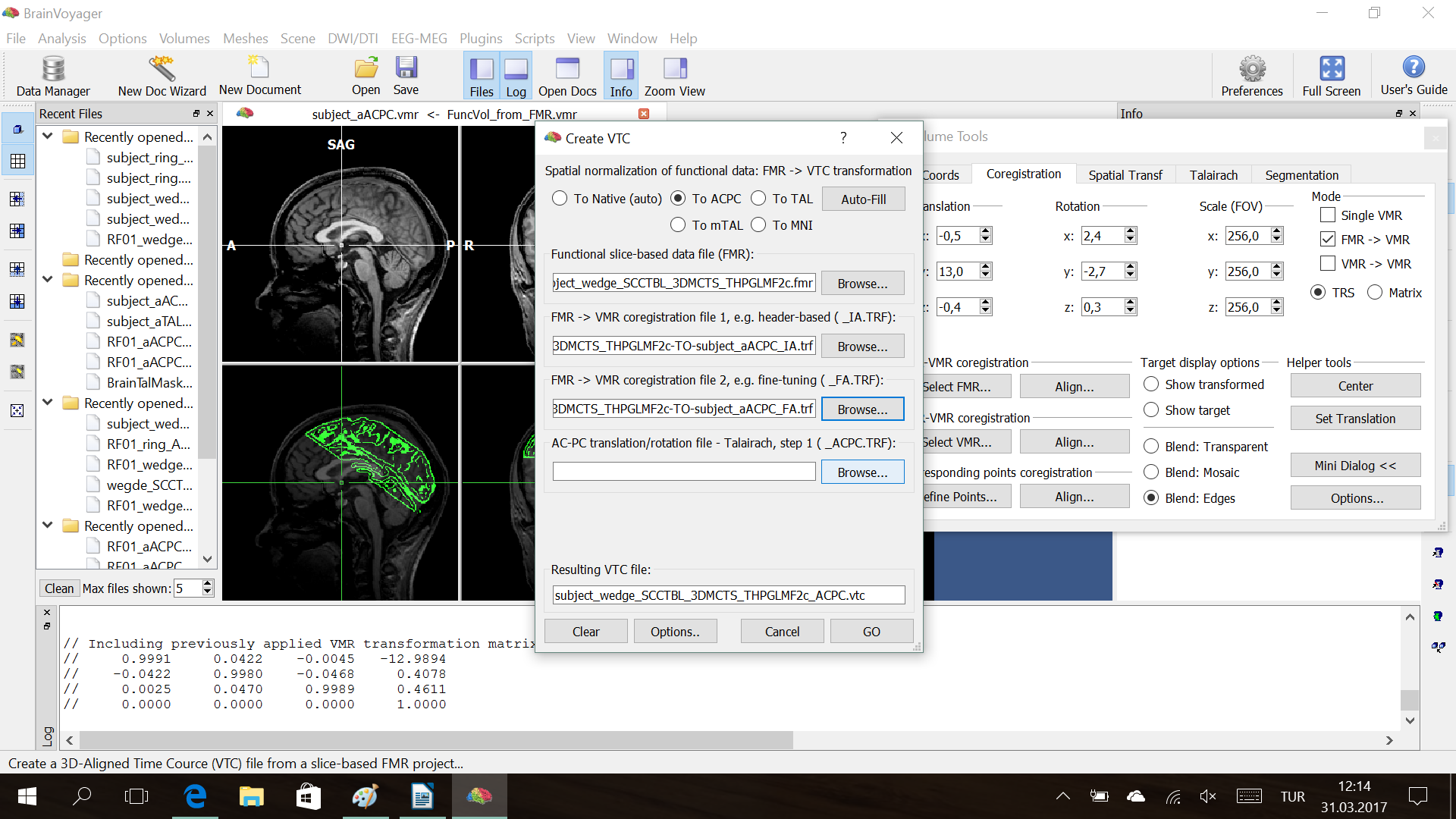

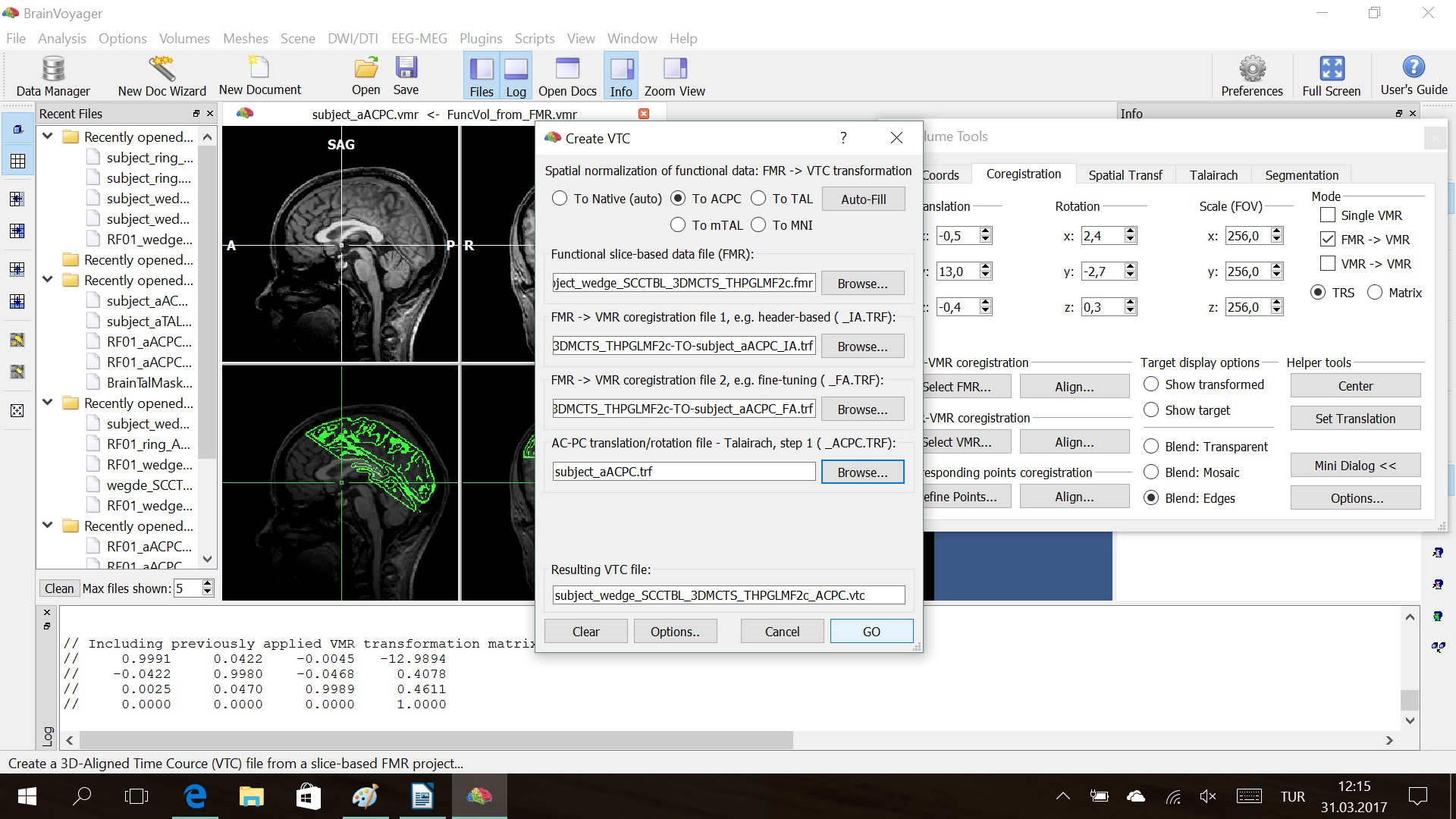
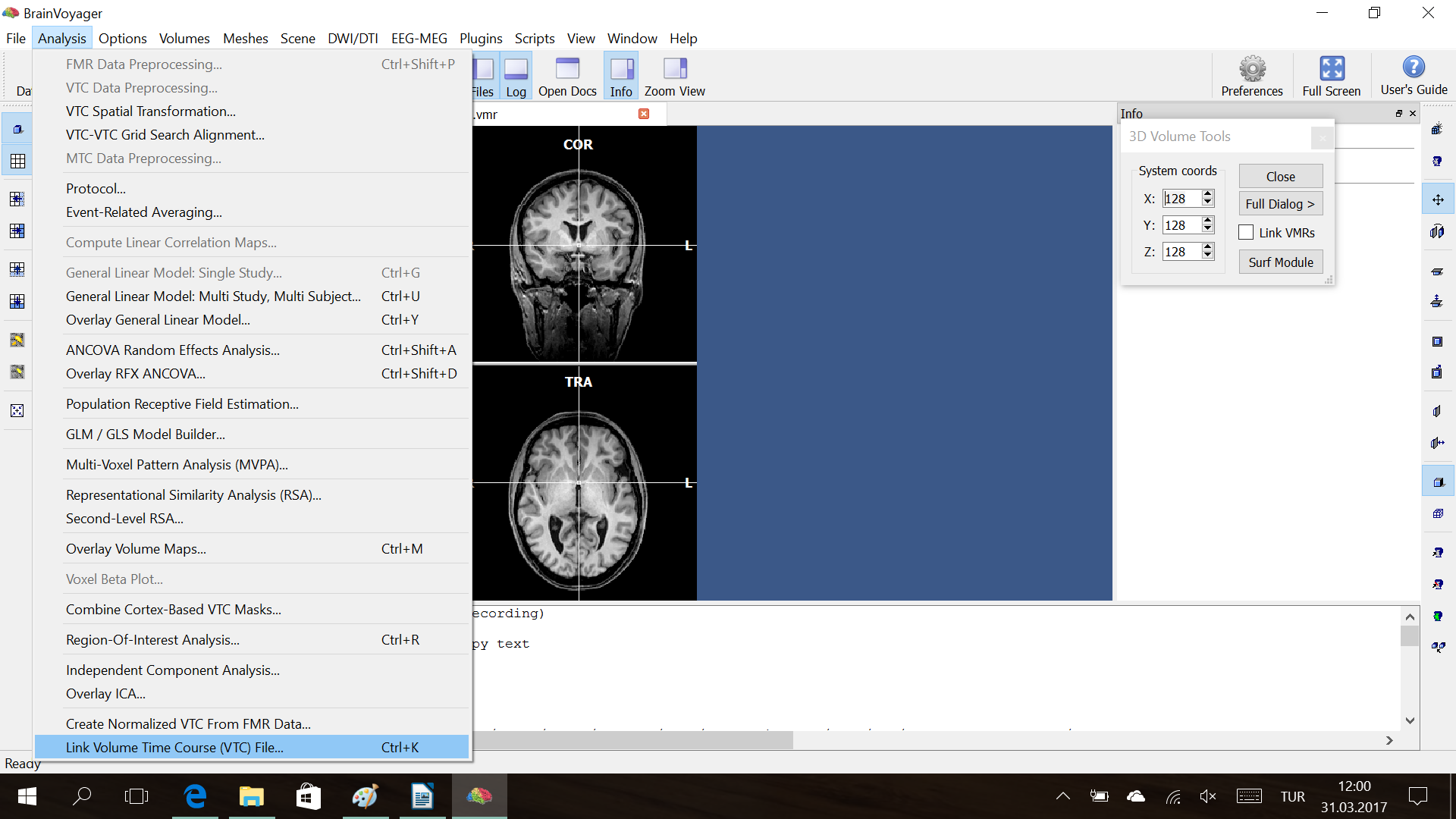
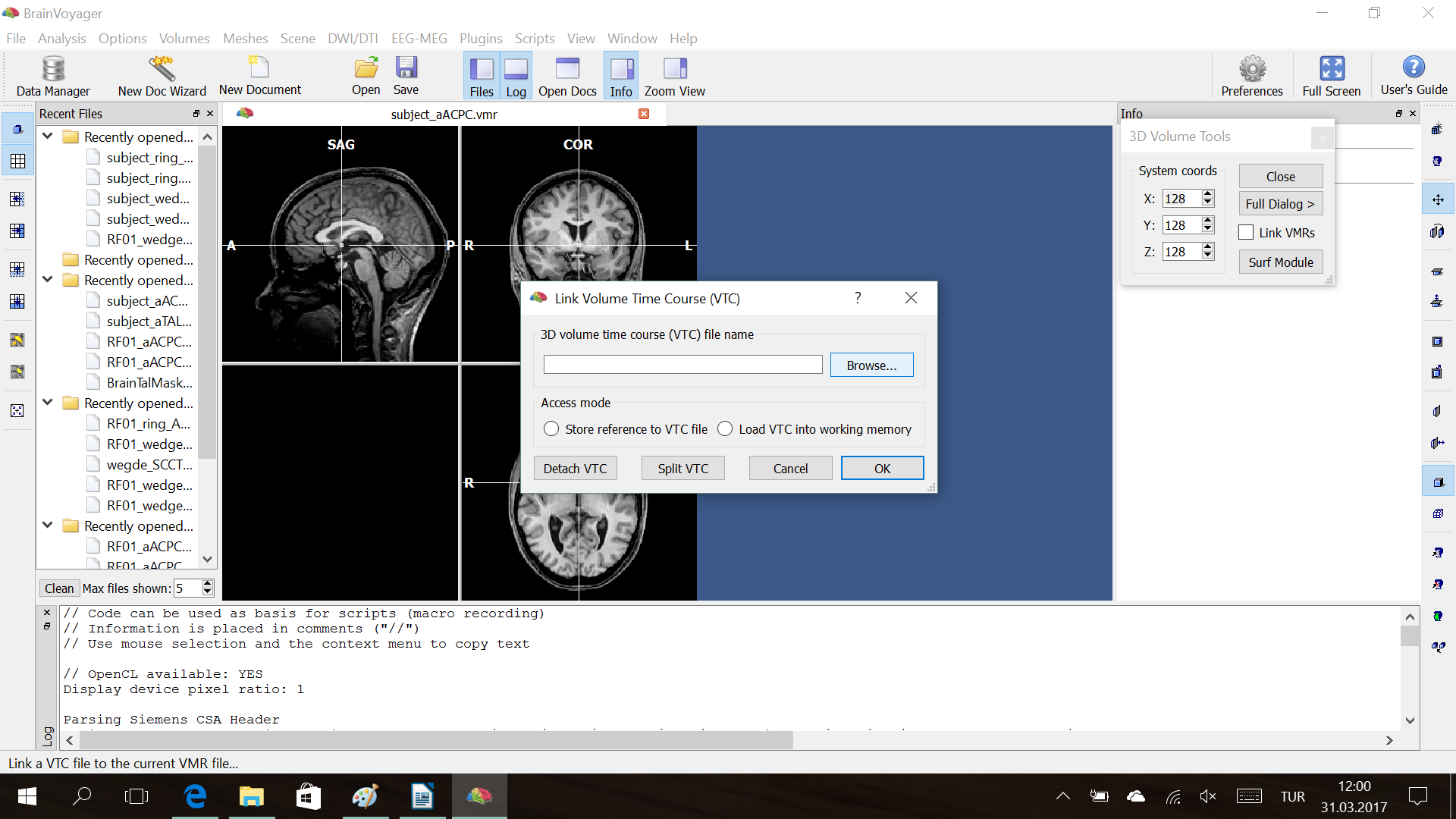

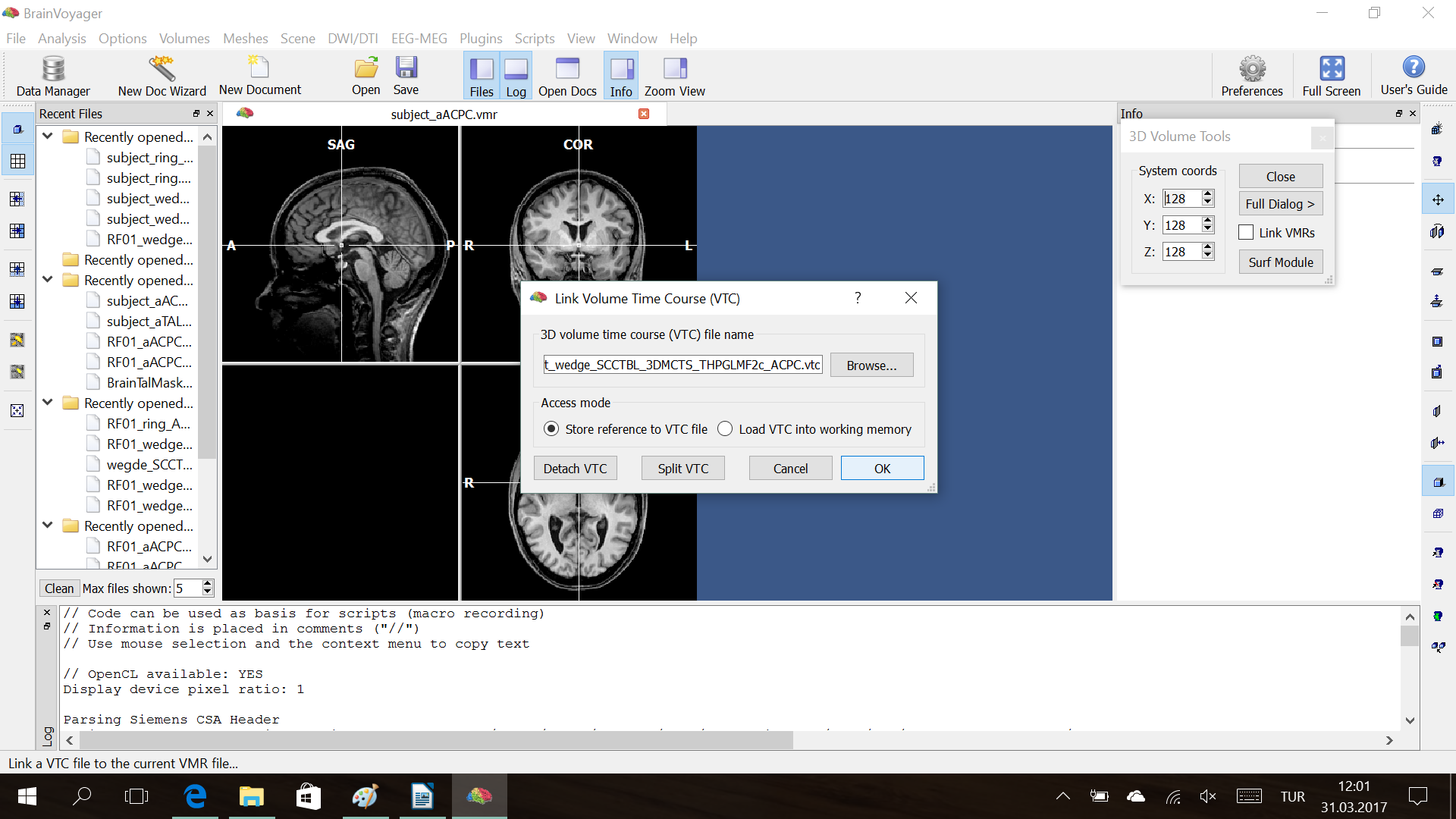


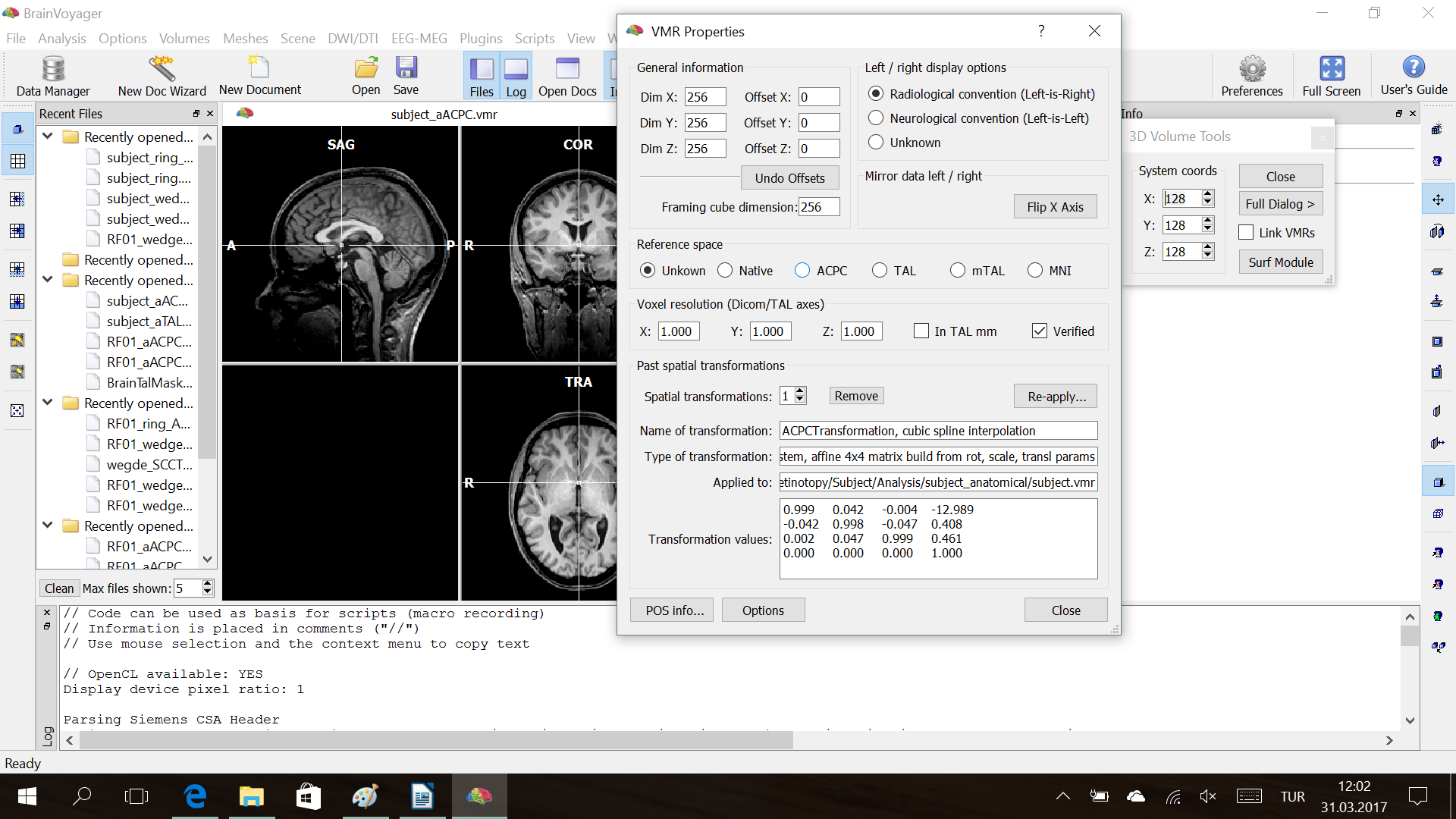
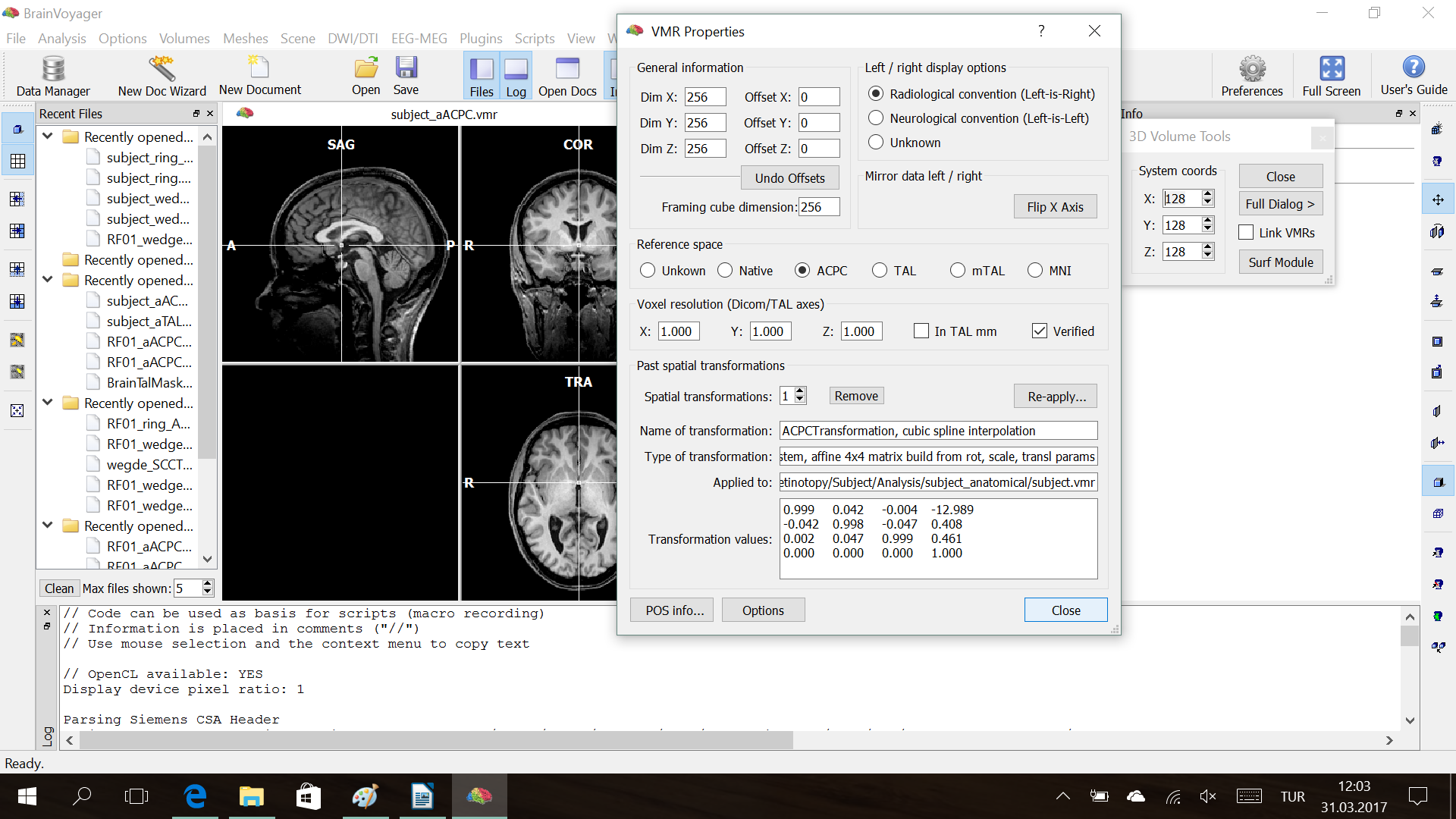
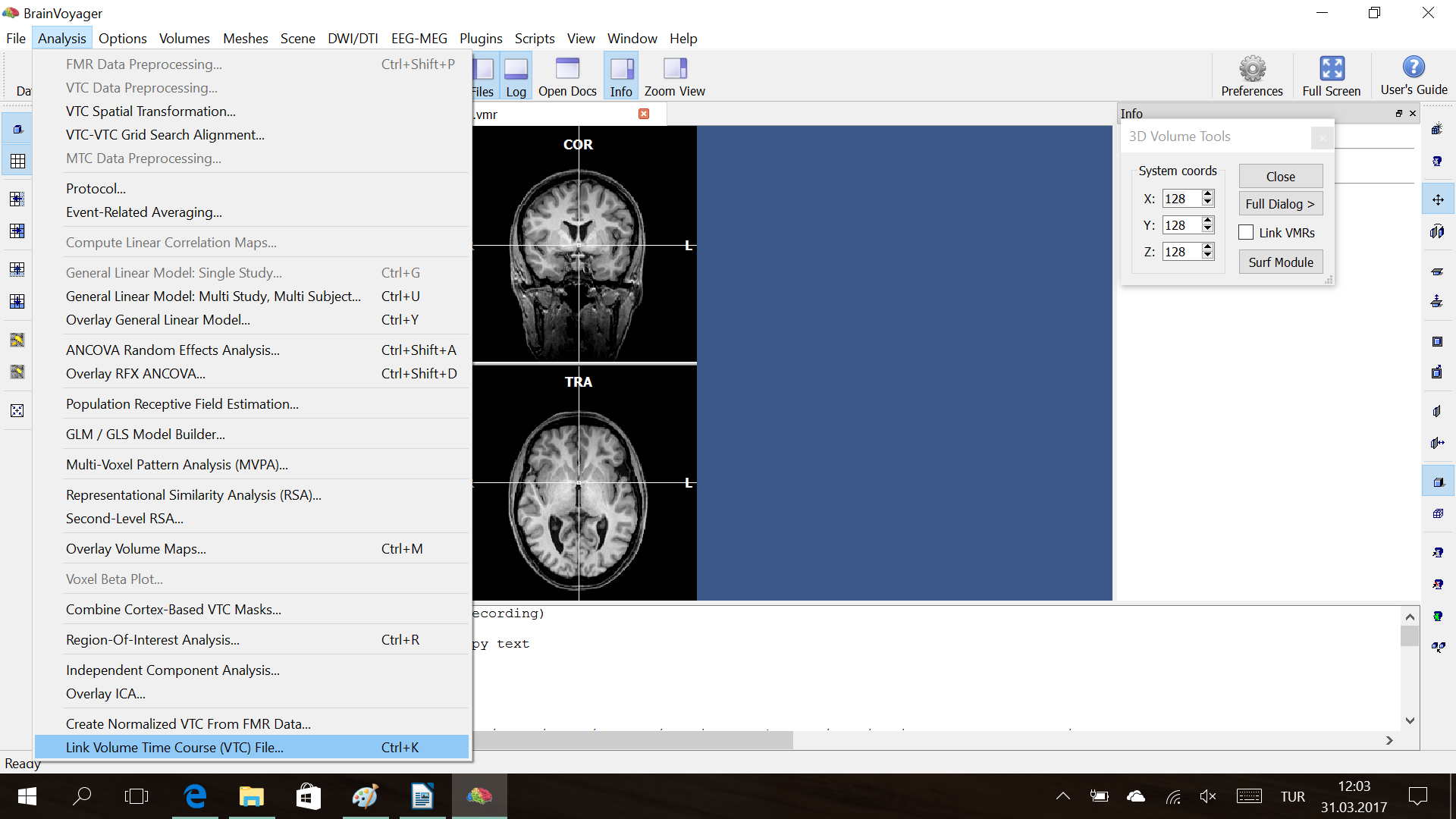

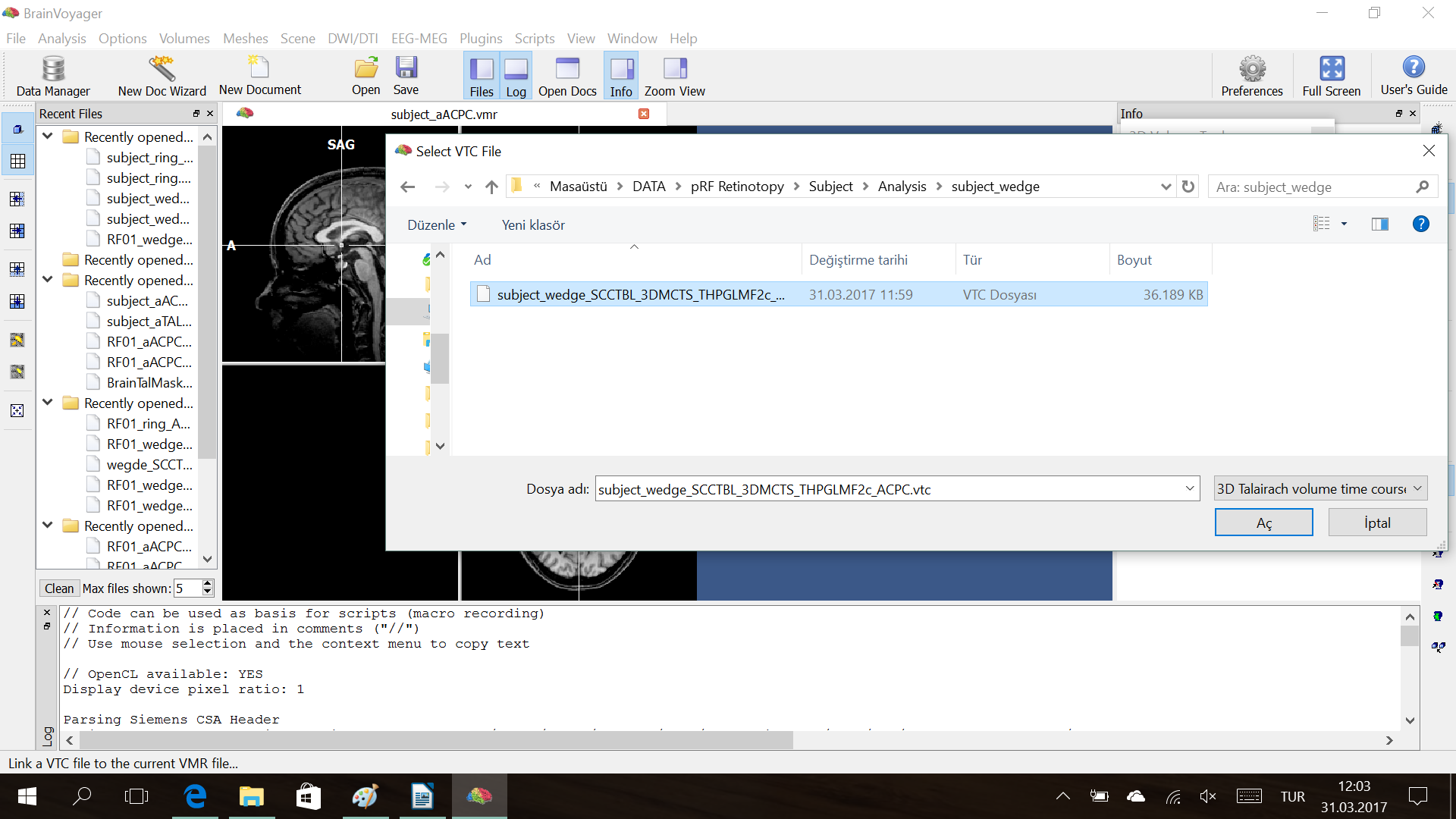
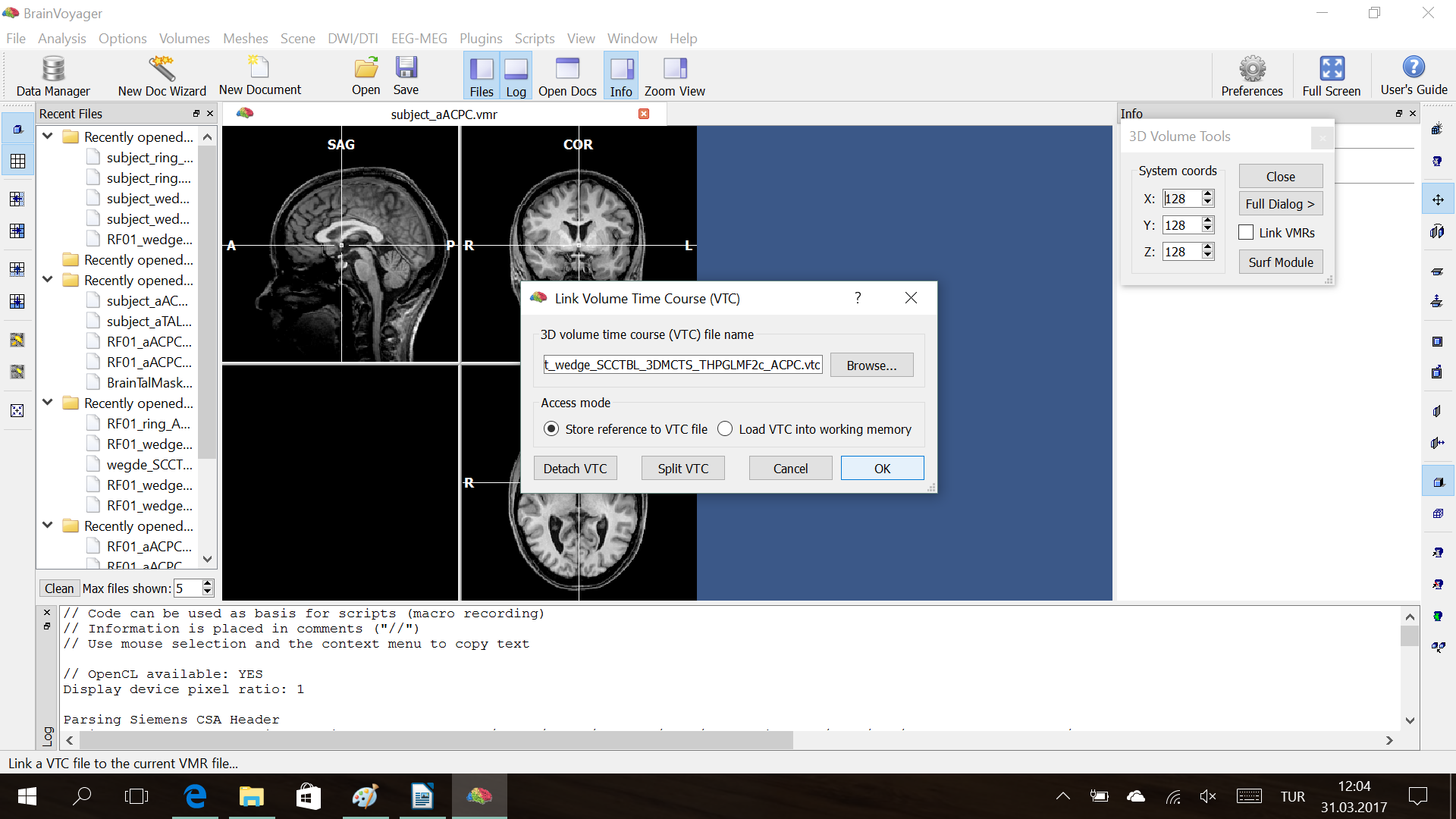
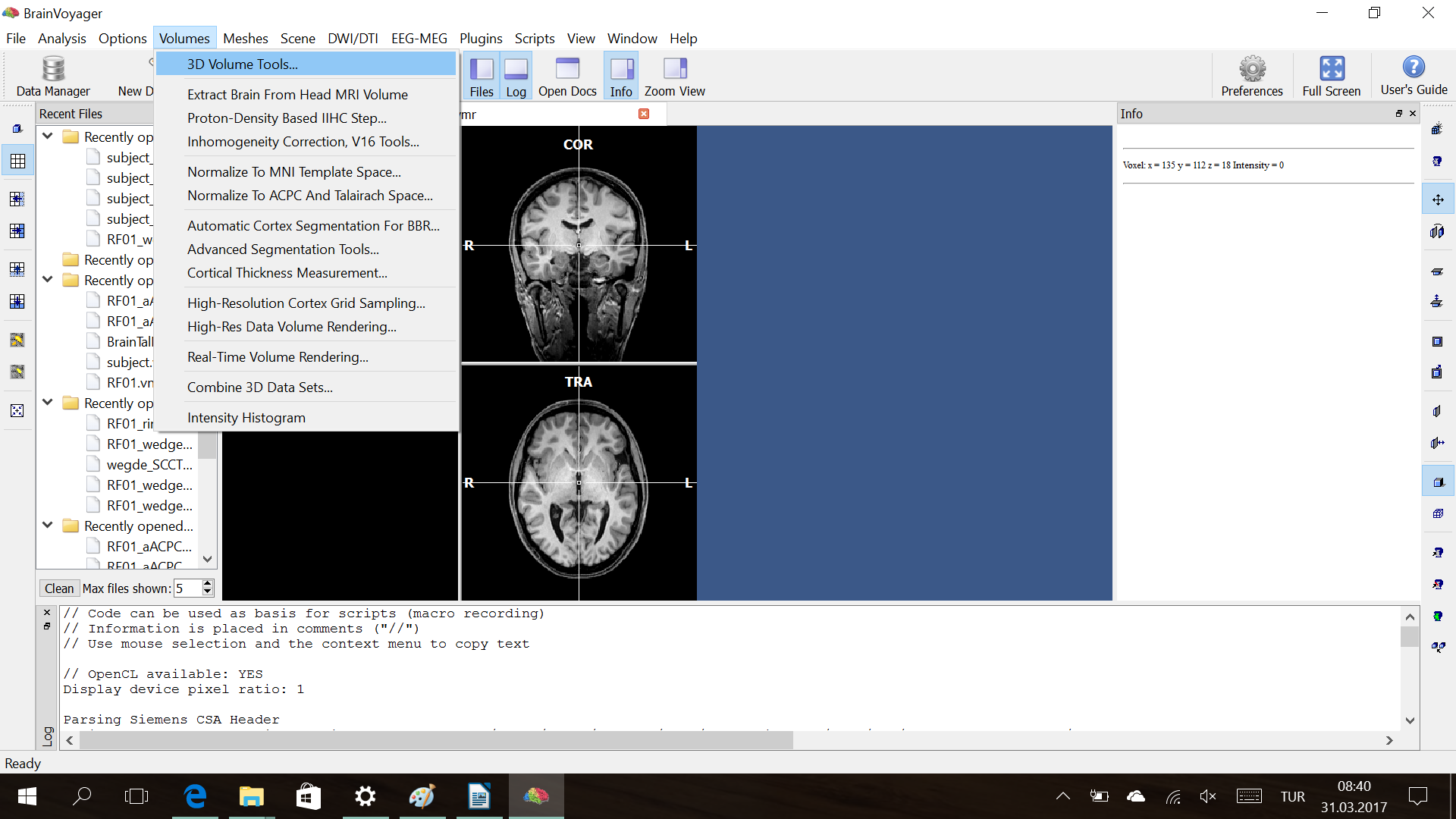

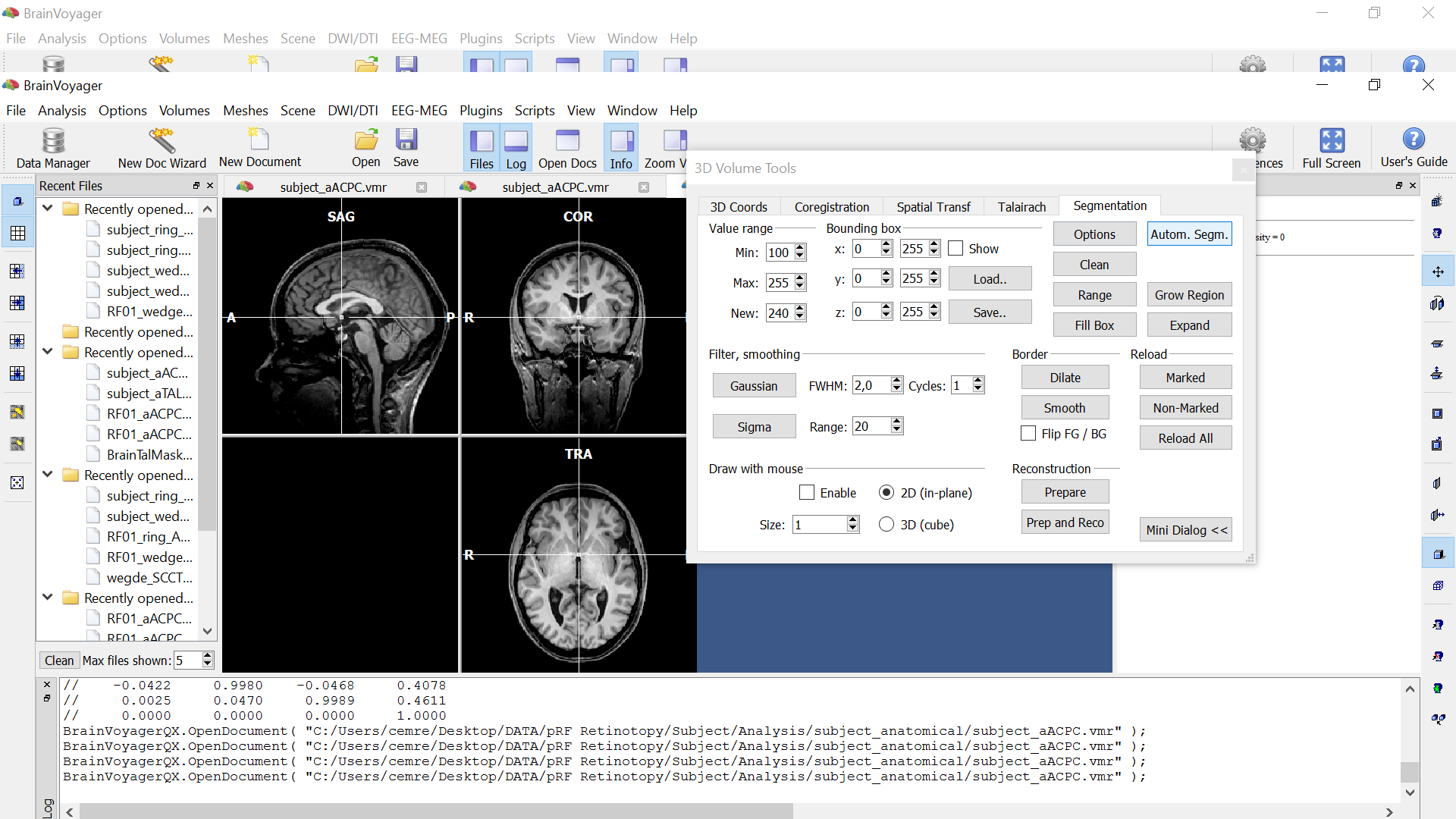
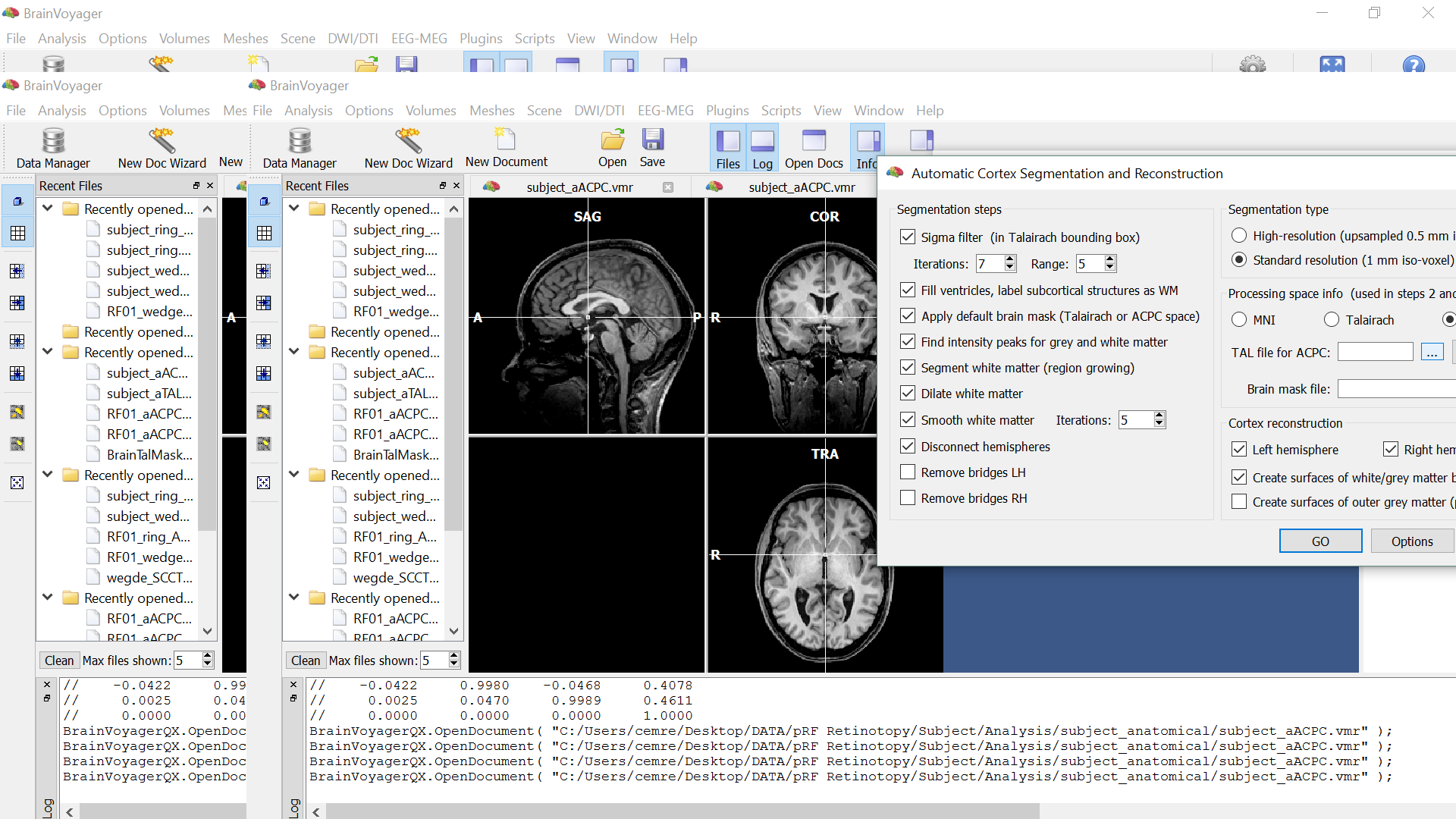
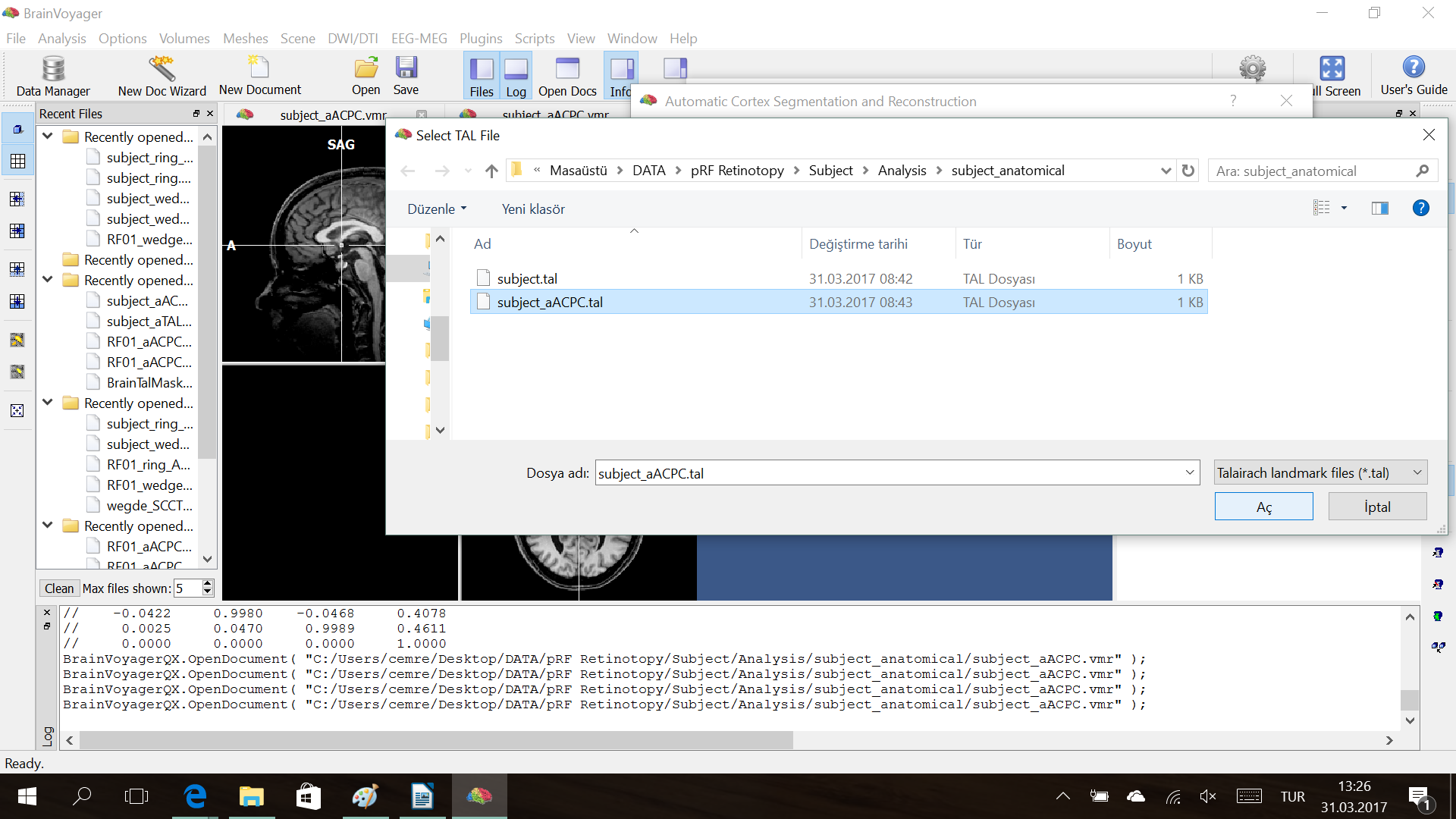
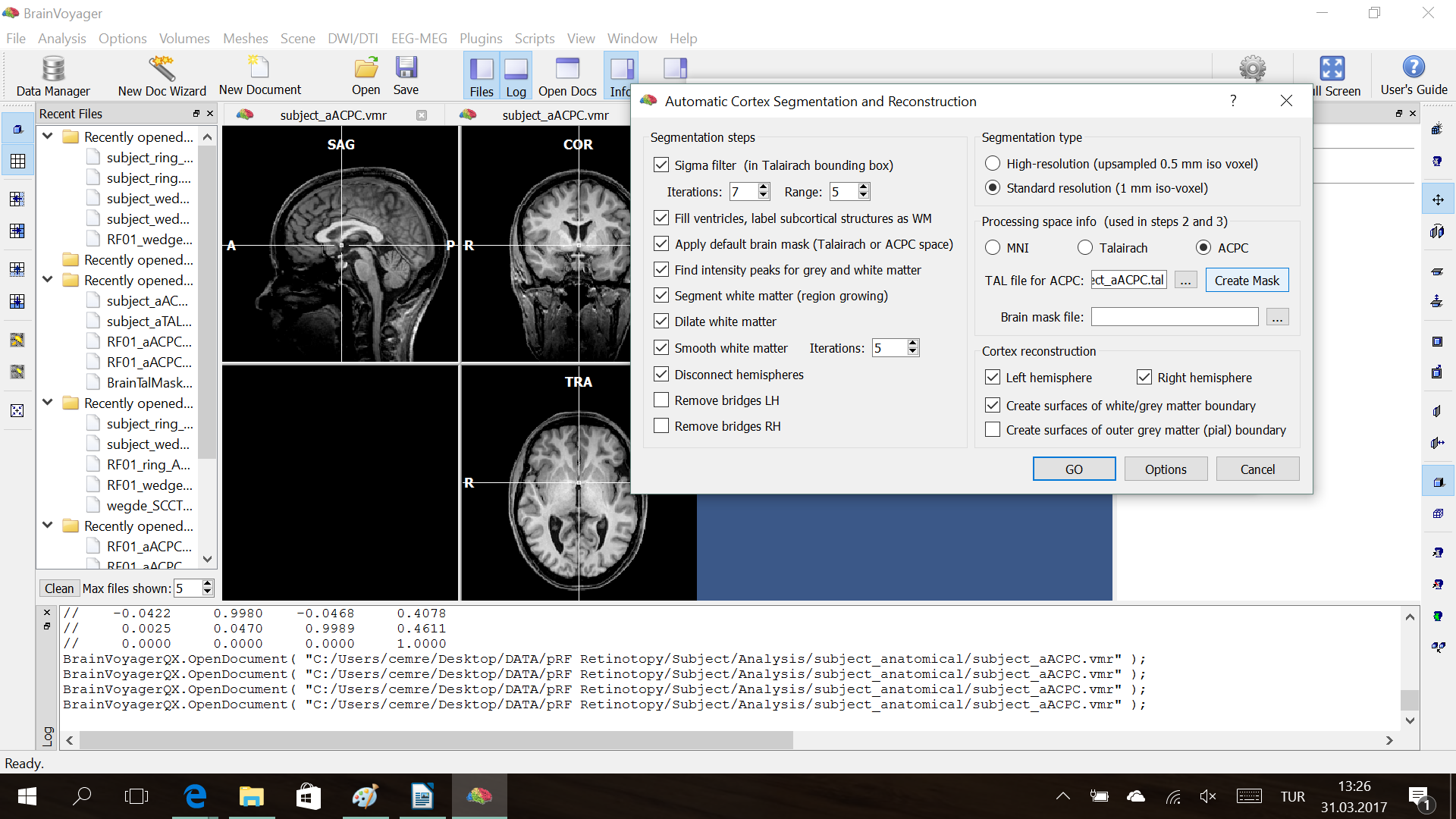
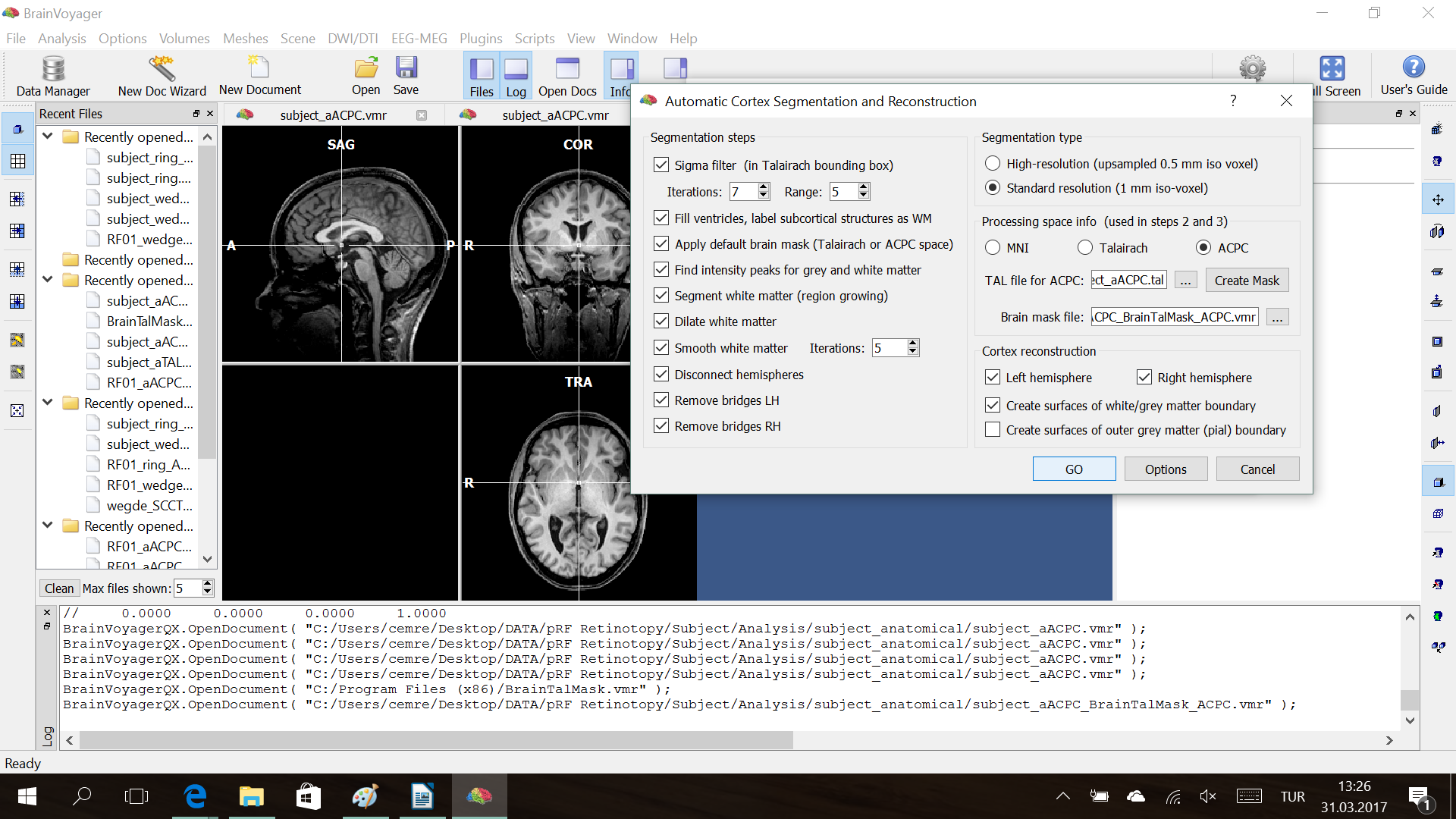
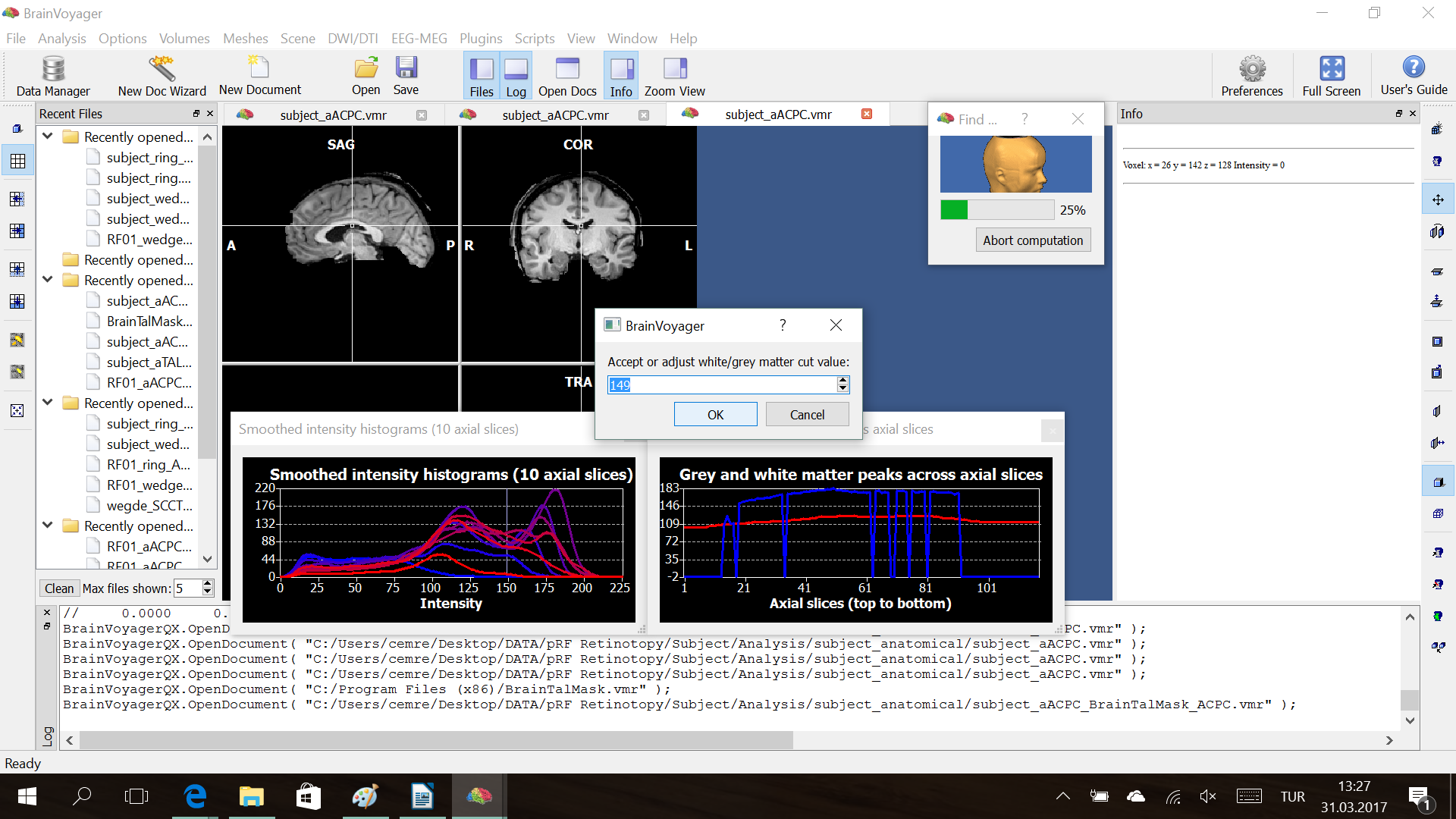

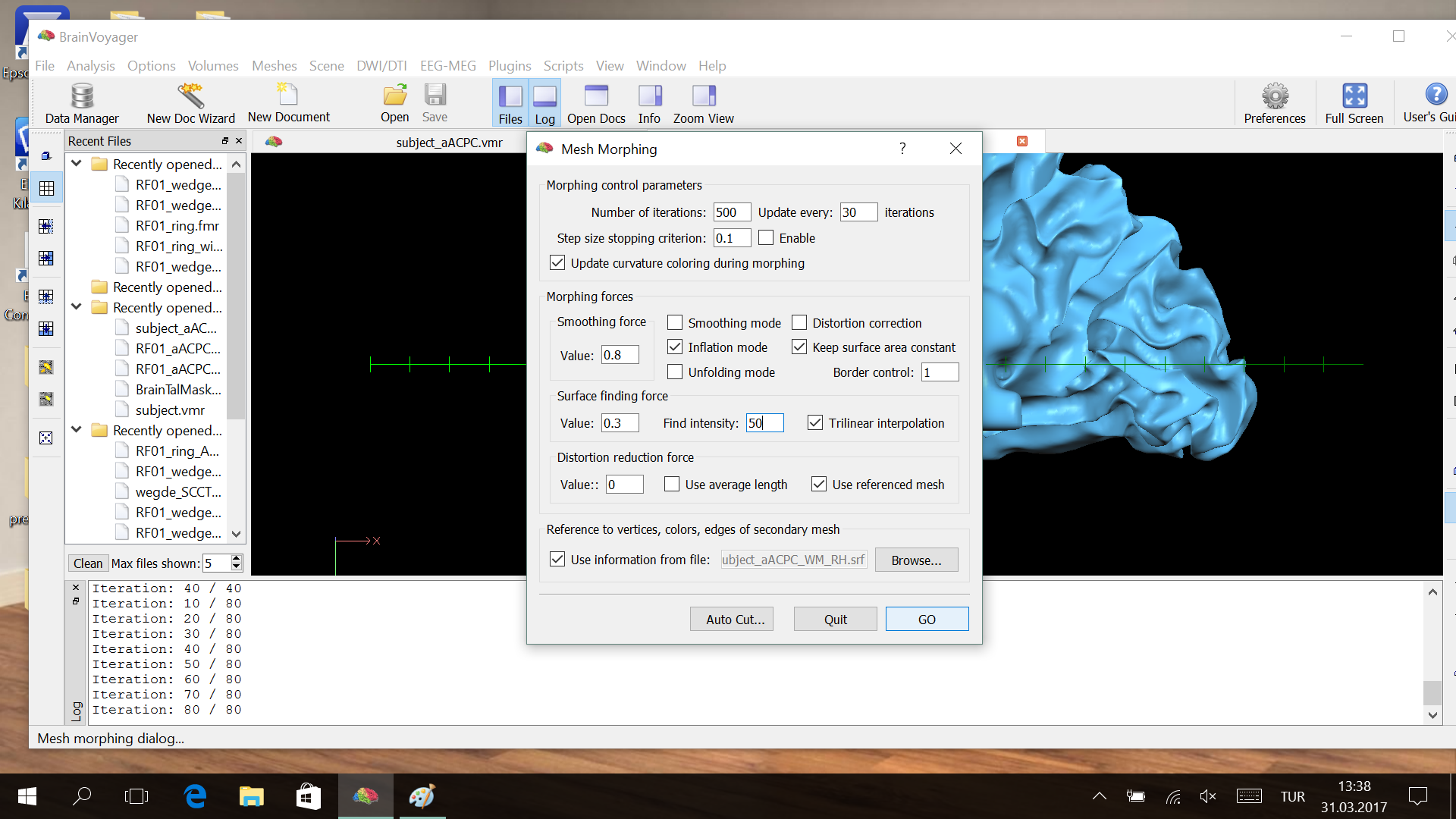

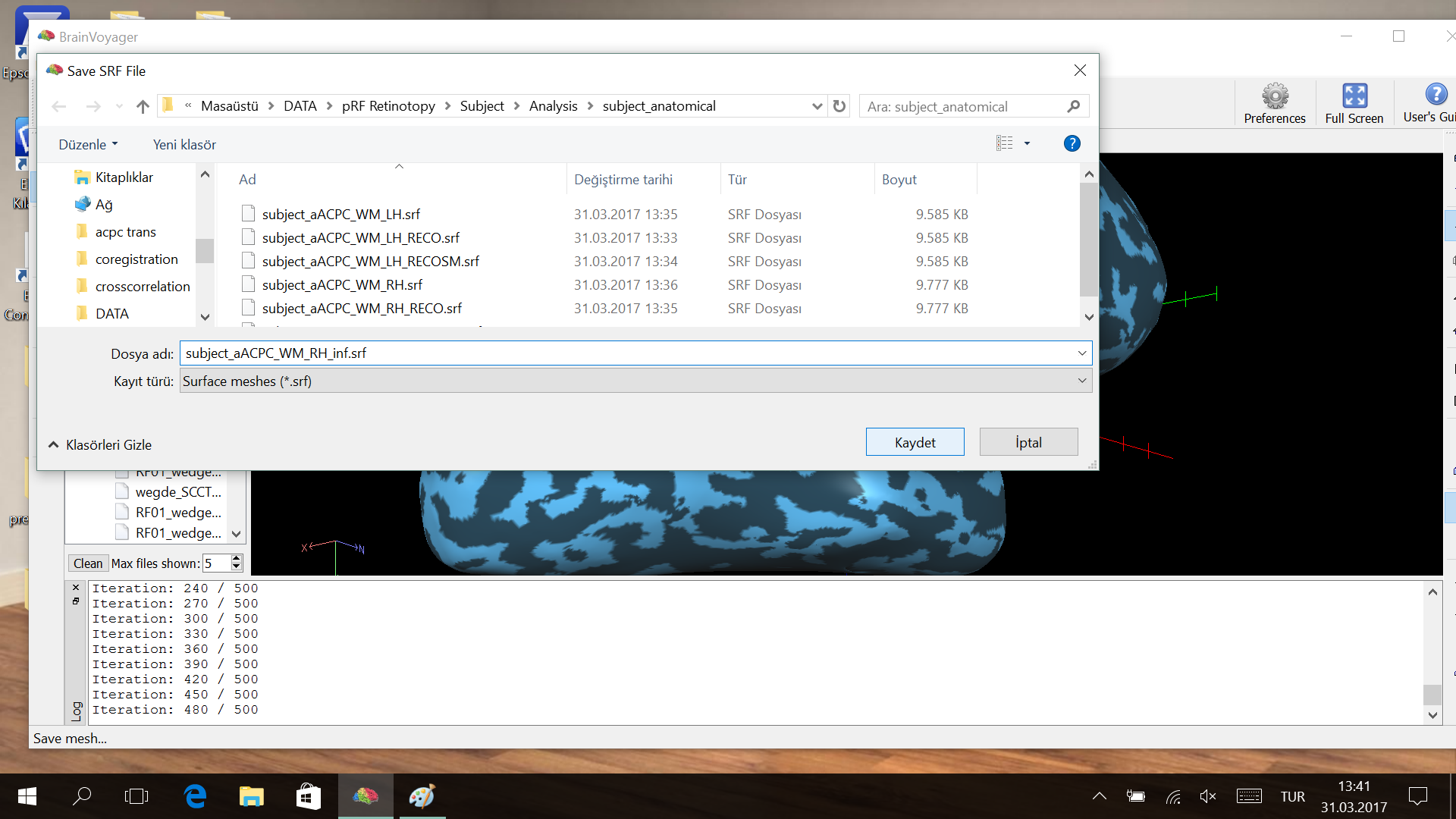

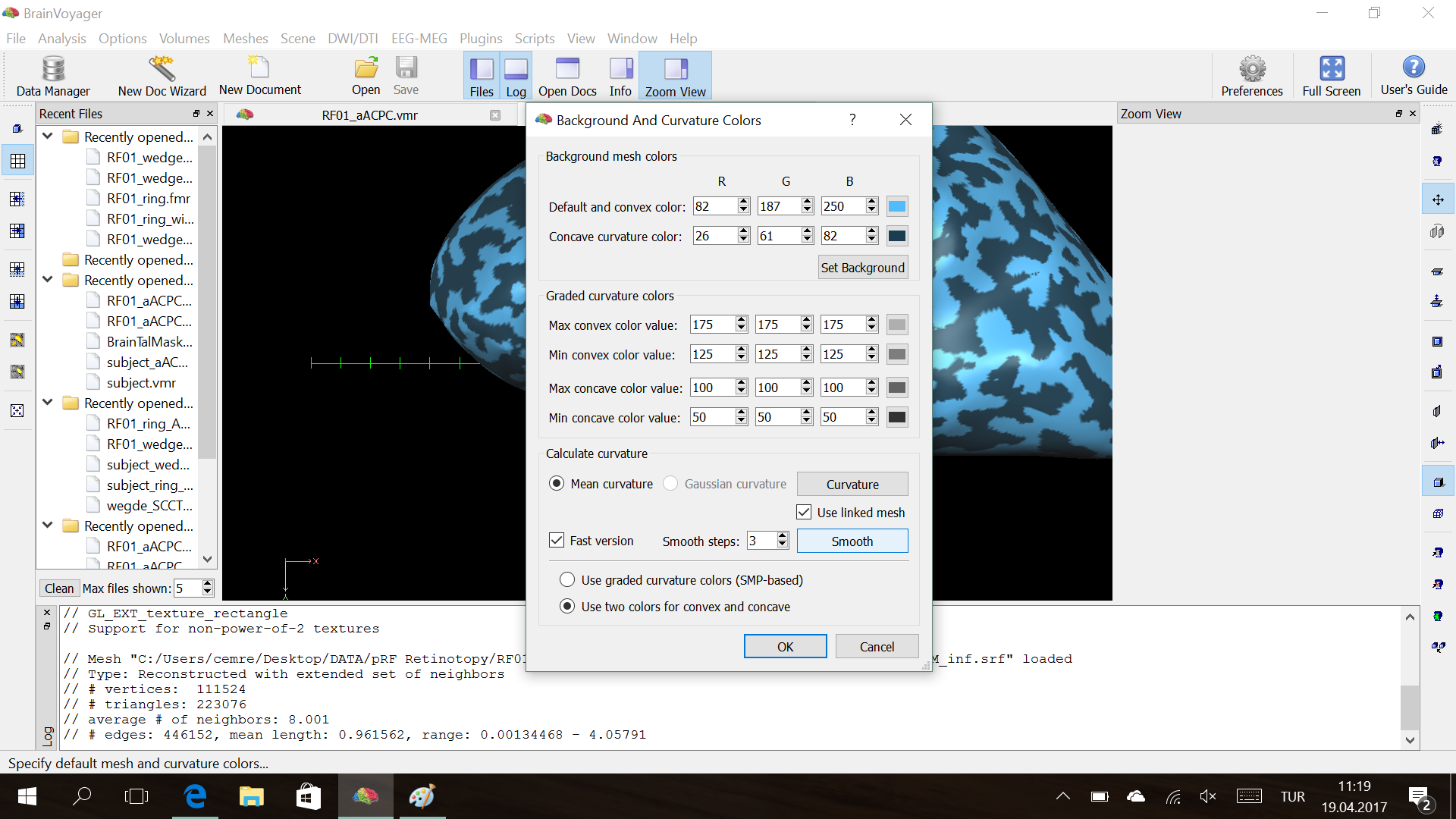

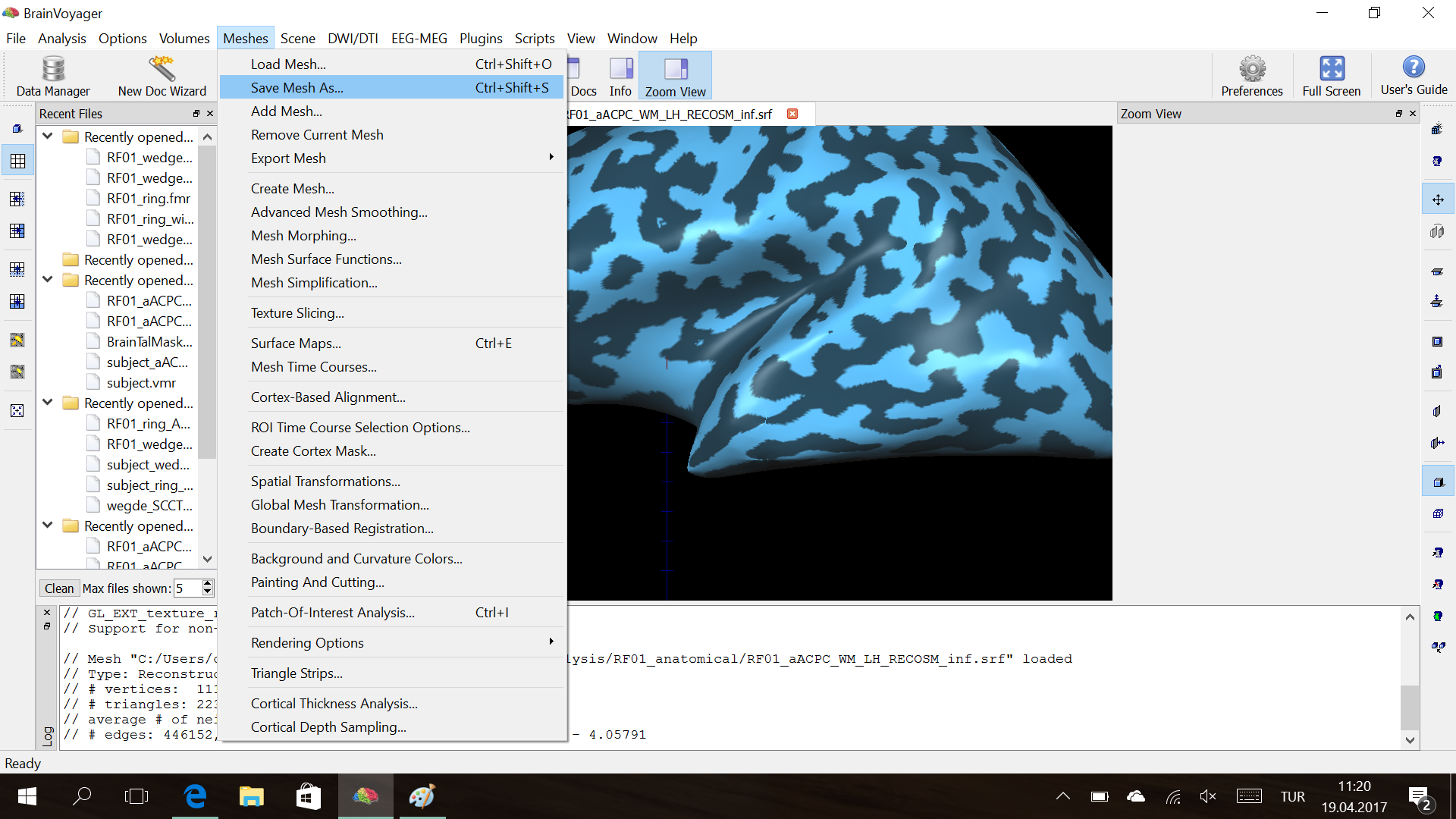
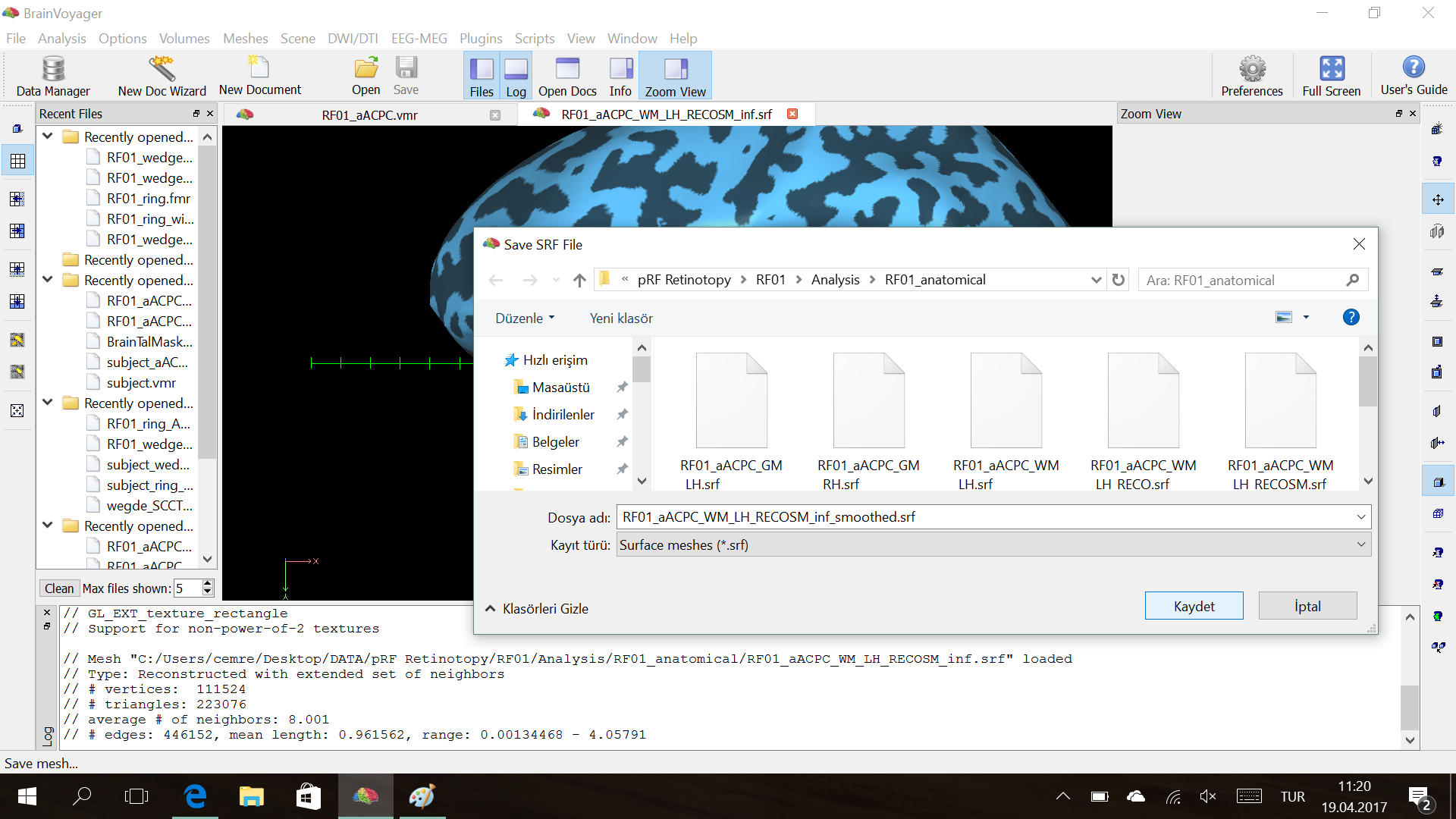
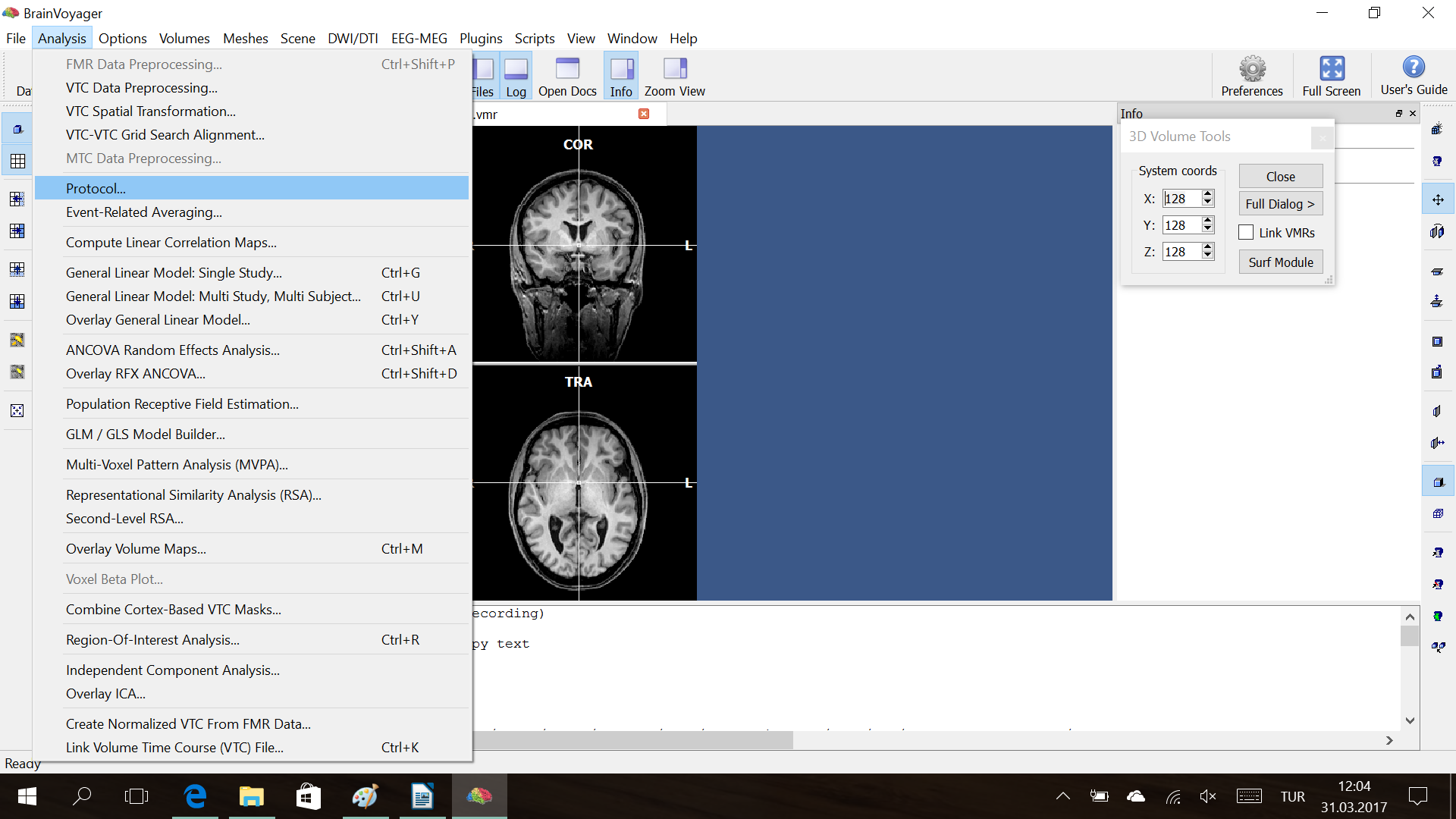
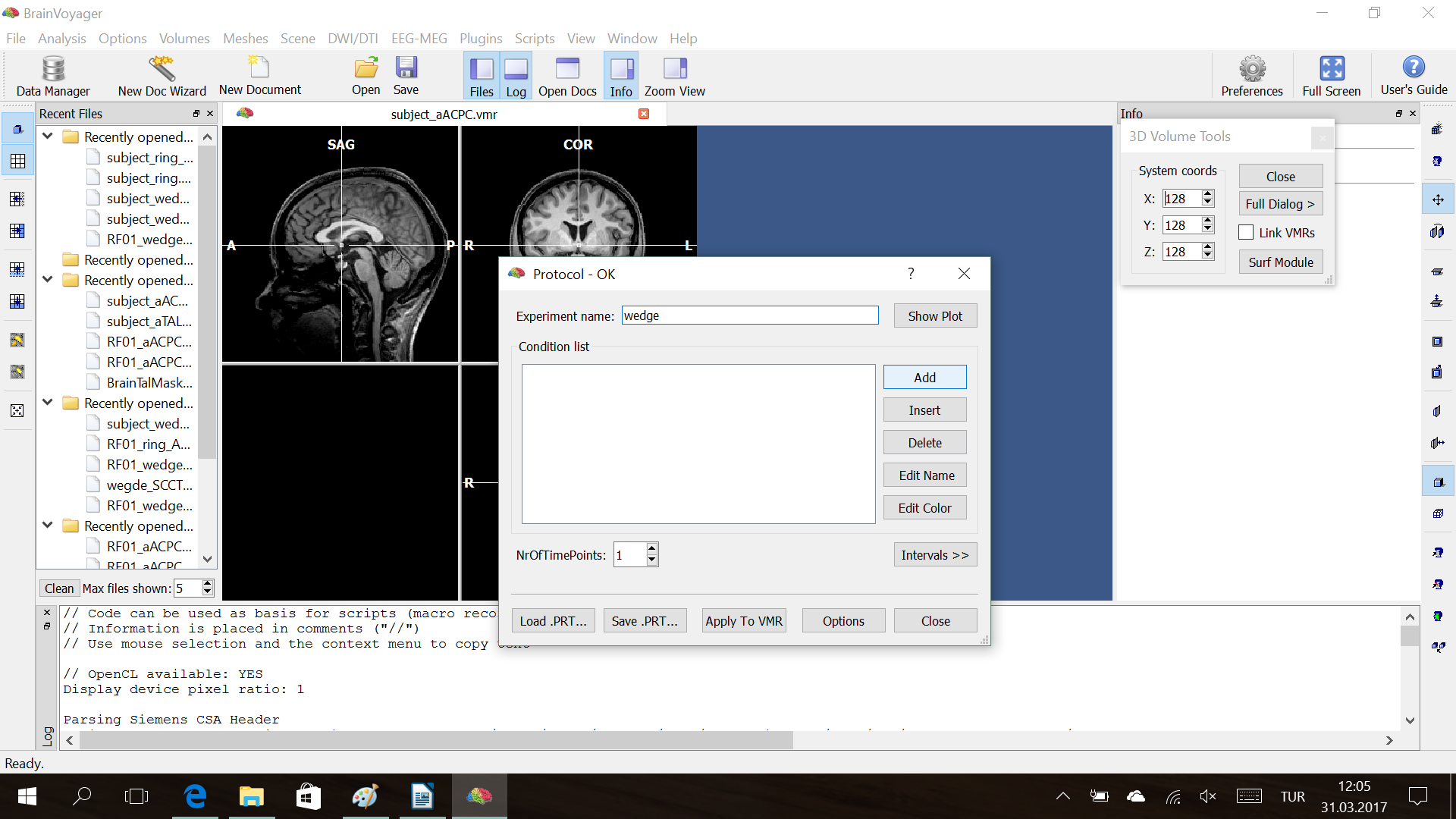
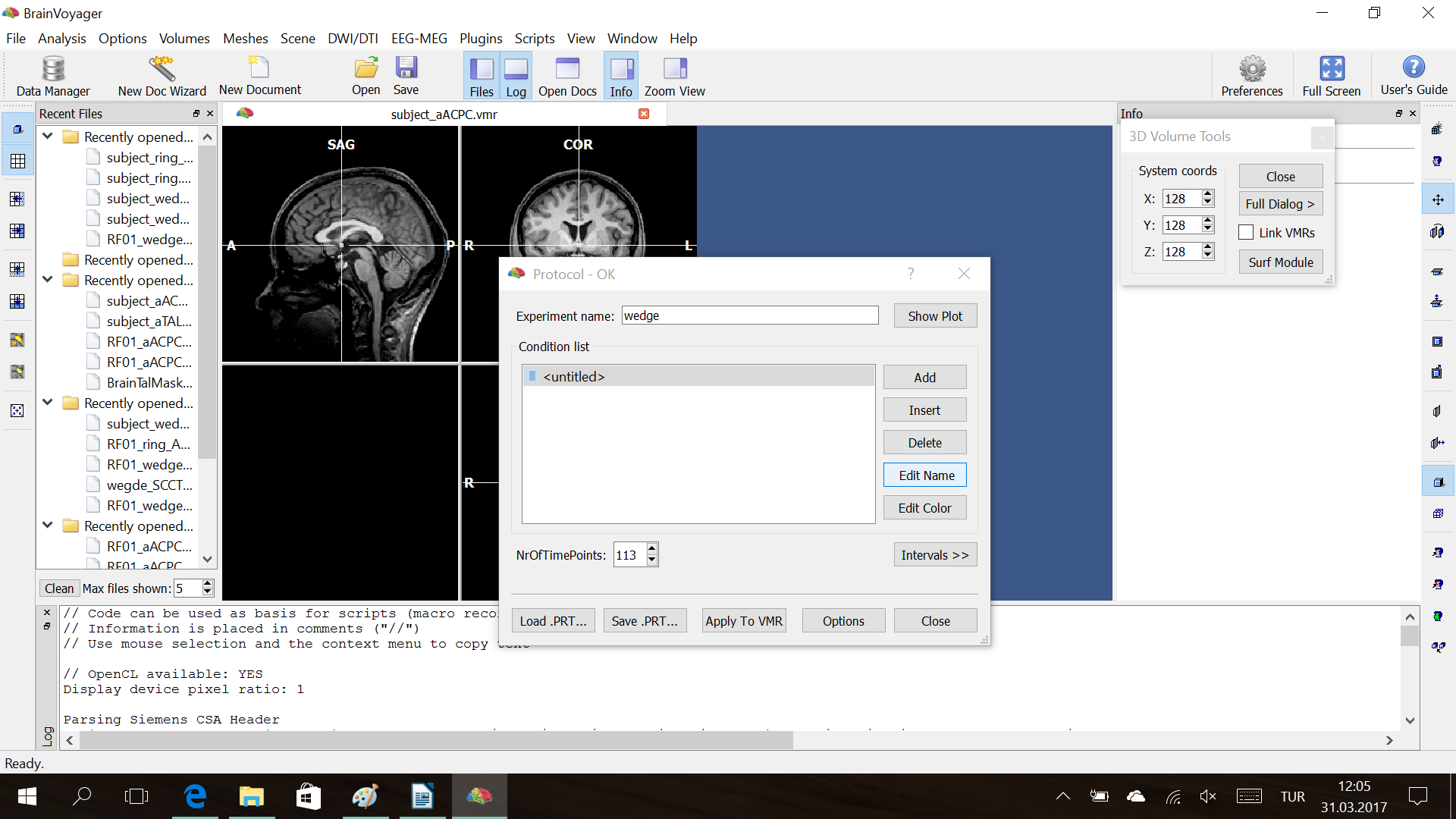
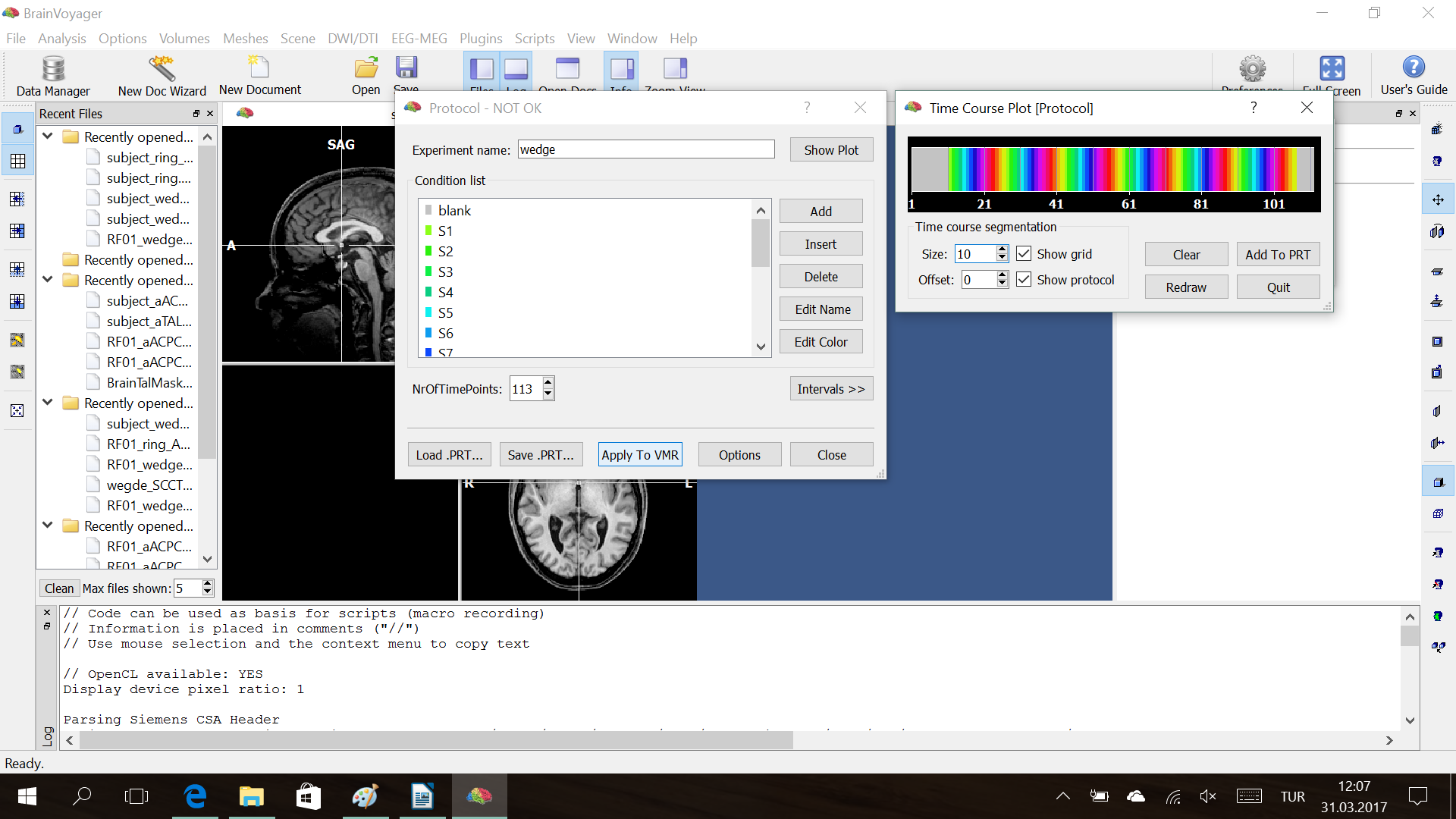
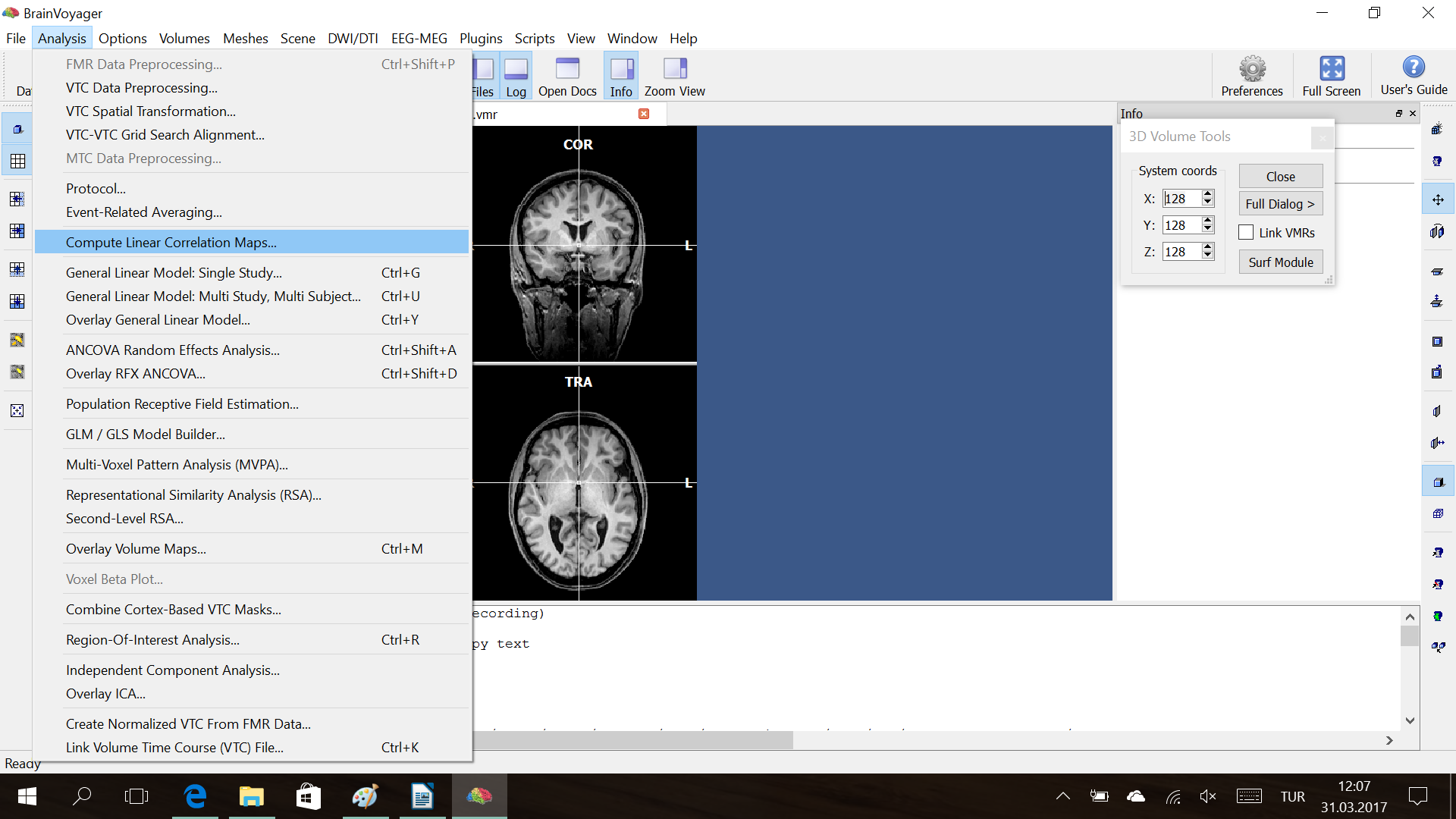





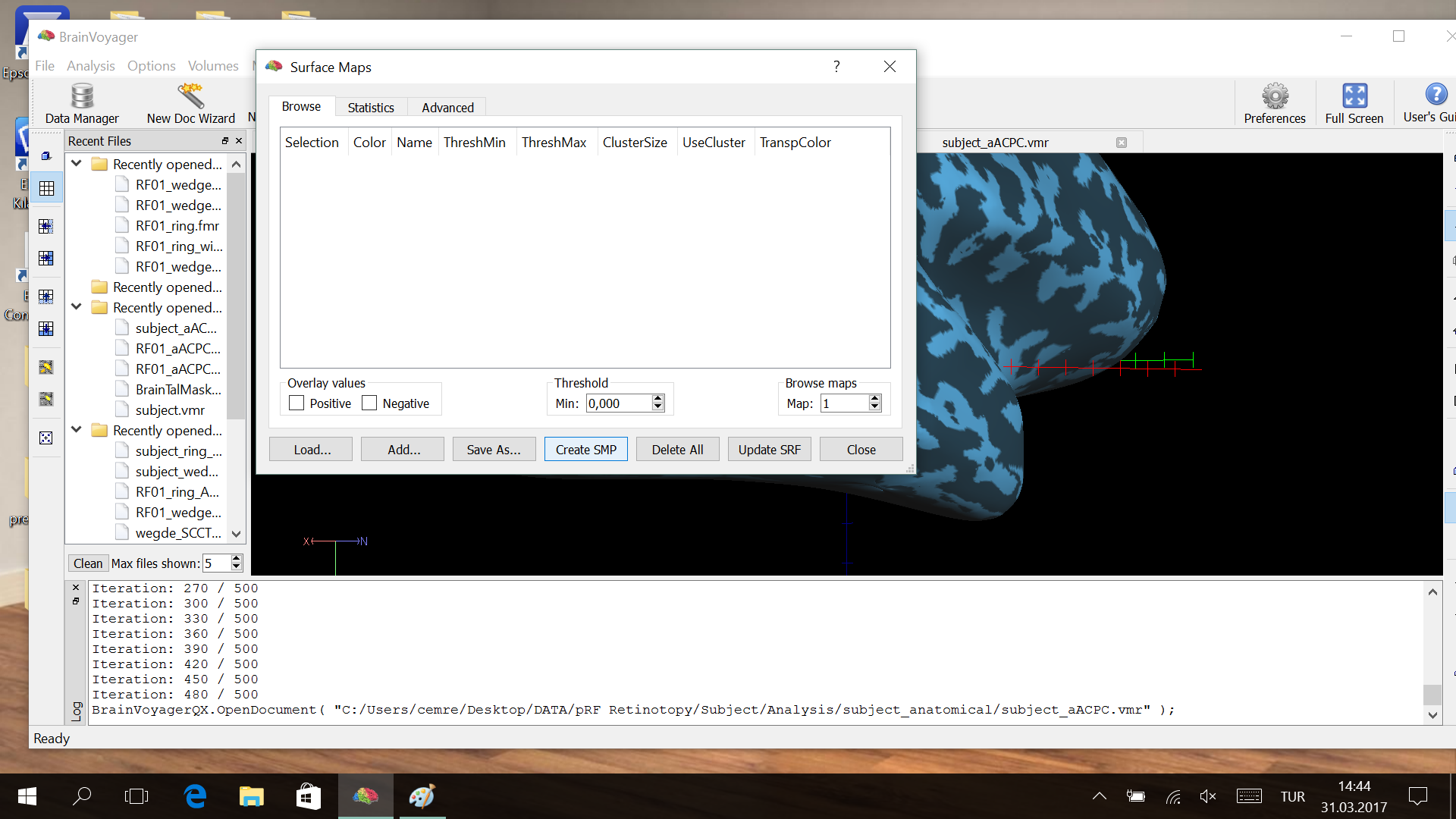
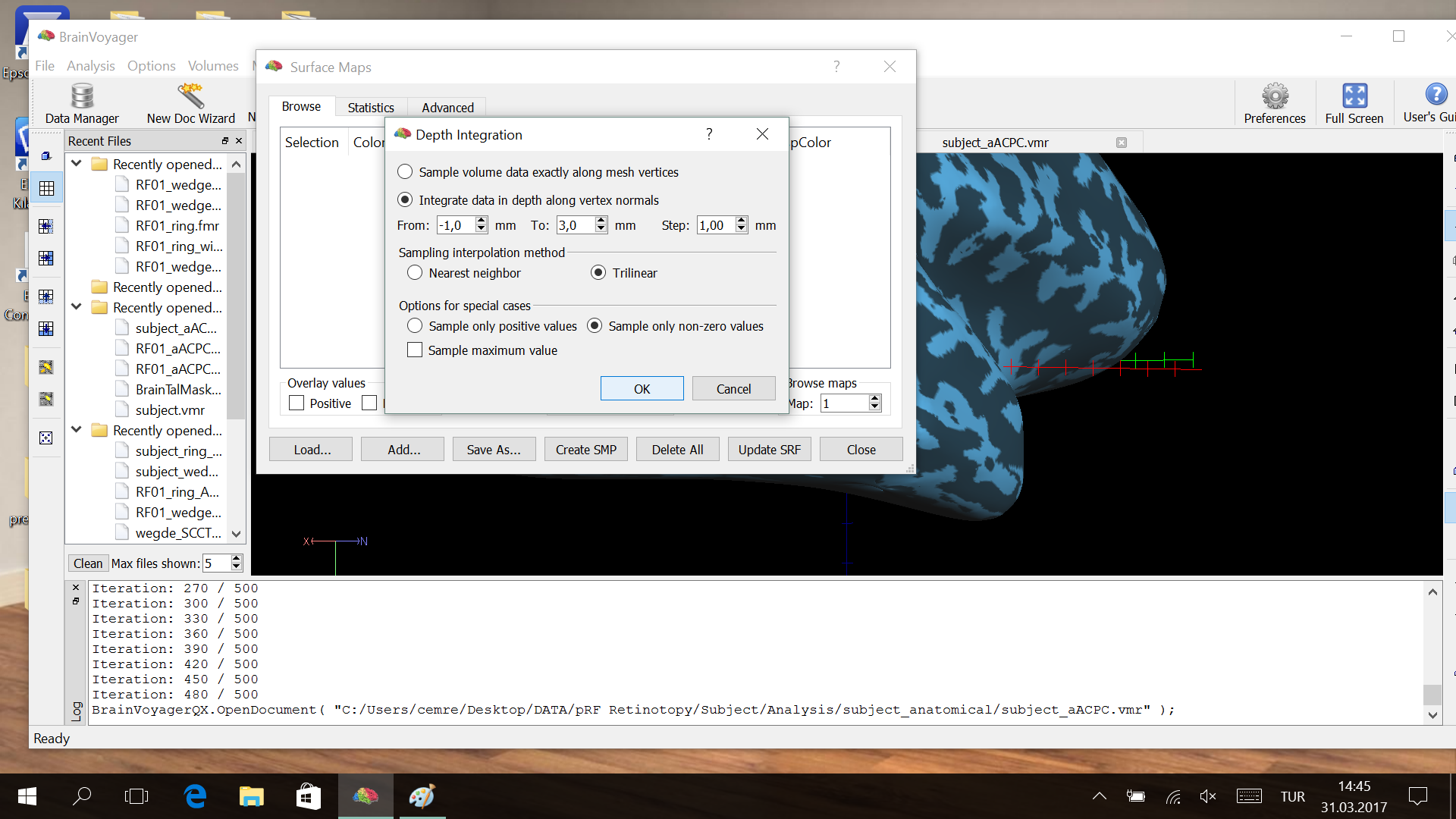

No responses yet